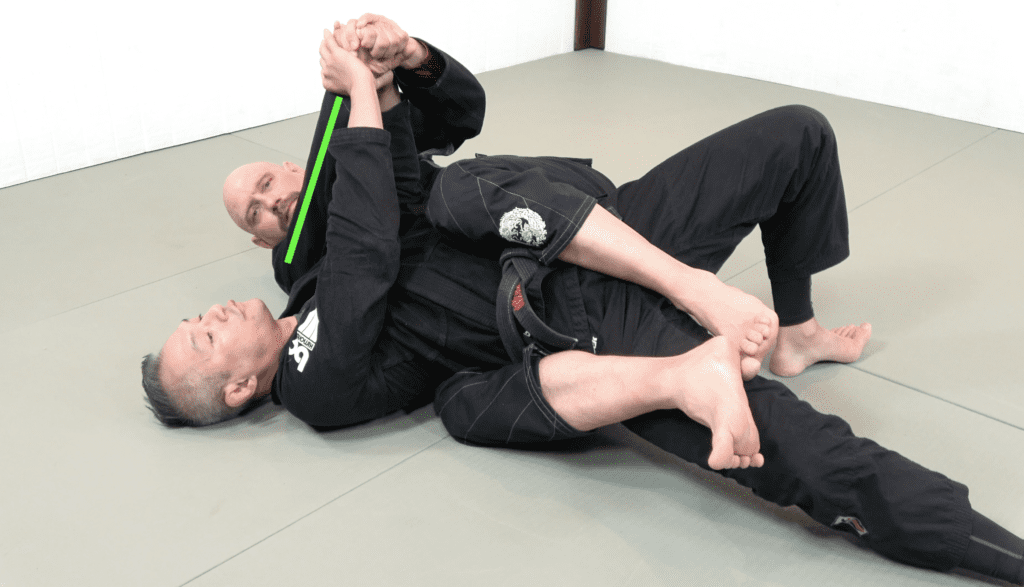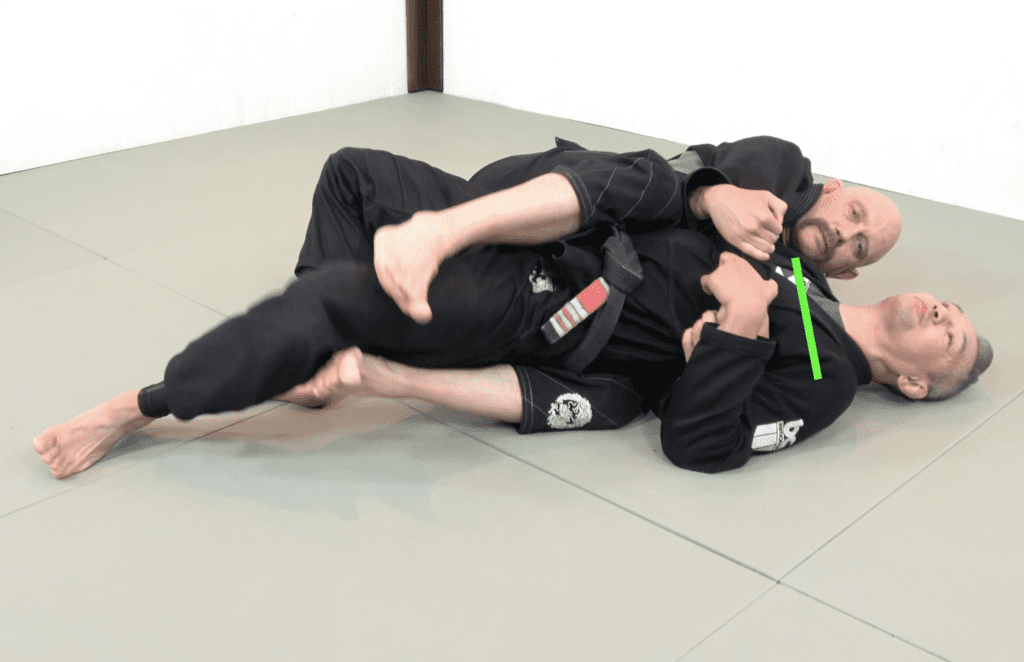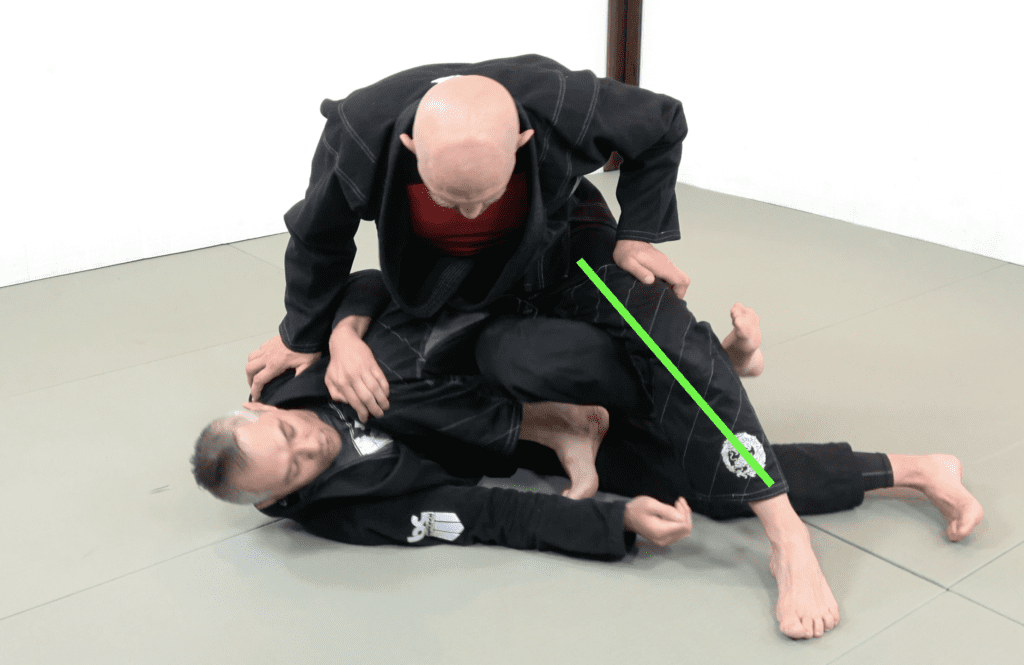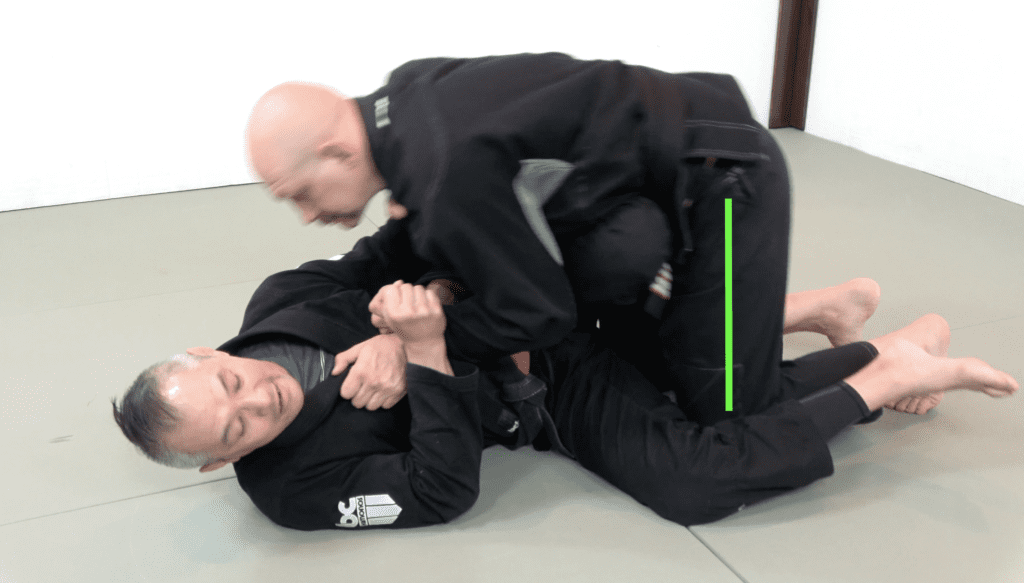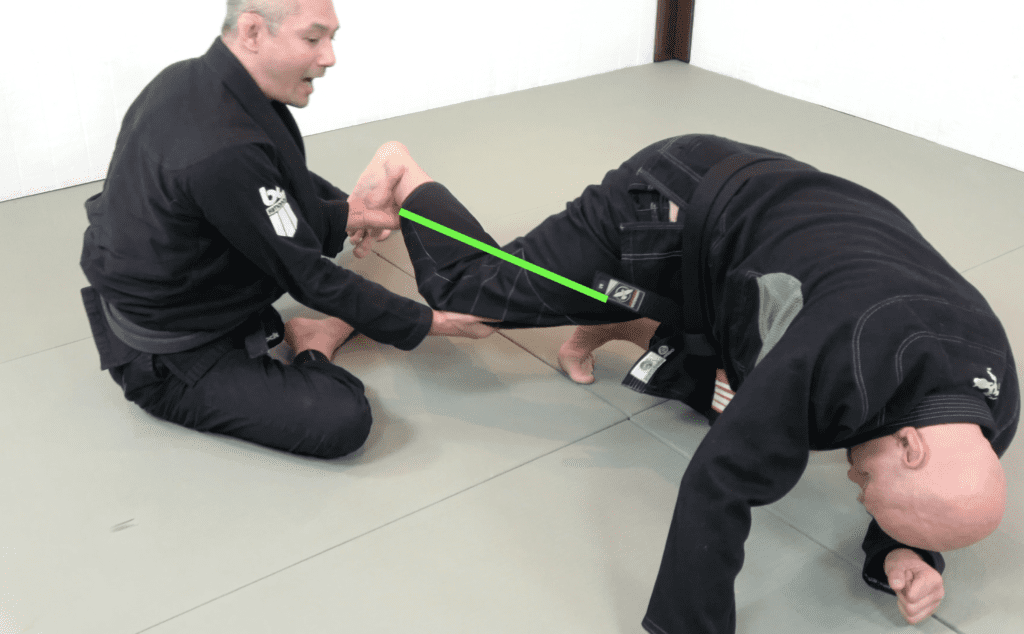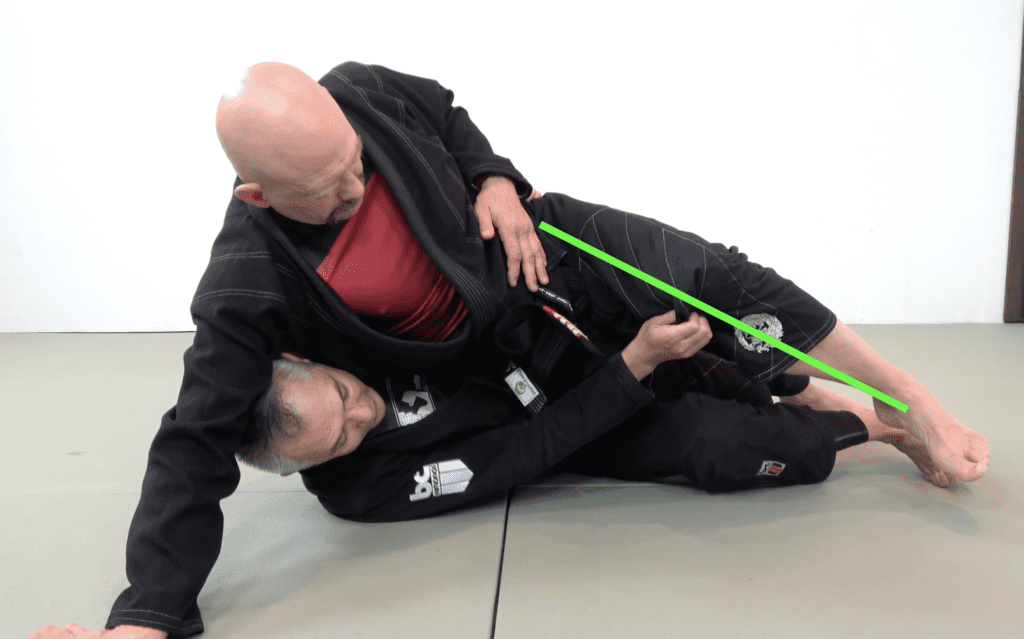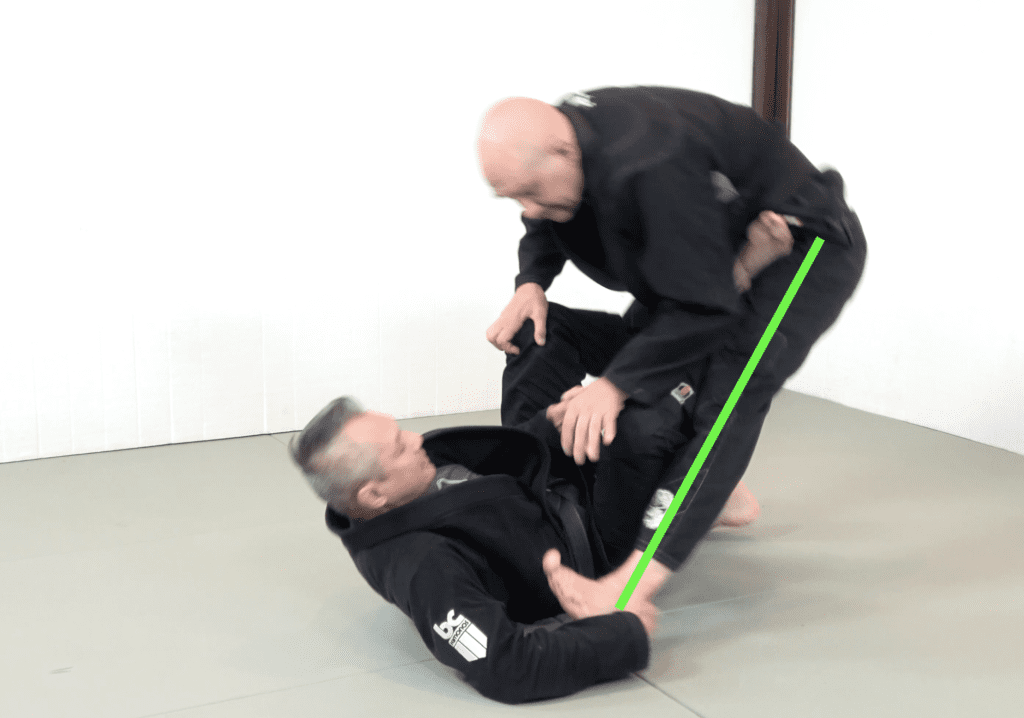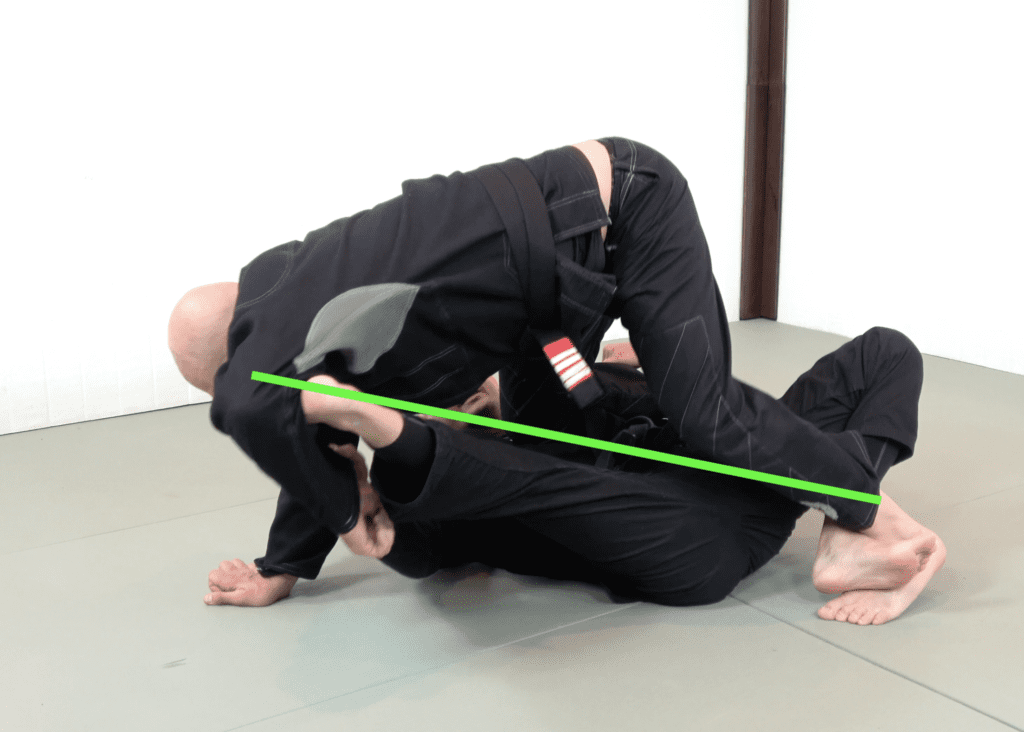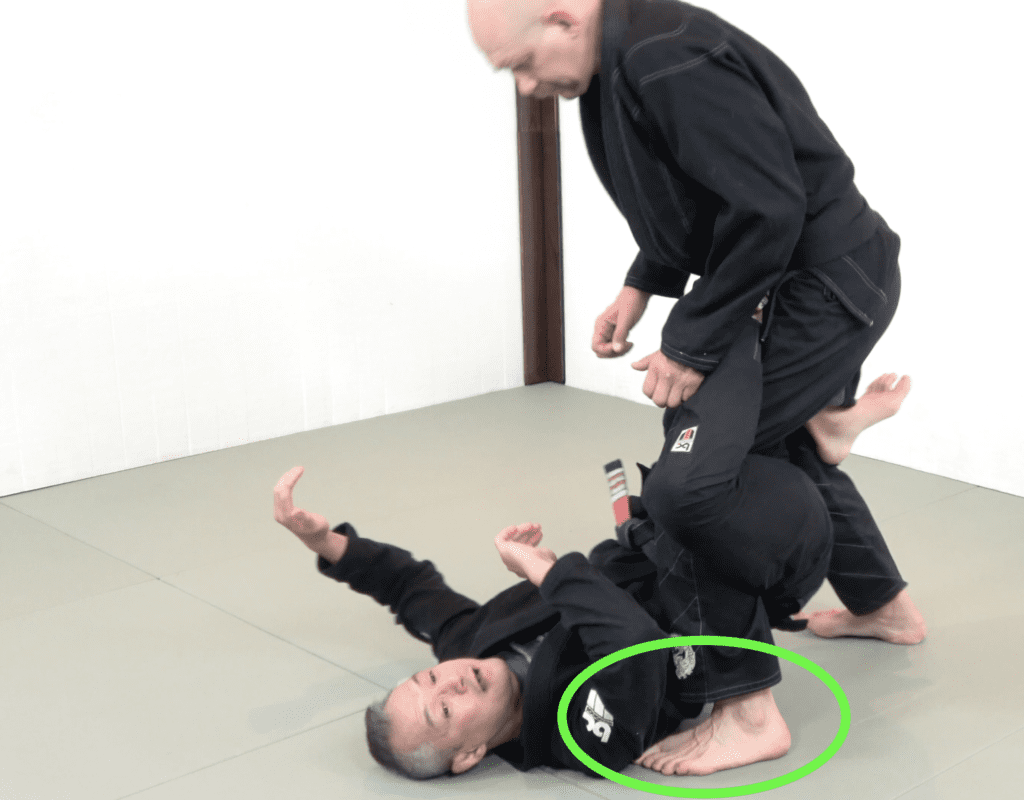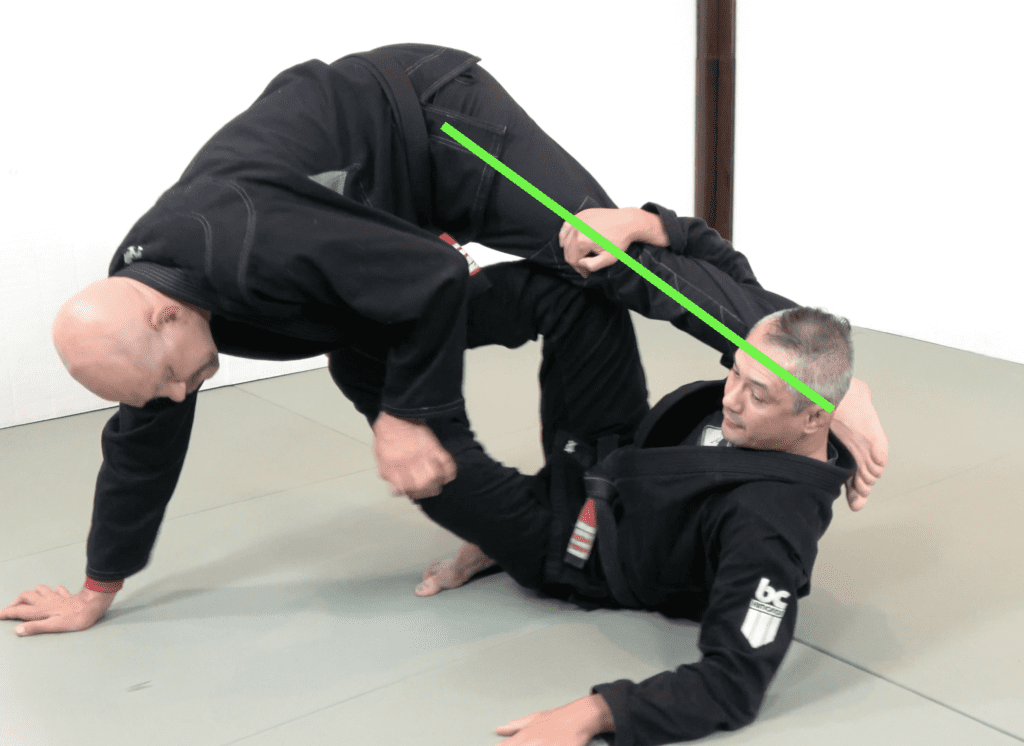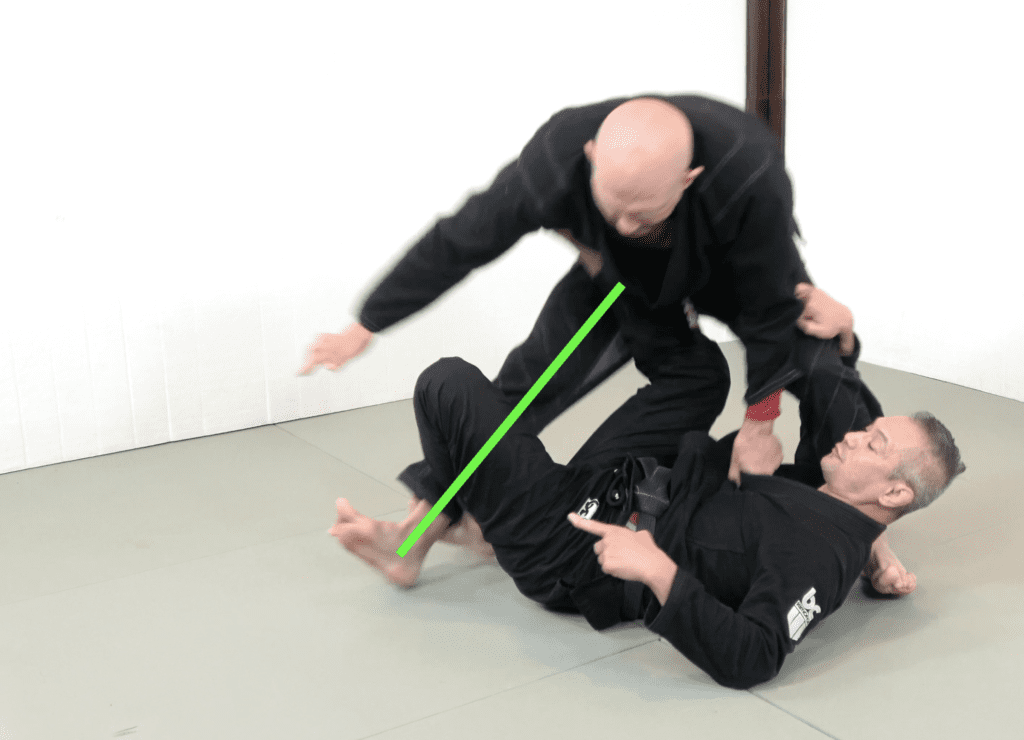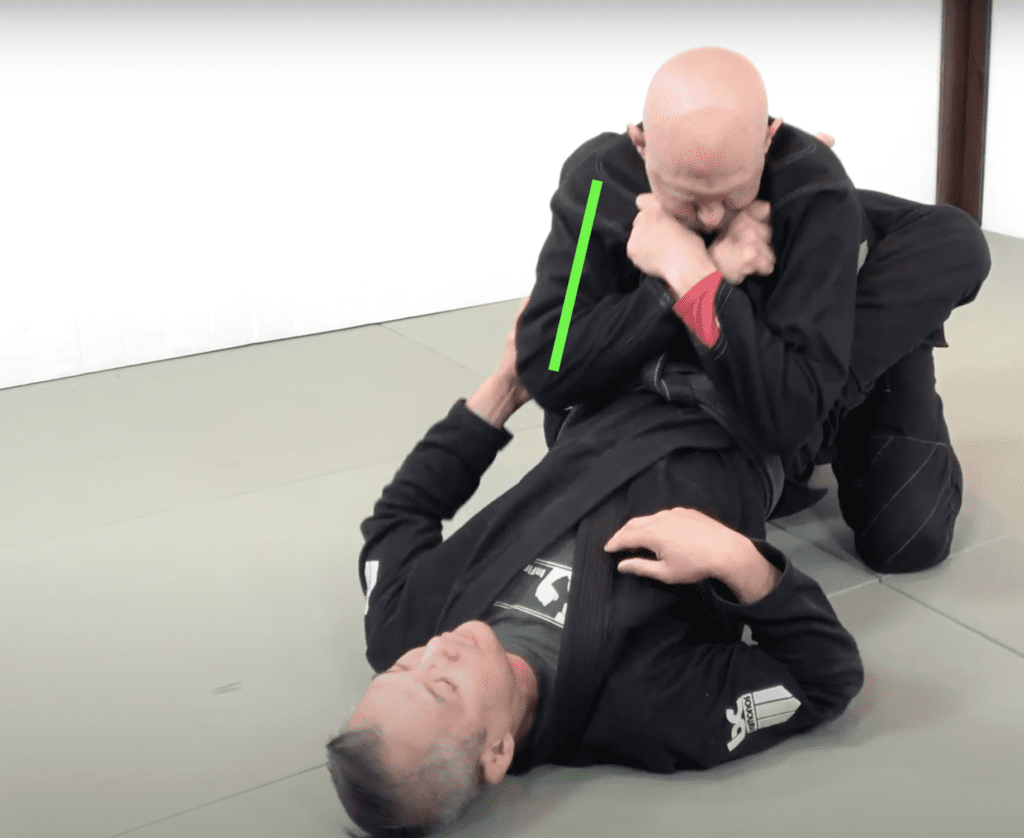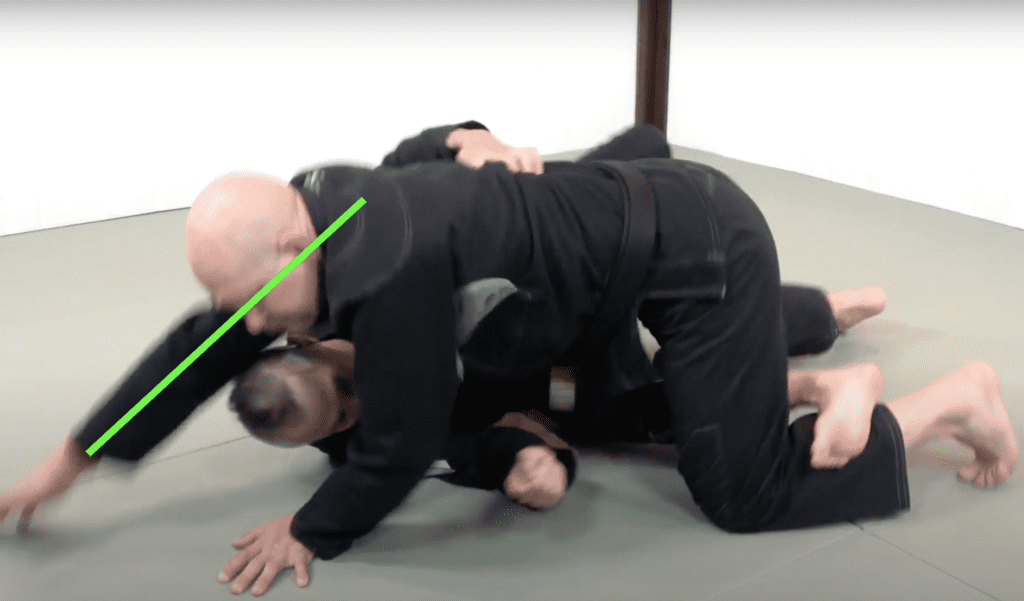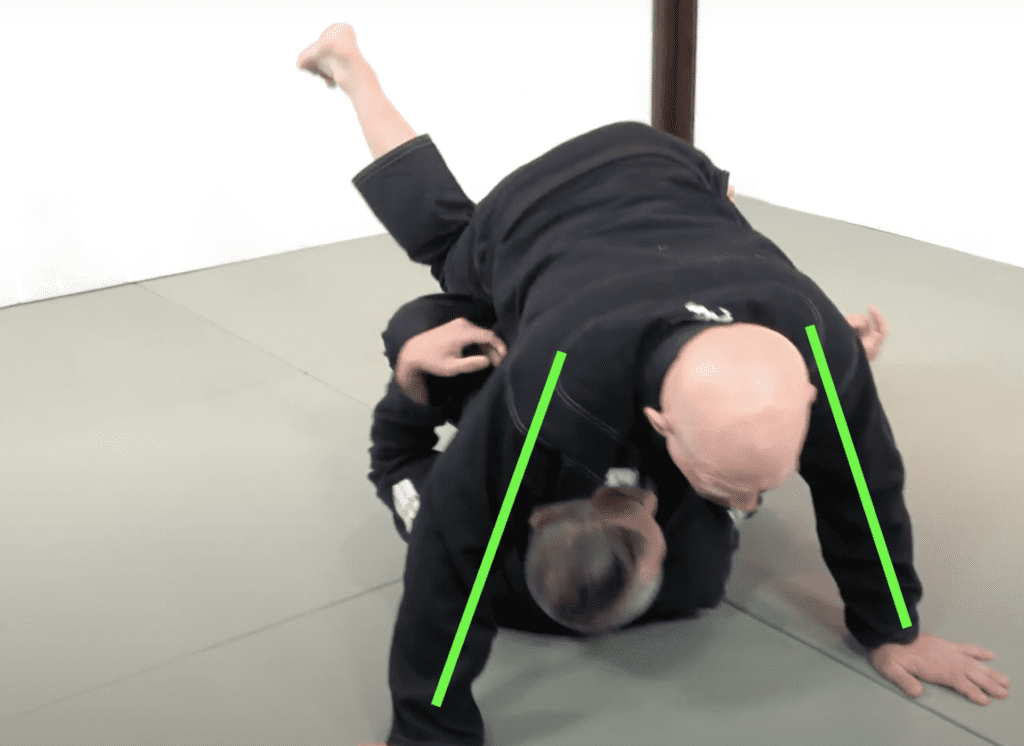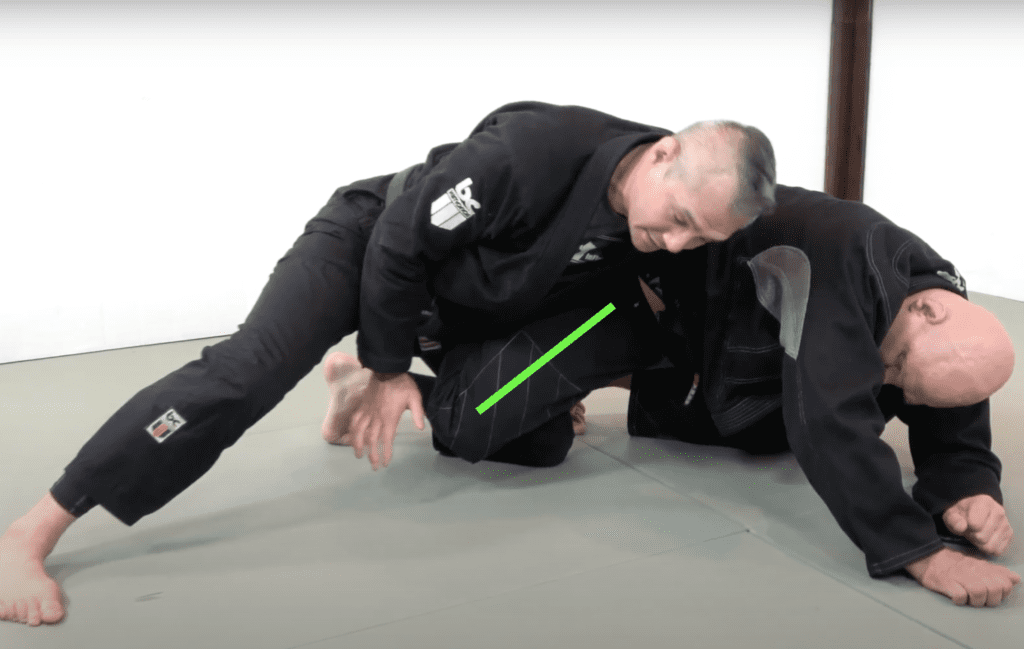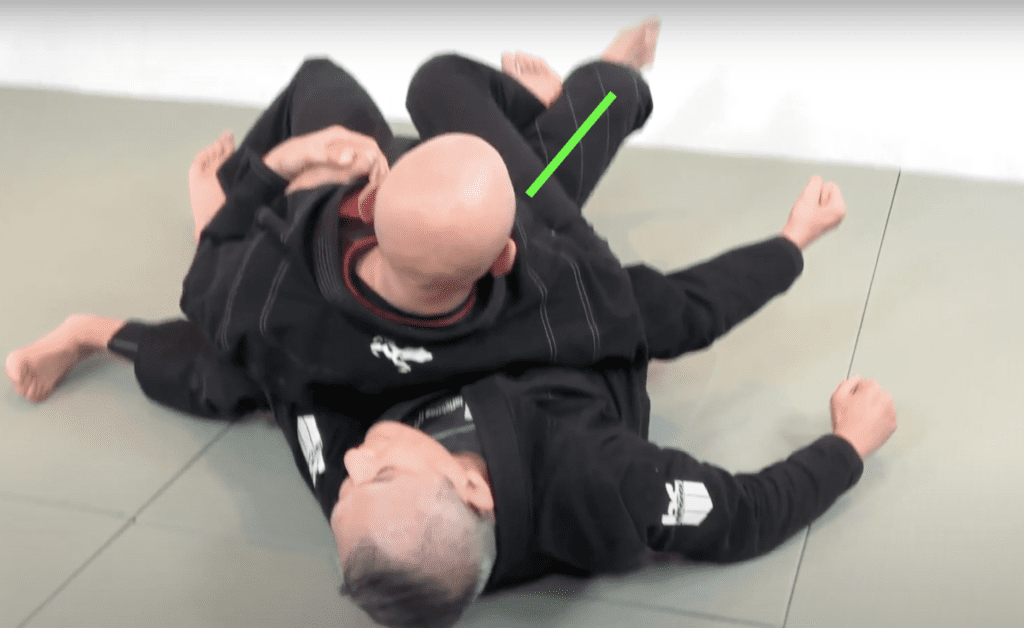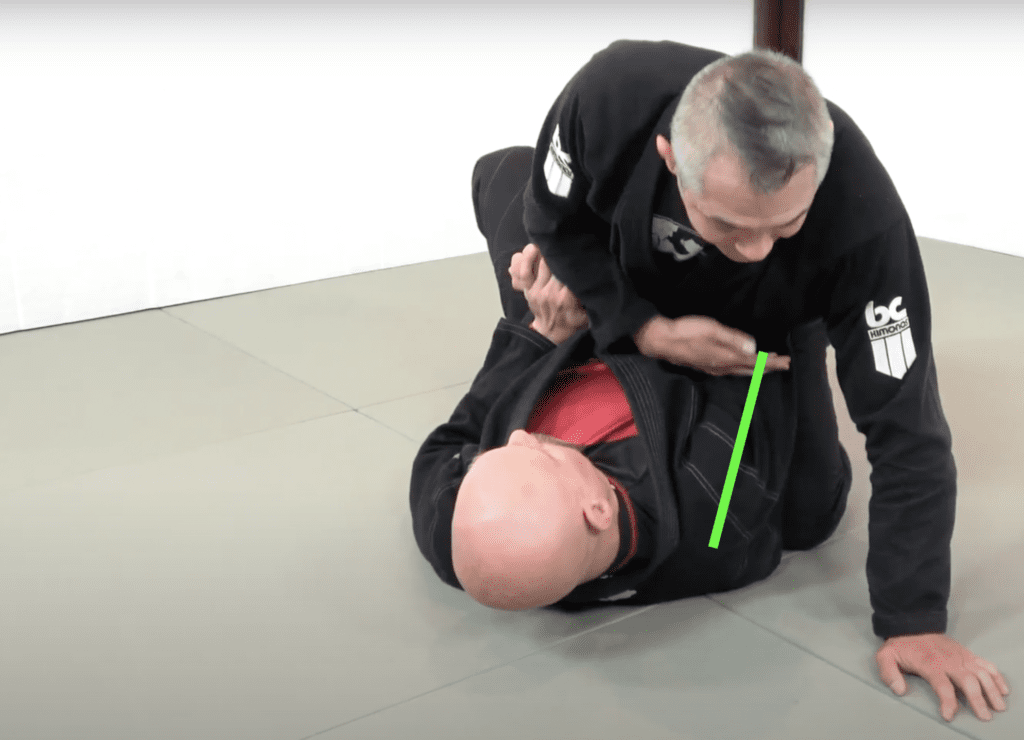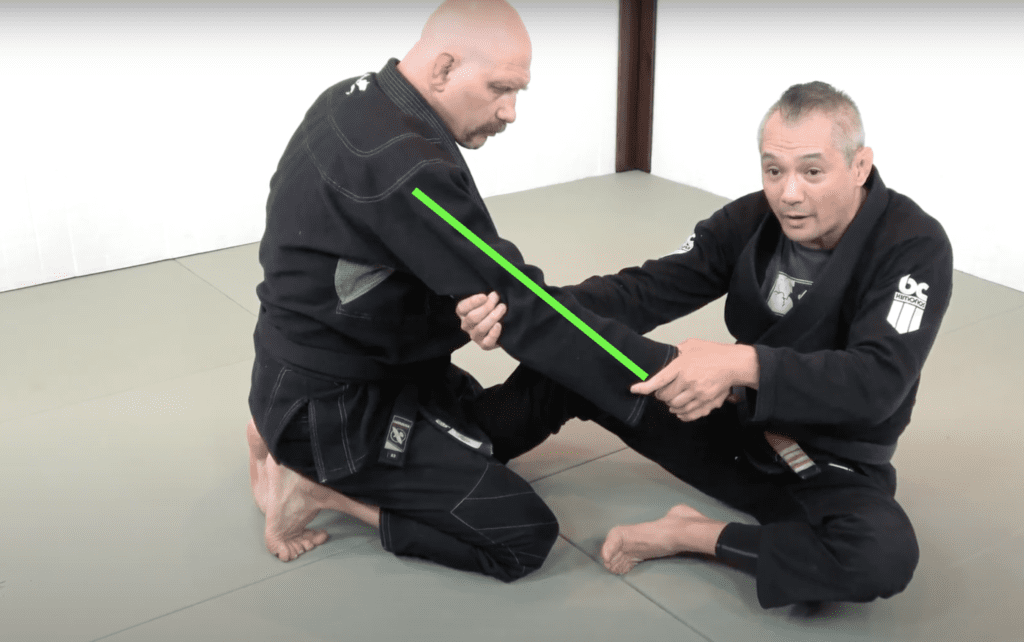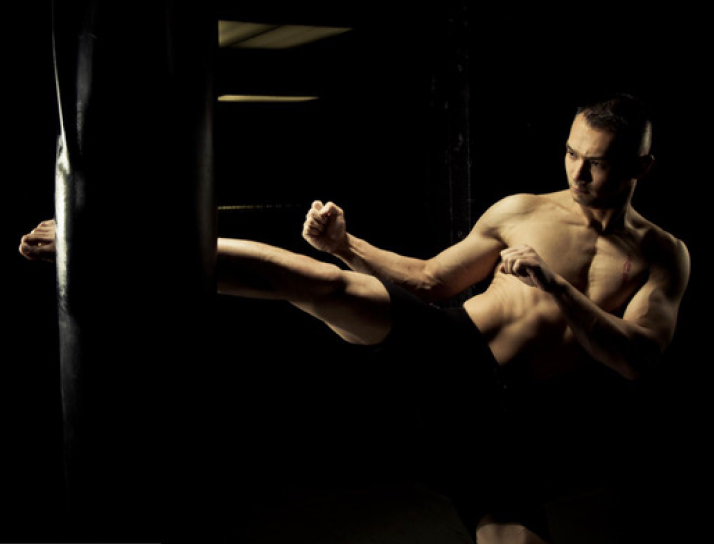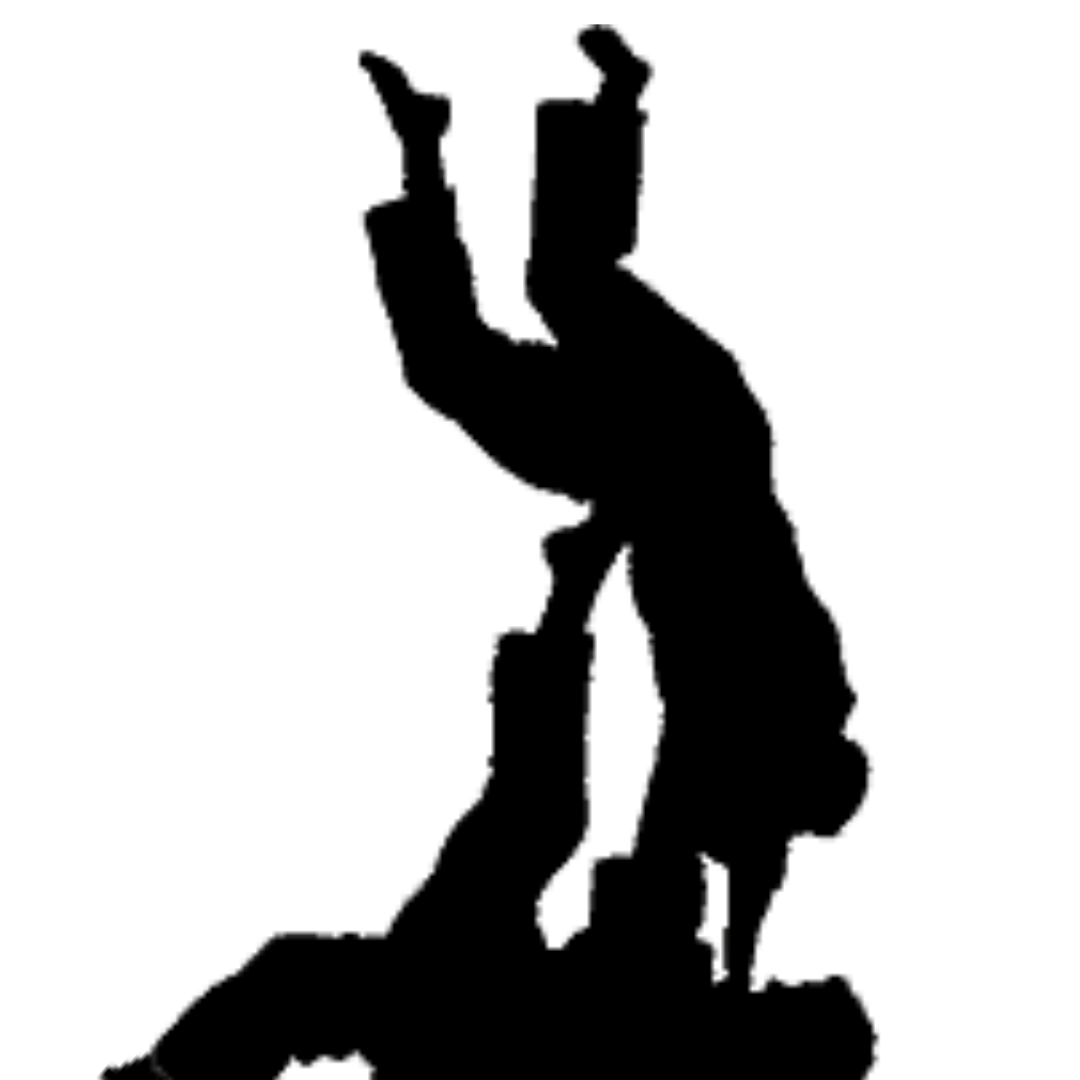
Table of Contents
Introduction:
Here’s the 81 most critical BJJ techniques the #1 principle that rules them all!
Brazilian Jiu Jitsu is a complex and highly sophisticated martial art; but, there’s one principle that commands all BJJ techniques.
Brazilian Jiu Jitsu is fundamentally just stick fighting!
And, in this article, I’m going to show you how this principle is the key foundation behind every BJJ technique.
Firstly, let’s start off by showcasing how human beings are just 5 sticks duct taped together 😊
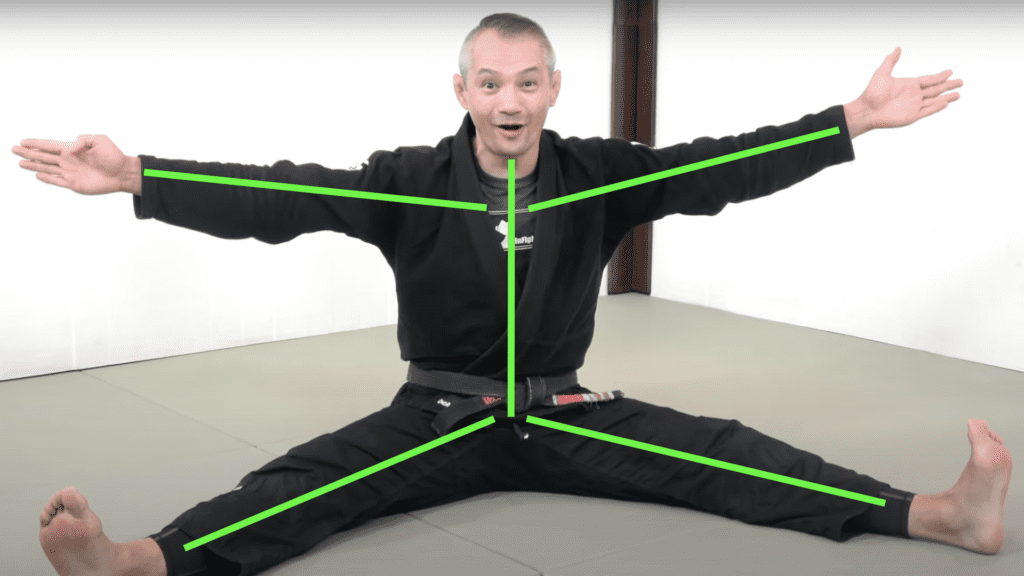 And sticks can be two things:
And sticks can be two things:
- Frames
- Levers
Frames stop motion.
Levers amplify motion.
So how do frames and levers relate to when we’re rolling and doing Jiu Jitsu?
Above all, when we’re rolling and doing doing Jiu Jitsu:
I always want to be a set of FRAMES.
and I always want YOU to be a set of LEVERS.
In Jiu Jitsu, I’m always hunting for levers so I can control my partner…
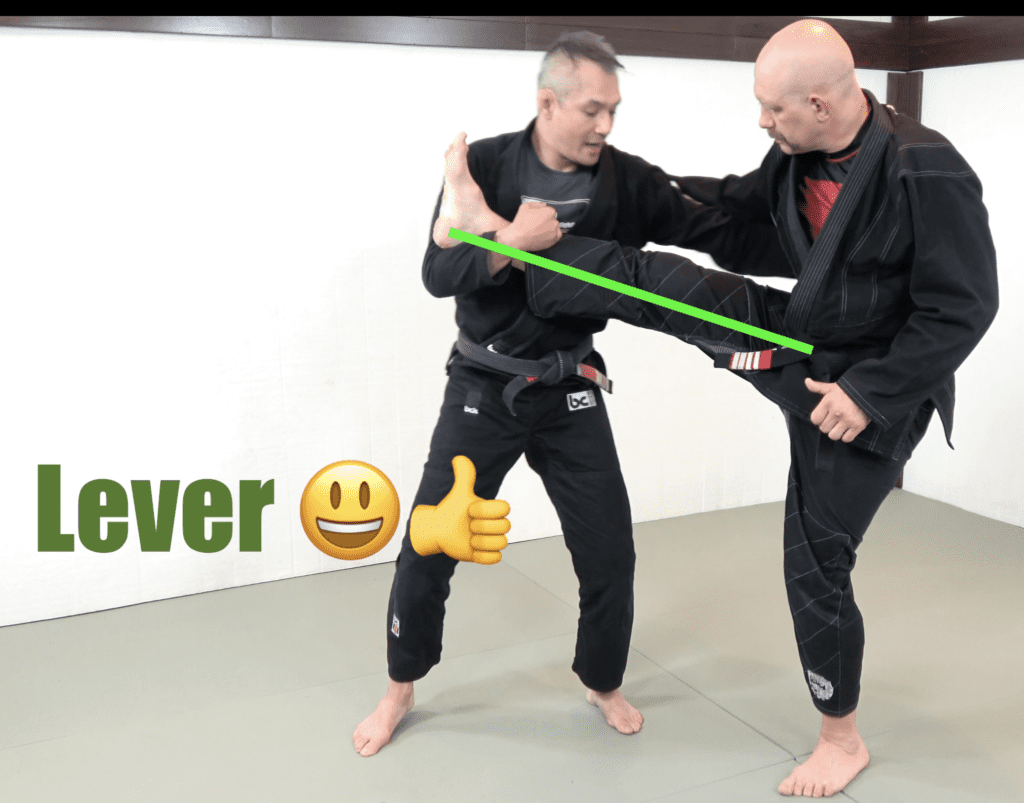
And eventually submit them.
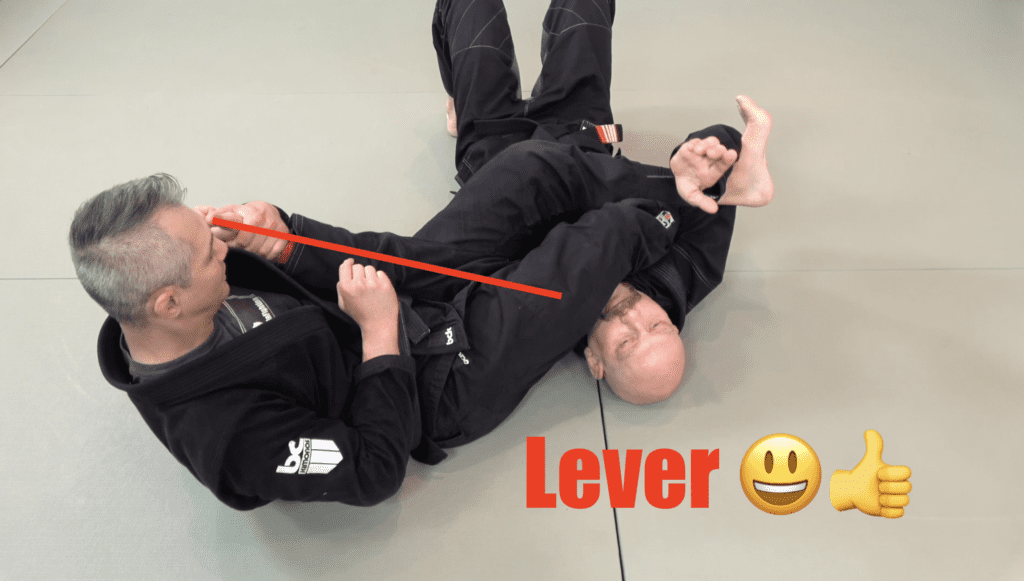 Jiu Jitsu is just stick fighting:
Jiu Jitsu is just stick fighting:
- It’s simply turning frames into levers.
- And levers into frames.
This is the most important principle in all of Jiu Jitsu and is the foundation of every BJJ technique you’ll ever learn. If you just look for the stick, you’ll be able to understand every BJJ technique right away! 😉
Technical Standup
Firstly, let’s start off with the most important BJJ technique in existence, the Technical Standup.
The Technical Standup is a specific way you can get back to your feet when you’re on your back.
The Technical Standup starts off with establishing a frame.
Remember, a frame is a stick that stops motion.
With the Technical Standup, you can use your head, shoulder, elbow, or hand as the frame.
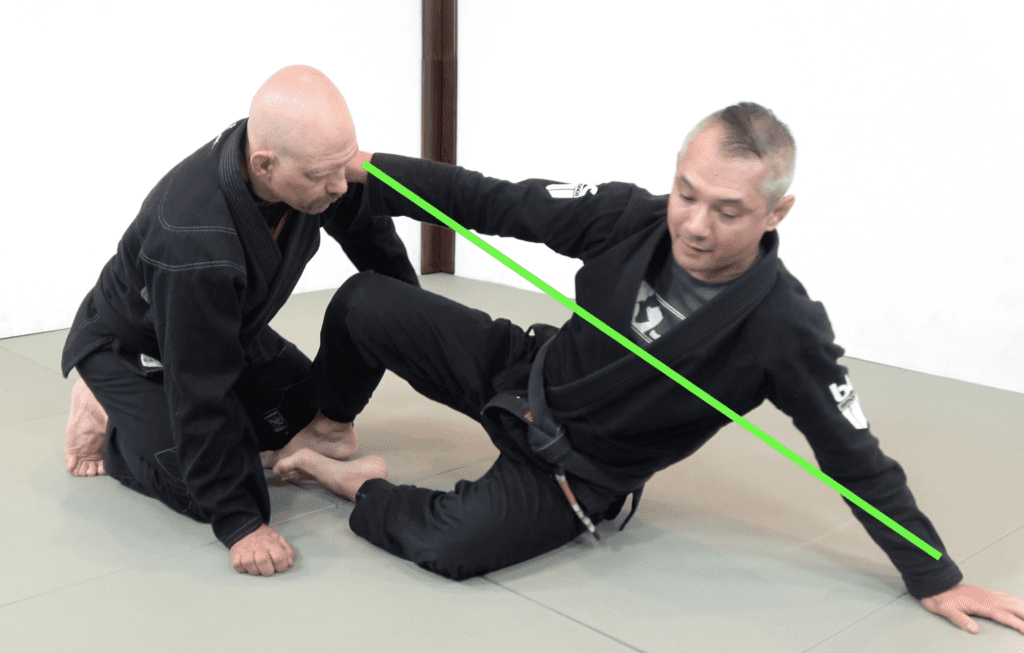
Once a frame is fully maintained, you can now build up to your knee; and then, all the way up to your feet.
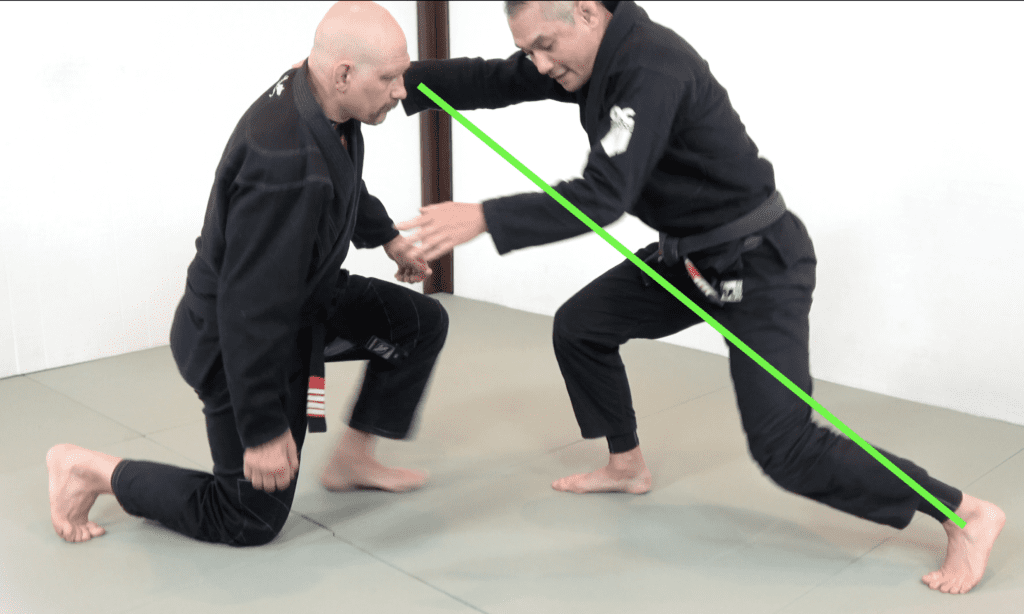
Bottom Mount Escapes
Now, let’s take a look at escaping from bad positions. And as a beginner in BJJ, one of the most intimidating positions is Bottom Mount.
Here’s the 3 most important Bottom Mount Escapes and how frames and levers play a role in these BJJ techniques.
Guard Replacement Bottom Mount Escape.
Look to first stay safe by having upper body frames to protect your jaw and neck from your partner’s cross face. Then, turn slightly to your side so that your shoulder acts like a frame.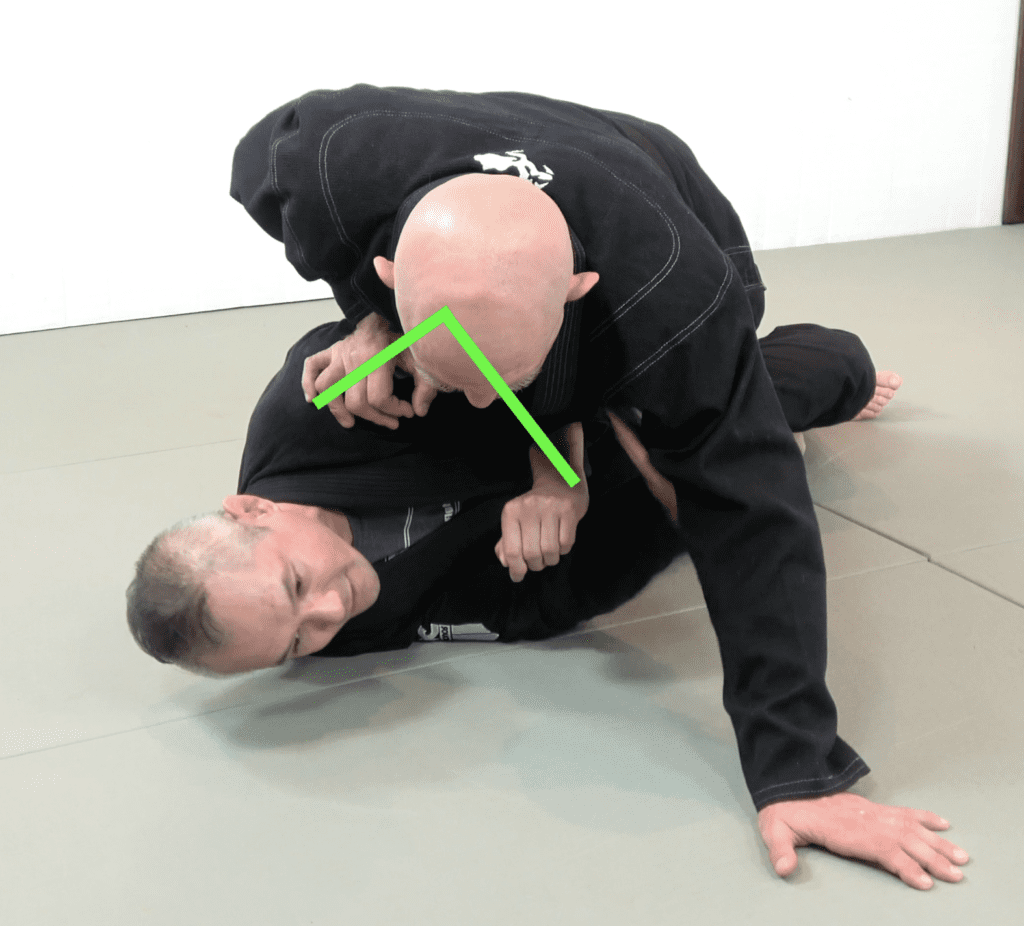
Once your shoulder is framing against your partner’s weight, you can now use your elbow to frame against your partner’s hip.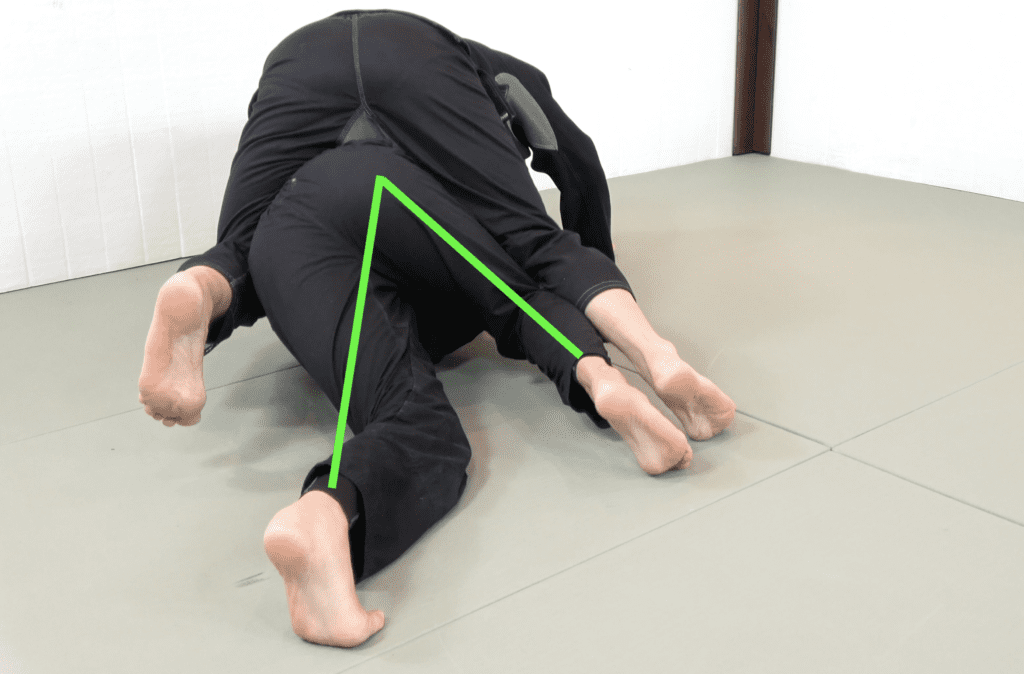
Lift up your hip to support your partner’s weight; thus, using your spine as a frame; and then, insert your knees so you can now fight from your Guard.
Foot Trap Mount Escape
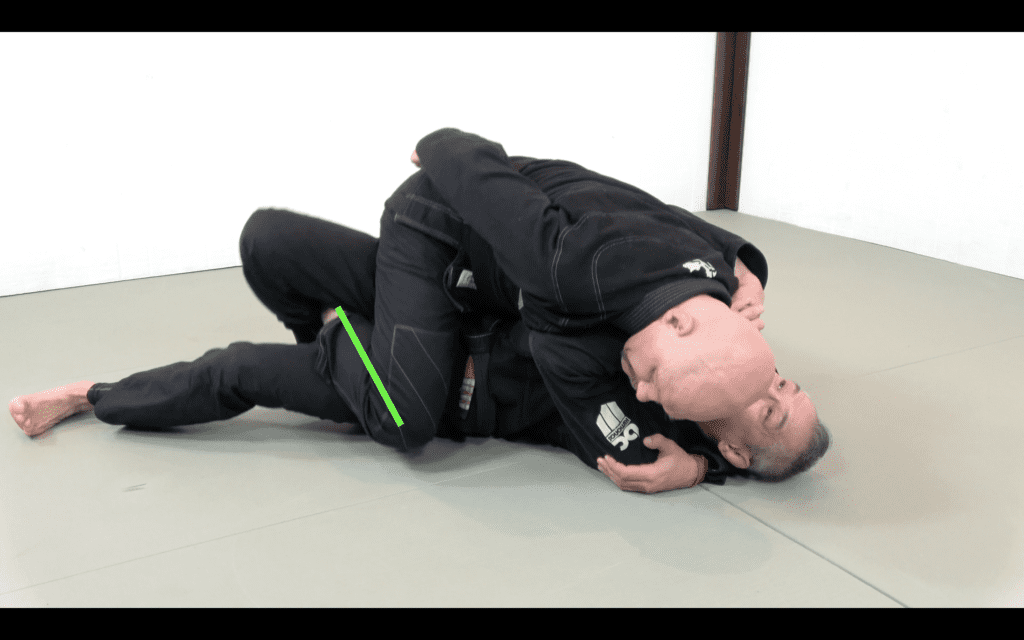
By trapping your partner’s ankle between your legs, you can now lever your partner’s leg off the ground; thus, creating space for you to slide your hips under your partner’s knee to facilitate the escape.
Bridge & Roll Mount Escape
When you’re establishing your upper body frames to stay safe from your partner’s weight, you’re also trapping your partner’s cross facing arm.
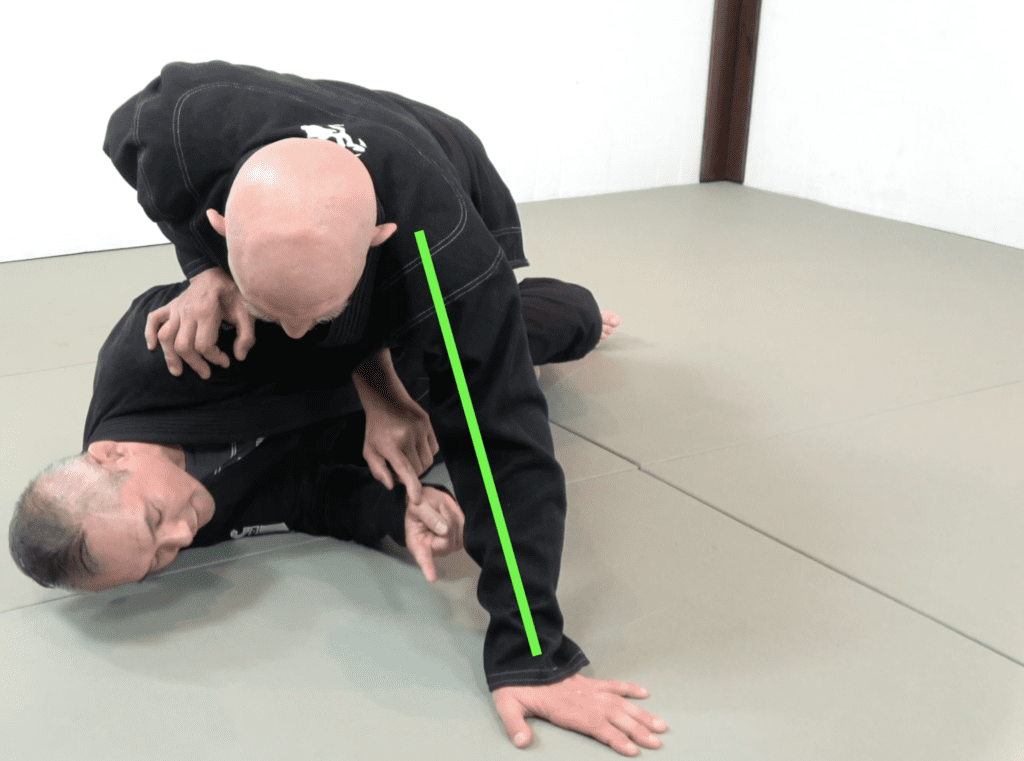 When you bridge and roll your partner, you’re disallowing your partner from using their arm to frame against the floor to prevent the turnover.
When you bridge and roll your partner, you’re disallowing your partner from using their arm to frame against the floor to prevent the turnover.
Bottom Cross Side Escapes
Guard Replacement Escape From Bottom Cross Side
By first staying safe and having proper upper body frames is critical when you’re in bottom cross side. The next thing is to have your far foot on the ground so that you can bridge and drive into your partner. This is an example of how your frame needs to be equal and opposite from the force your partner is giving you.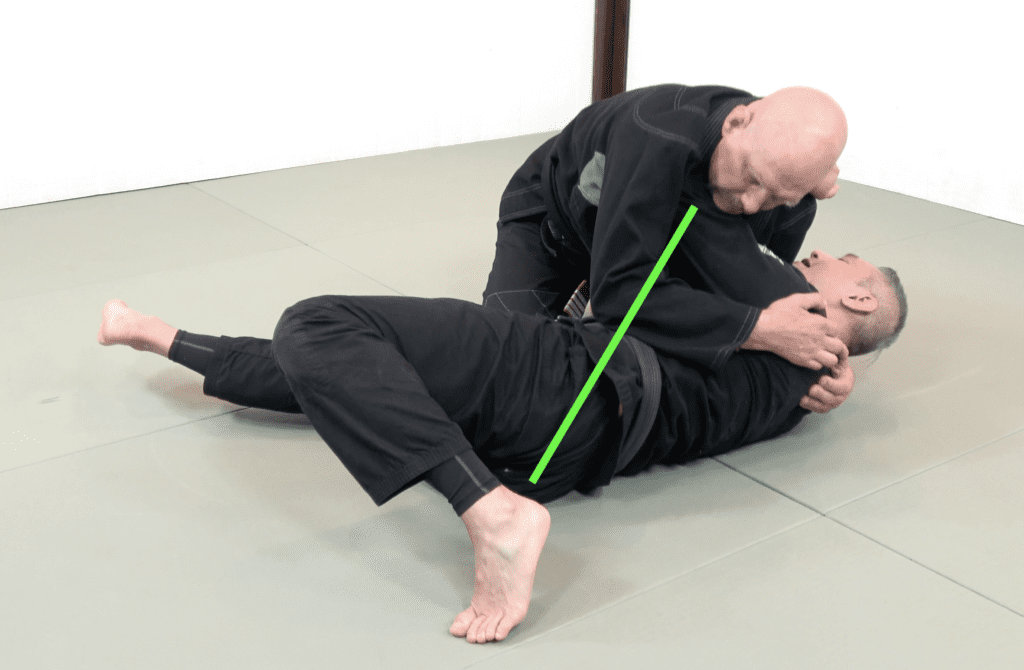
Now, you can extract your hips to insert your knees and Butterfly Guard Hook.
Bicep Push Bottom Cross Side Escape
The Bicep Push Escape is when you’re accessing your partner’s arm as a lever to help you escape. While you can absolutely push on your partner’s bicep, it’s best to find their forearm or their wrist – remember, the longer the lever, the greater the torque!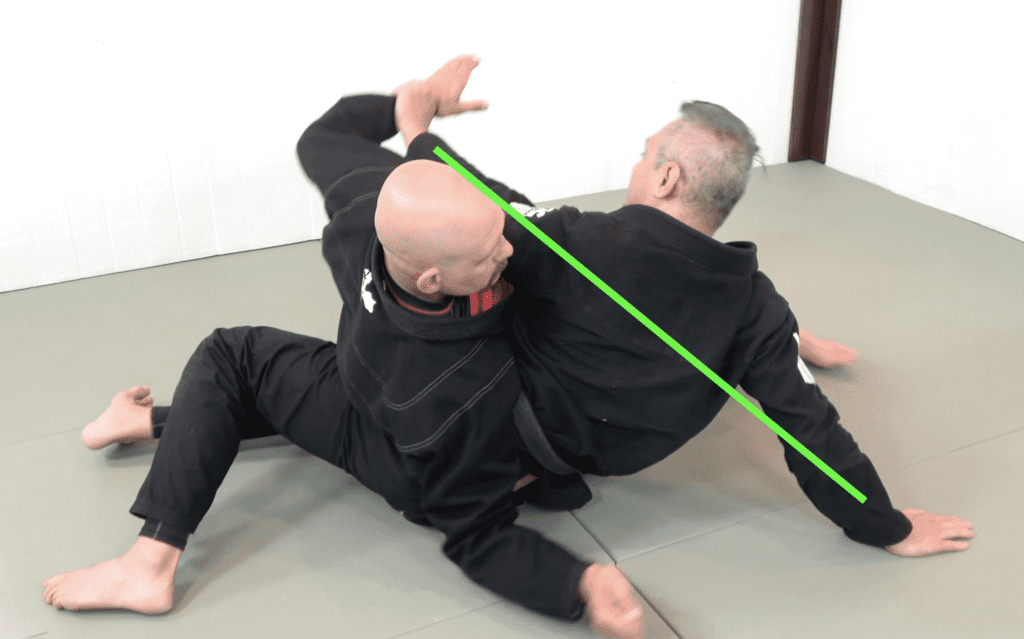
Further, be sure to keep your framing arm straight. You always want to use bone instead of muscle!
Elbow Push Bottom Cross Side Escape
Start by stopping your partner from grabbing on to you neck. If you can’t sit up right away and do the Bicep Push escape; then, transition directly to the Elbow Push escape.
Use the Elbow Push Escape when the Bicep Push fails you! Switch so that you’re framing with your other hand. With the Elbow Push Escape, it’s imperative that you’re pushing on your partner’s elbow so that you have maximum leverage.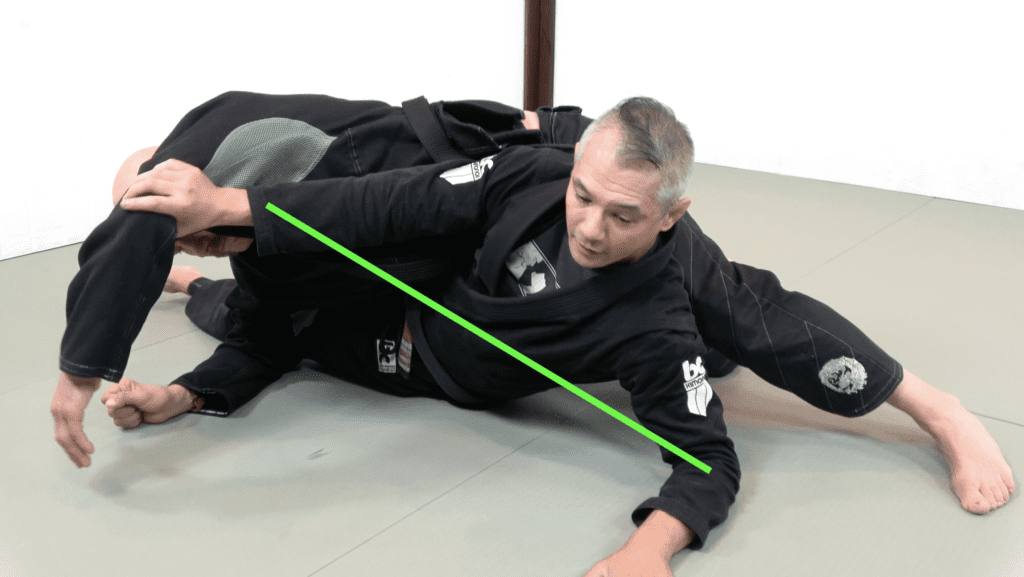
Granby Escape From Bottom Cross Side
By turning away from your partner, you can now use your spine as a frame. Circle your legs to fully recover your Guard.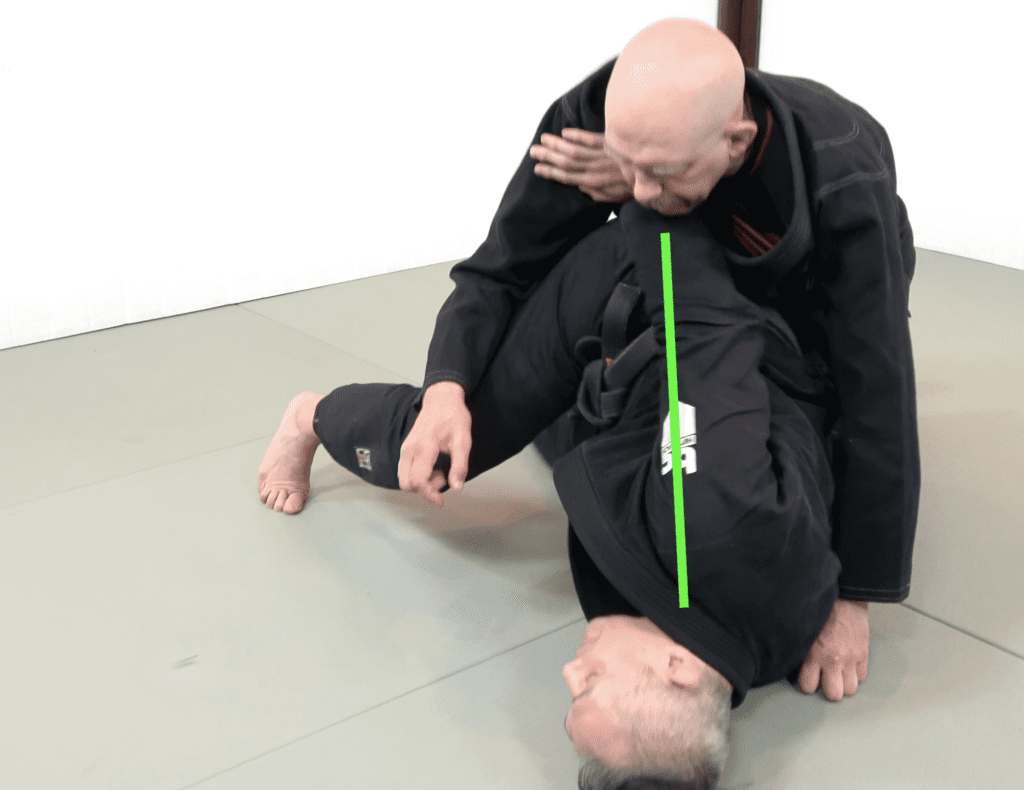
Kesa Gatame Escape
Cross Side is an example of how the top player is perpendicular to the bottom player. The top player is a wrench and the bottom player is a bolt.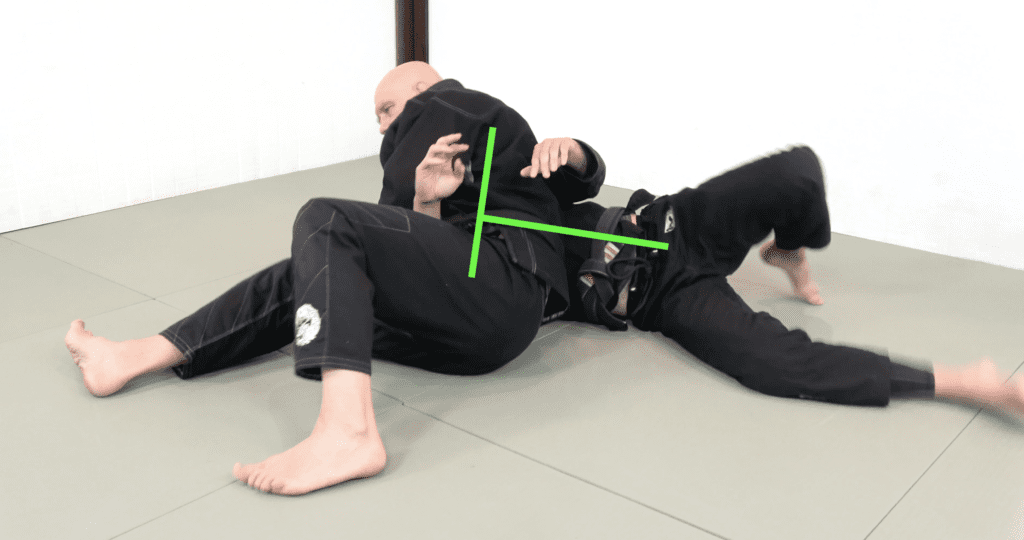
Thus, to escape, you want the bolt as close to wrench as possible so that the bolt can over power the wrench.
Back Escapes
Straight Arm Back Escape
Using your partner’s top arm as a lever, control your partner’s choking hand as best you can.
Following that, extend their arm to the best of your ability; and then, circle your head to the outside and drive with your legs to find yourself in their Guard.
Strong Side Back Escape
If your partner is attempting to choke you with their right hand, you want to bridge towards your left side. Once your head touches the mat, wiggle your shoulders until your right shoulder points towards your partner’s sternum.
Your right shoulder acts as the frame to keep you safe. For this BJJ technique, use your shoulder as the stick to stops your partner from closing the distance on you.
Knee On Belly Escape
Foot Trap
From Bottom Knee On Belly, you want to control the longest lever as possible and grab your partner’s toes.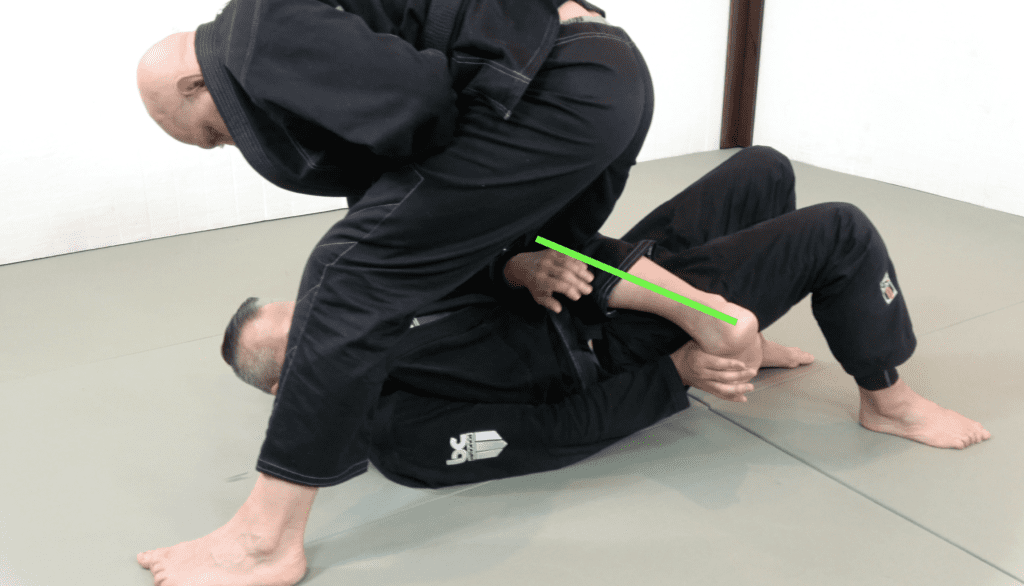
Once you have the toes, you can now bridge up and shove the foot into your Half Guard. This BJJ technique has you using your partner’s leg as the lever that facilitates your escape.
Windshield Wiper Escape
Swing your outside leg underneath your partner. As with all BJJ techniques, for your partner’s leg to function as frames, their foot needs to contact the ground; thus, your leg underneath your partner needs to cut out your partner’s feet from the floor.
Now that your partner’s left leg is off the ground, their leg acts as a lever for your control; and thus, you can escape from Knee On Belly!
Turtle Escape
Turtle Sweep.
For all BJJ techniques, the longer the lever, the greater the torque. With my partner’s centre of gravity so far away from me, their body acts like a lever preventing me from turning them over.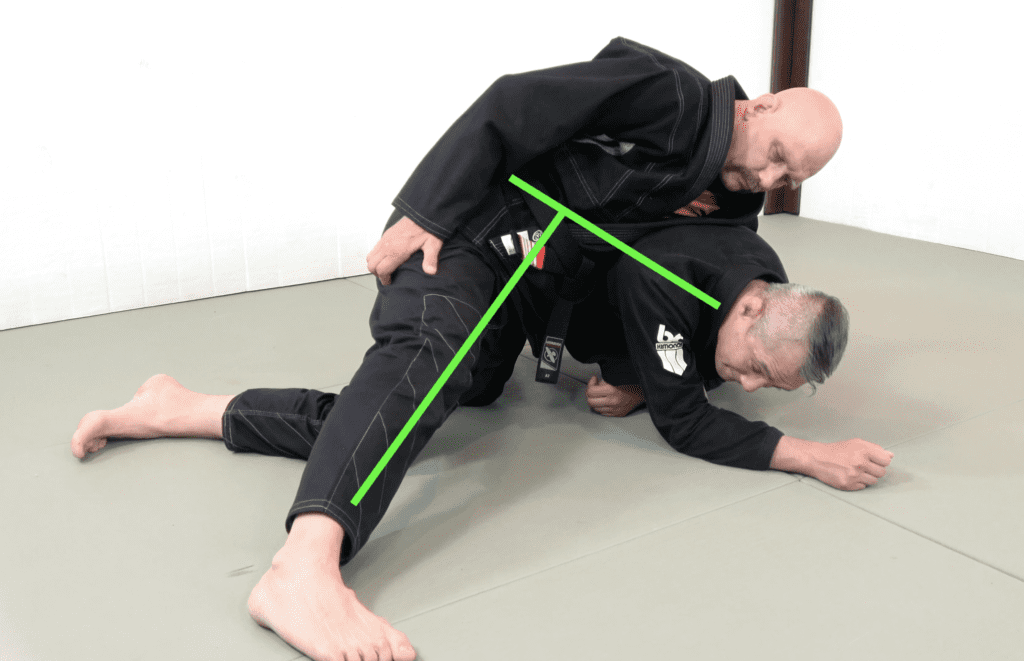
The key to making the Turtle Sweep work, is to get directly under their centre of gravity.
Granby
The Granby allows you to use your spine as a frame. A frame which goes from your hip to your shoulder.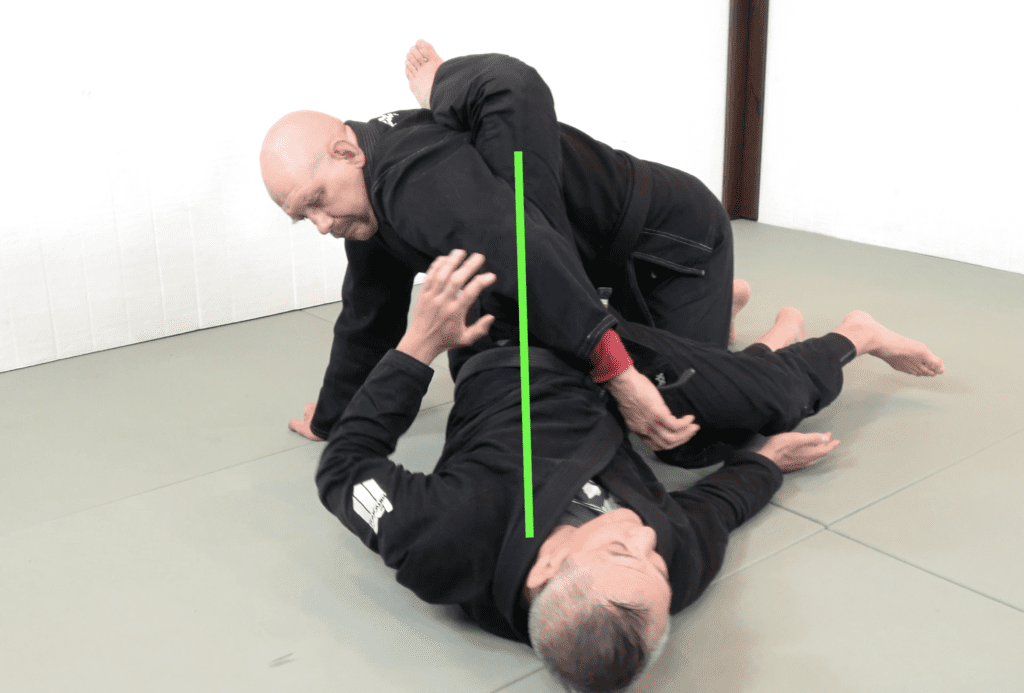
Standing up head first.
In order for your partner to keep you down, they need to utilize your spine like a lever.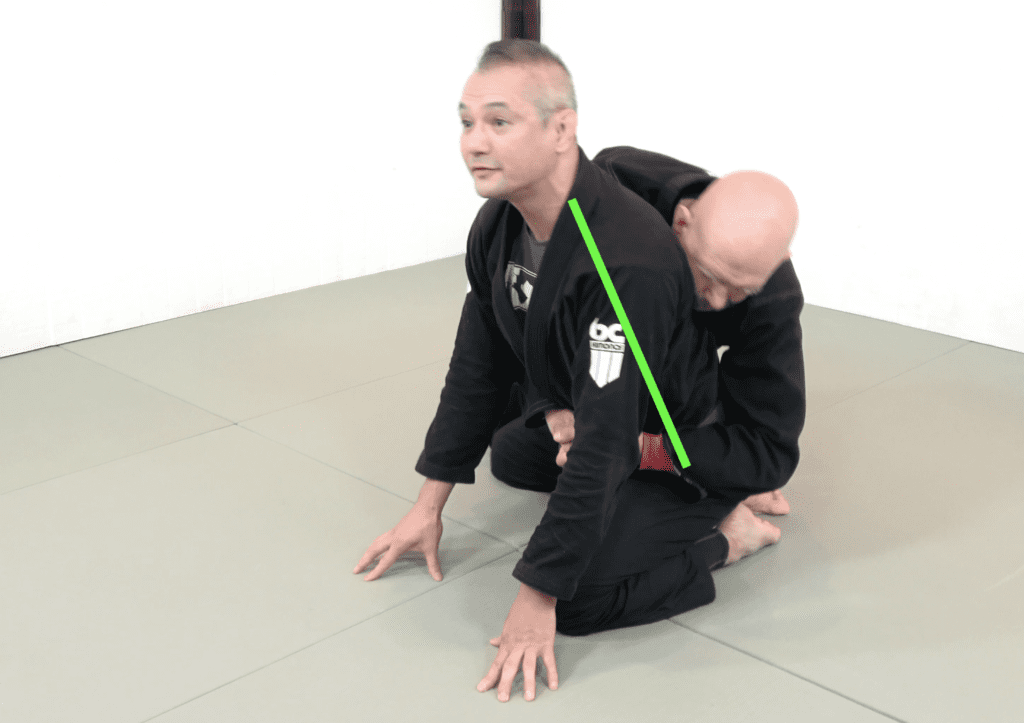
Understanding that for this BJJ technique, if your partner is heavy on your hips; then, you can lift your head. Once you’ve stood up; then, you can fight fight and turn to face your partner.
Standing Up Hips First
If your opponent is heavy on your shoulders; then, there’s nothing stopping you from lifting up your hips; since, your spine acts like a lever.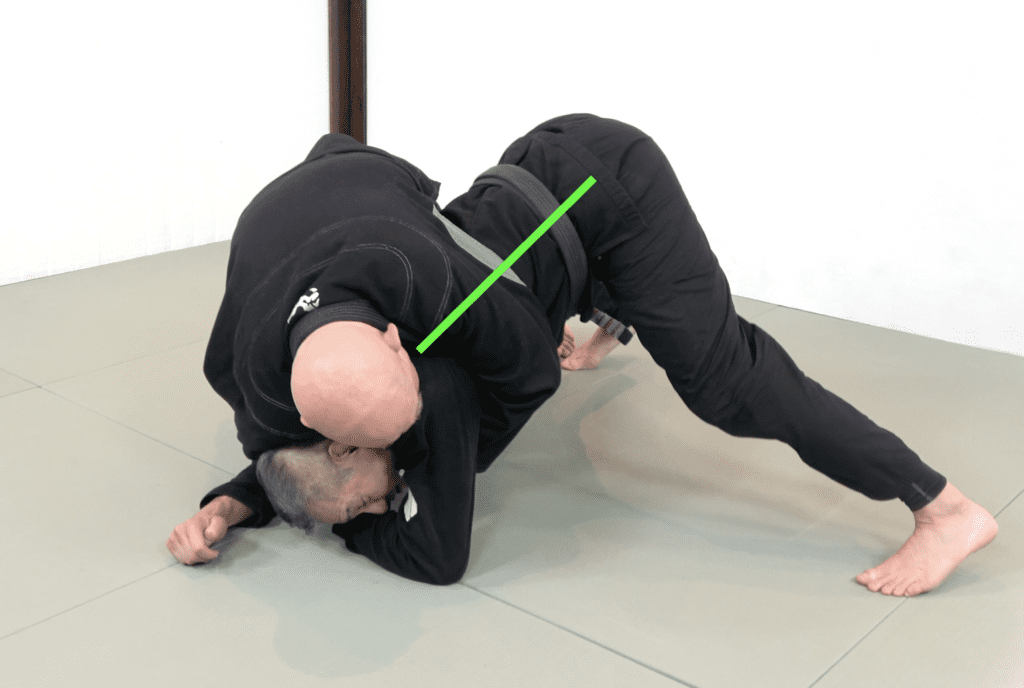
Once your hips are up, look to underhook your partner, and drive into them so that you’re both standing up.
Single Leg
If your partner is directly in front of you, then you can grab one of their legs. Like all BJJ techniques, in order to make their leg into a lever, their leg has to be completely off the ground.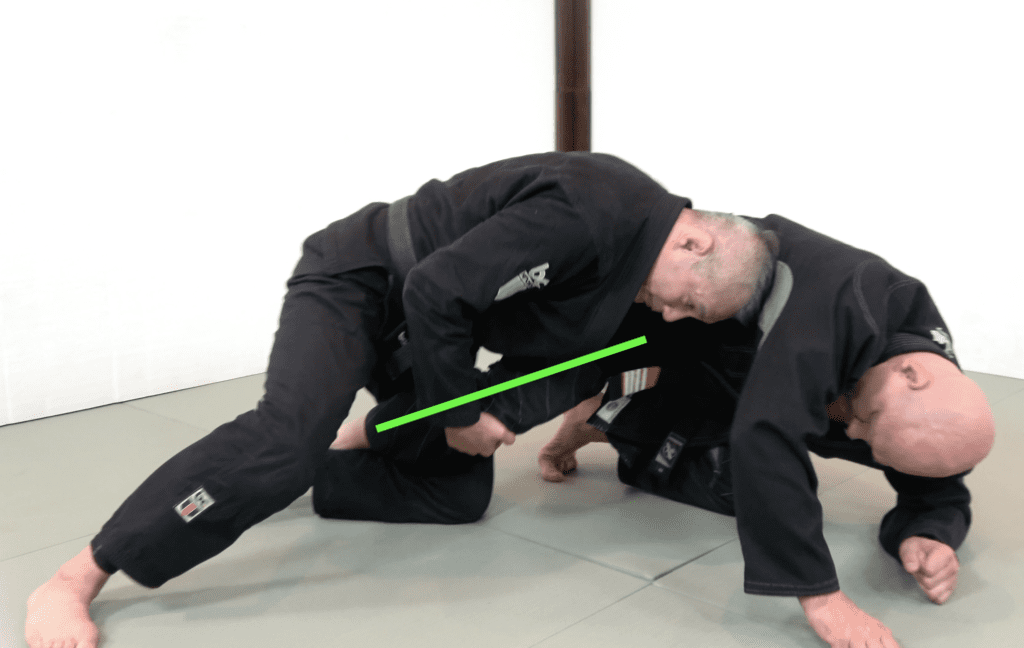
Use your hand to grab the toes of their right leg to keep their foot and their knee off the ground and look to stand up into a Single Leg Takedown.
Chokes
Cross Lapel Choke Mount
With Lapel Chokes, I want to use my forearms like a pair of scissors and scissors are a form of a lever.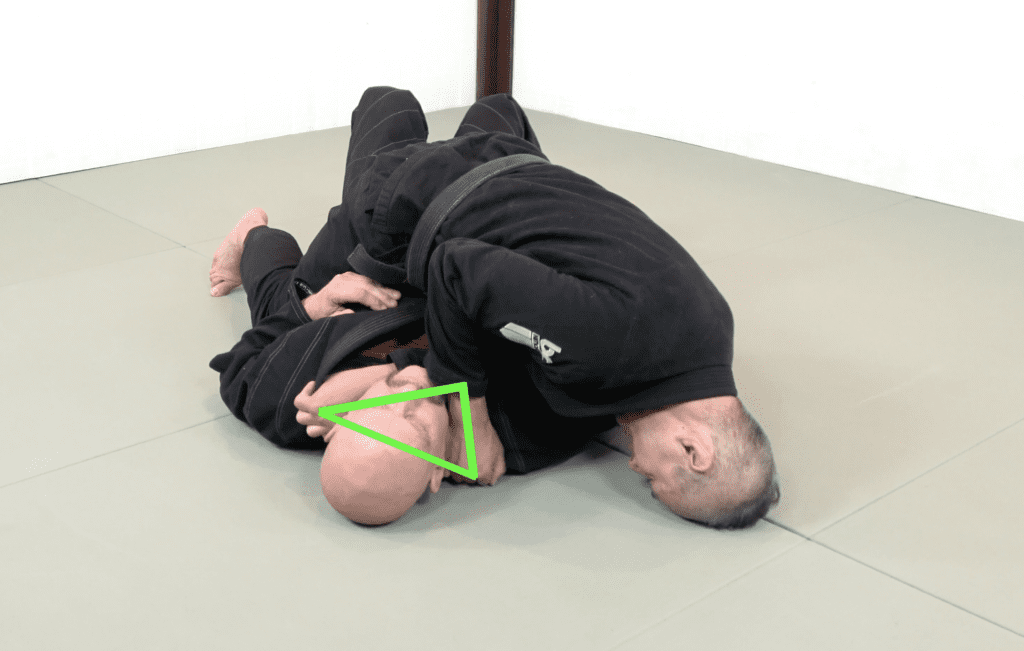
Once I’ve joined my hands on the back of the partner’s lapels, I can now scissor my forearms to complete the choke.
Cross Lapel Choke Guard
As I attempt turn my forearms into scissors so that I can lapel choke my partner from my Closed Guard, the hardest part of this BJJ technique is getting my hands into the correct position. Start with one grip at a time and get your right hand as deep as possible and go into High Closed Guard to secure the grip.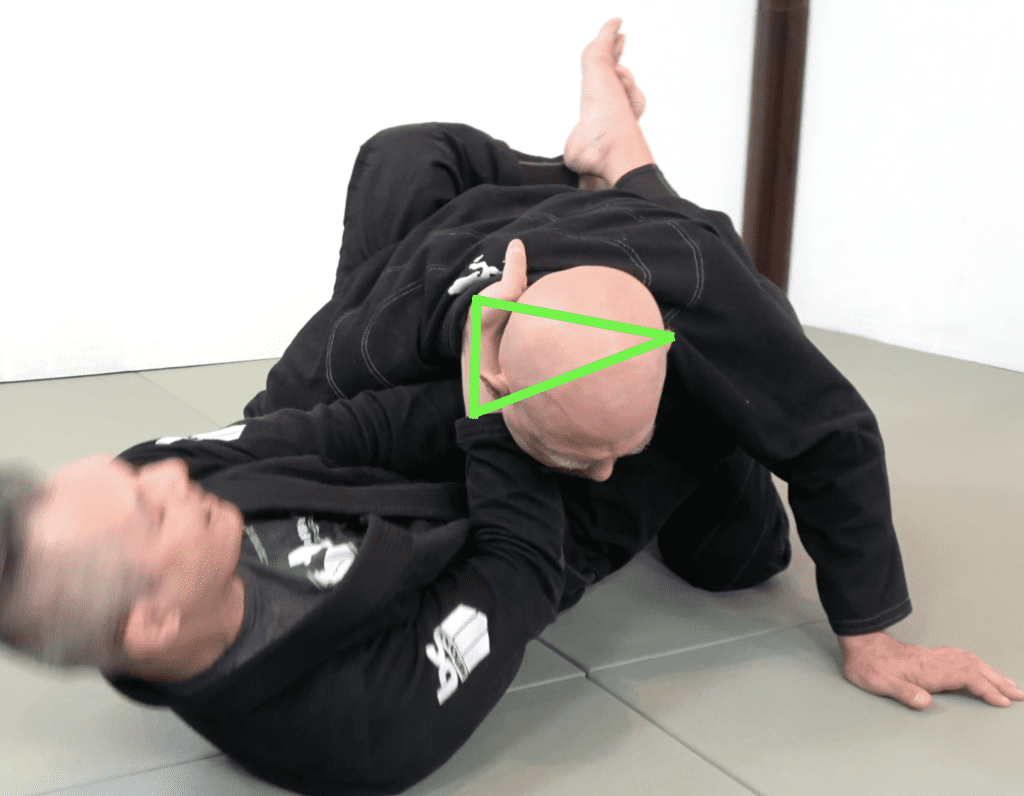
Now slightly alter your angle so that you can win your second hand grip and scissor your forearms to complete the choke.
Bow & Arrow Choke
Think of the Bow & Arrow Choke like a paper cutter. Your lapel hand is the blade and your hip is the base of the paper cutter.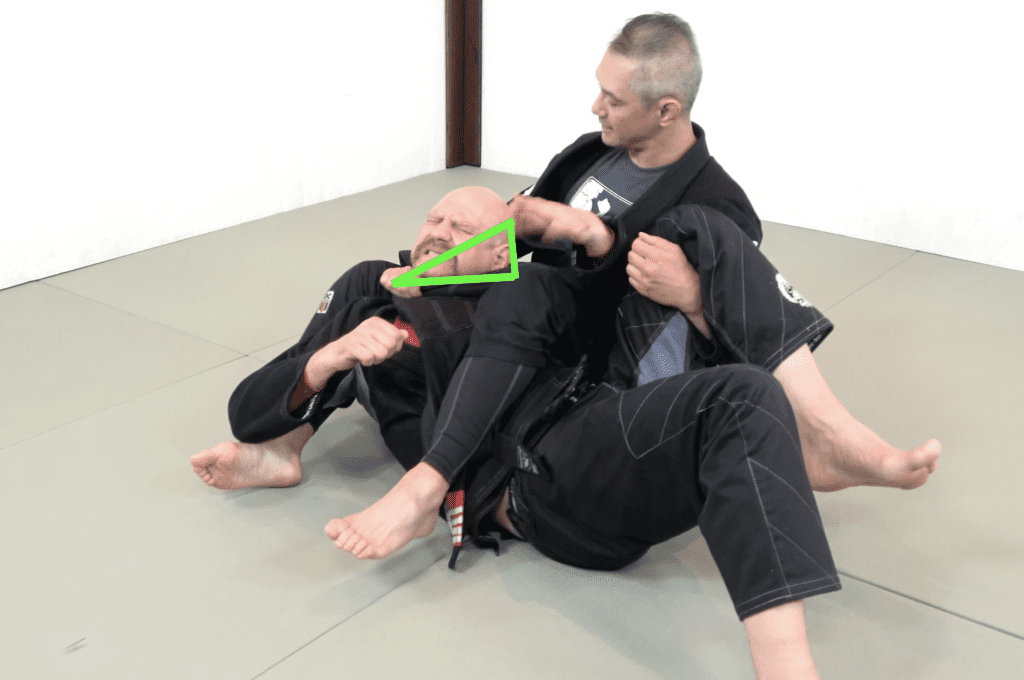
And as the blade of a paper cutting is a lever that cuts paper, your forearm acts like a lever that cuts off blood to your partner.
Clock Choke
Similar to the Bow & Arrow Choke, the Clock Choke is a BJJ technique that’s also just like a paper cutter.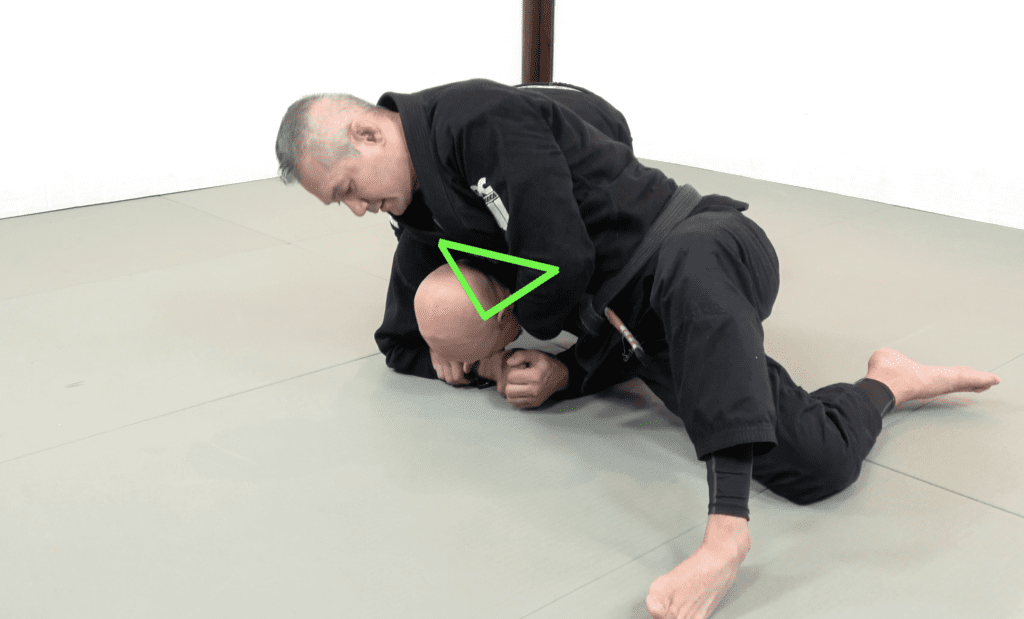
But, this time it’s your rib cage that acts like the paper cutter base and your forearm pulling up is the lever that mimics the paper cutter blade.
NoGi Chokes
Guillotine
Image the Guillotine being a paper cutter. With your partner’s neck being the sheet of paper, your shoulder being the base of the paper cutter and your forearm being the knife of the paper cutter.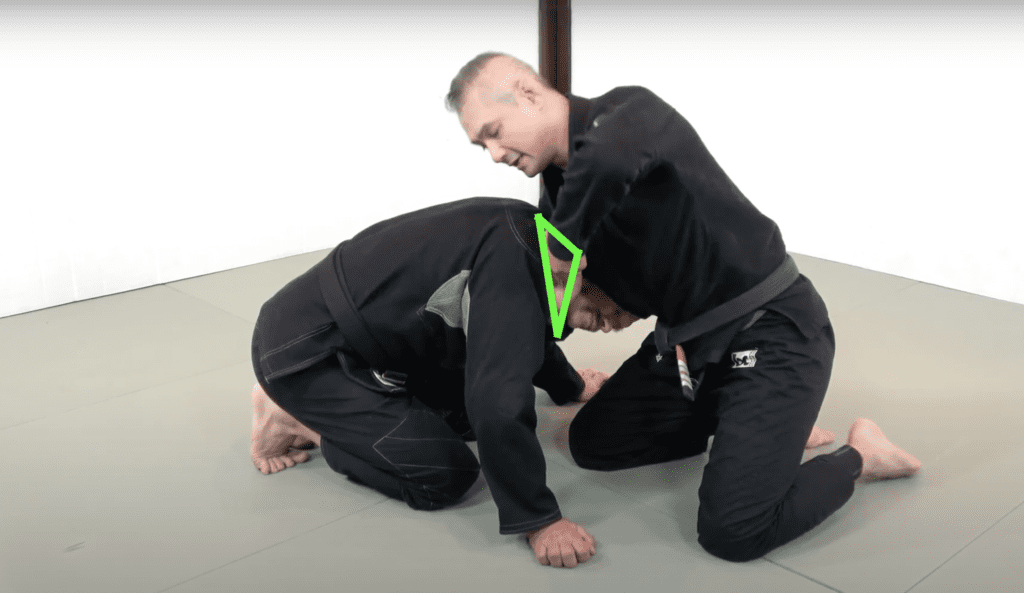
The blade of the paper cutter needs to go directly towards the base for the paper to cut. A common mistake is to extend back on the Guillotine. While this may work, mechanically it’s flawed with many of your partners just puling their head out. You want to see a shearing motion with your forearm towards your shoulder.
Arm-in Guillotine
Same idea as a regular Guillotine but you have one of your partner’s arms encircled within your grip. You’re still trying to shear your partner’s neck much like a sheet of paper in a paper cutter.
Rear Naked Choke
For the Rear Naked Choke, you’re turning your forearms into a paper cutter.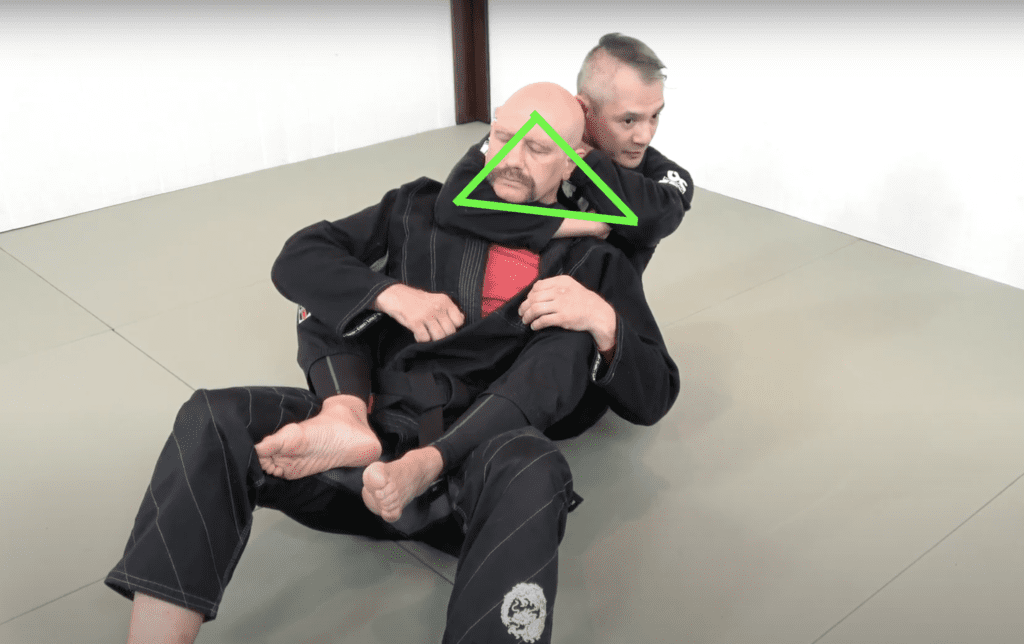
The forearm behind your partner’s neck is the base of the paper cutter while your forearm in front of your partner’s neck is the blade of the paper cutter.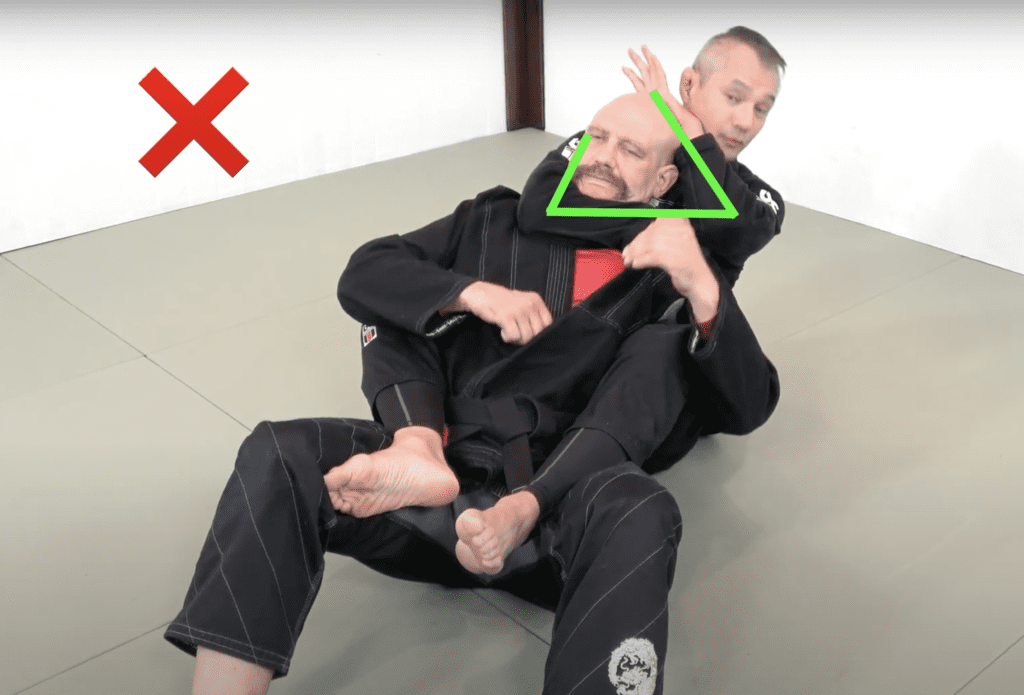
A common mistake is to have your forearm behind your partner’s head. This is wrong as you can’t get your forearms acting like a pair of scissors.
Takedowns
Foot Sweep
Applying weight the foot stops the foot from moving; then, unweight the foot so you can sweep the foot off the ground; and then, pull your partner down to the floor.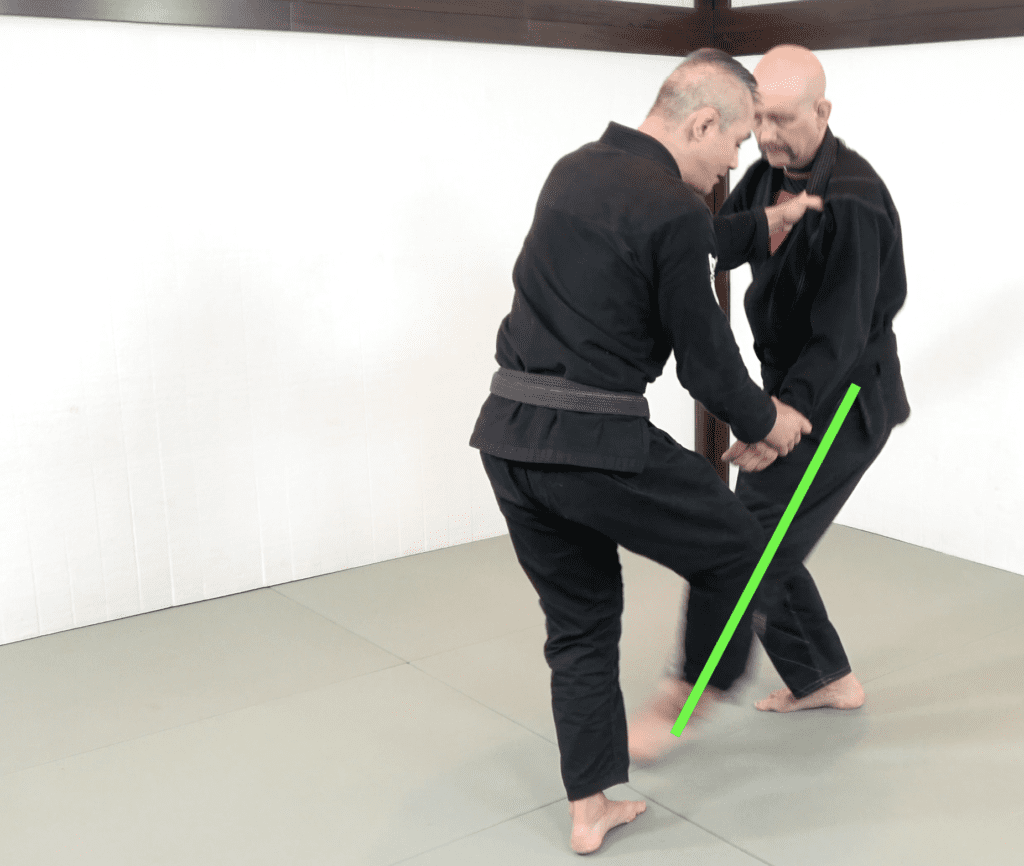
If your partner’s foot is on the floor; then, their leg is a frame; but, if their foot is off the floor; then, their leg is a lever that you can use to control them.
Foot Sweep From Back
The Foot Sweep From The Back is one of the best ways to learn and master the foot sweep. You essentially try and step on your partner’s foot. By using your head, push your partner so that weight comes off their foot. Once their foot is weightless, sweep it to the side for the take down.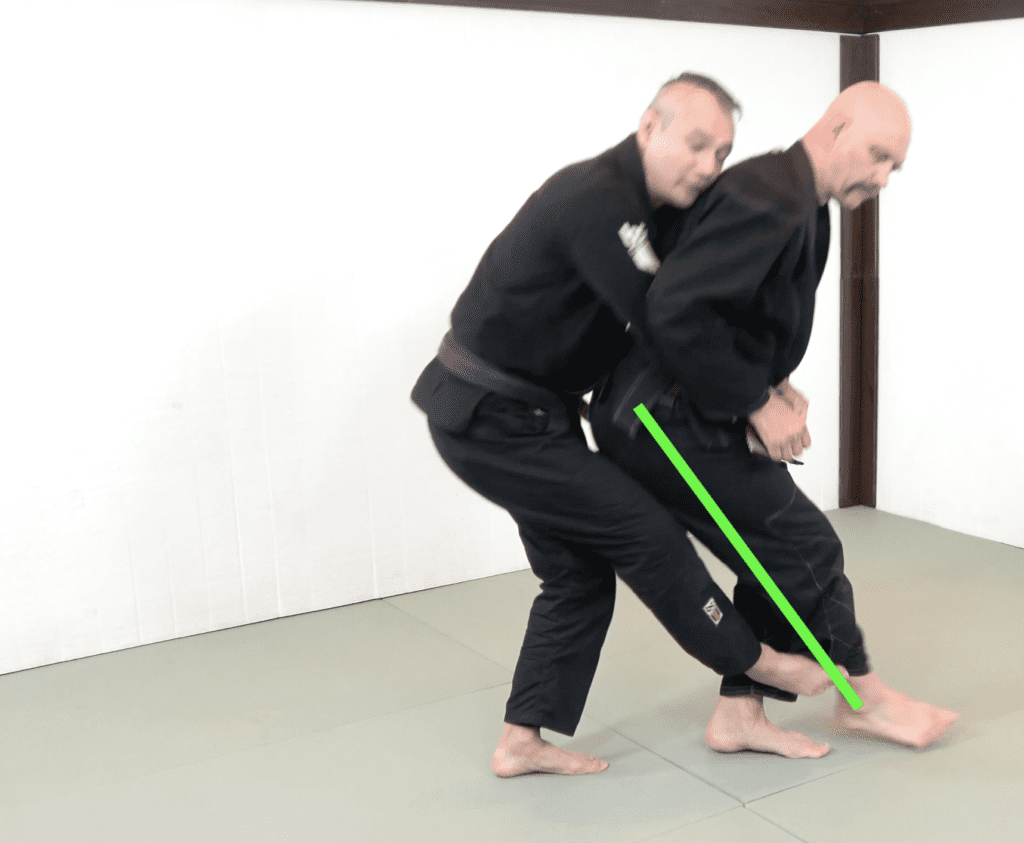
Essentially, with the Foot Sweep From The Back, you’re using your partner’s entire leg as a lever to take them down to the ground!
Lapel Drag To Ankle Pick
Pull on your partner’s lapel to elicit them drawing their weight backwards. Immediately, you want to grab their heel with your hand.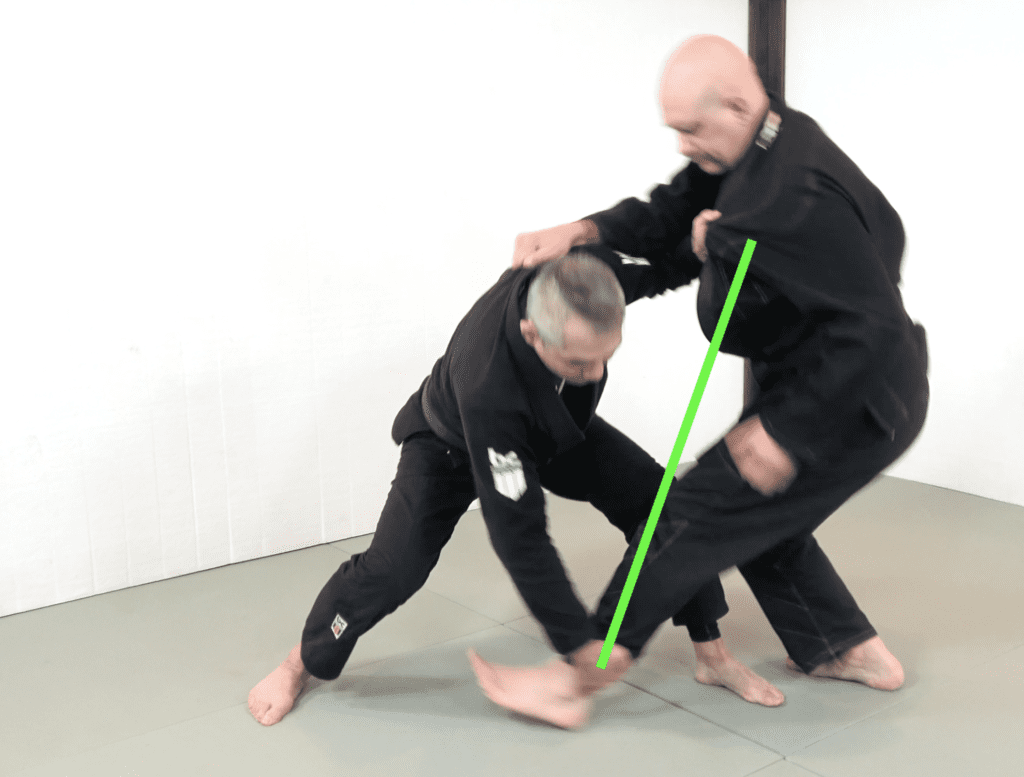
Essentially you’re turning their entire body into a lever as you push lightly with your lapel hand and pull with your hand on their heel.
Kneeling Tai Otoshi
The most common mistake is to pull straight down when doing the Kneeling Tai Otoshi. When pulling straight down, you’re allowing your partner to use their skeleton as a frame.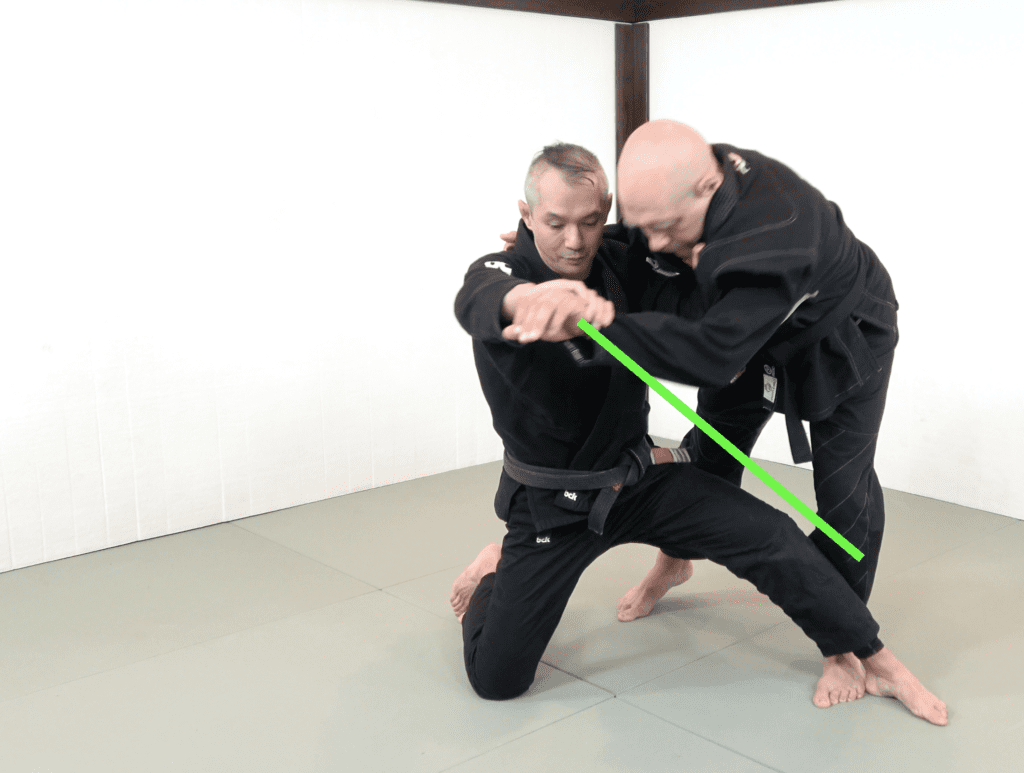
Instead, pull outward; thus, making their skeleton into a lever.
Snap Down
The snap down is a critical technique to set up other BJJ techniques. You want to apply pressure to the crown of the head. Mistakenly, people go for the neck.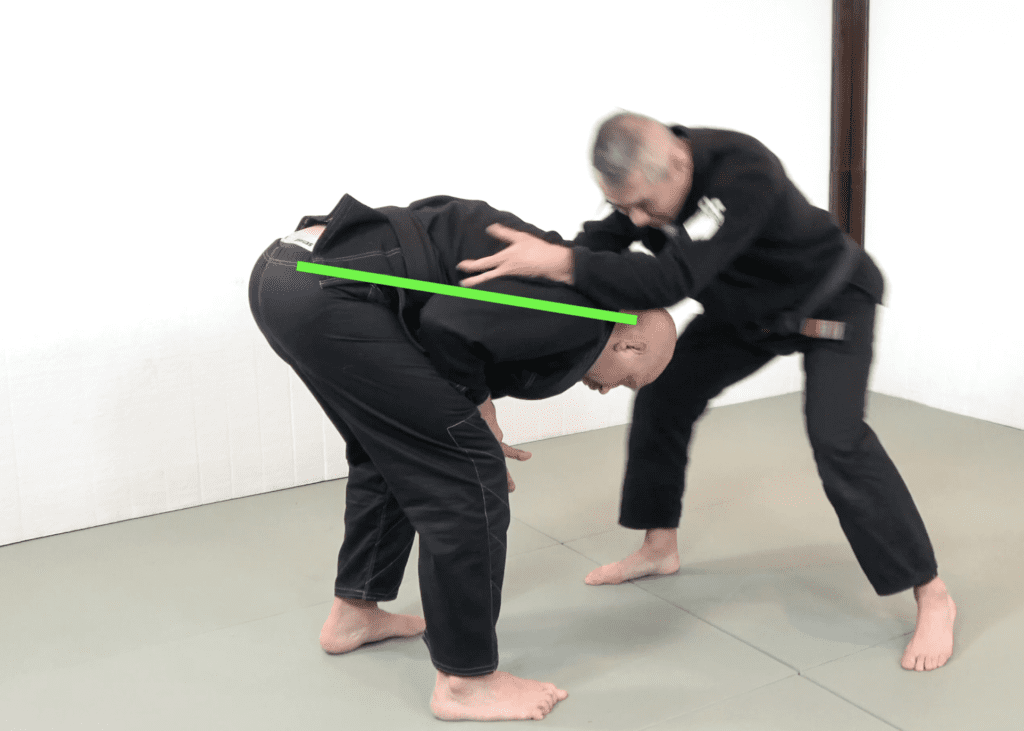
The neck is too strong, you want to consistency apply pressure to the longest end of the lever which is the crown of your partner’s head.
Single Leg – Run The Pipe
The Single Leg Takedown is one of the best examples of how to use your partner’s skeleton against them.
With your partner’s leg off the ground, you can use it to drag your partner down to the mat.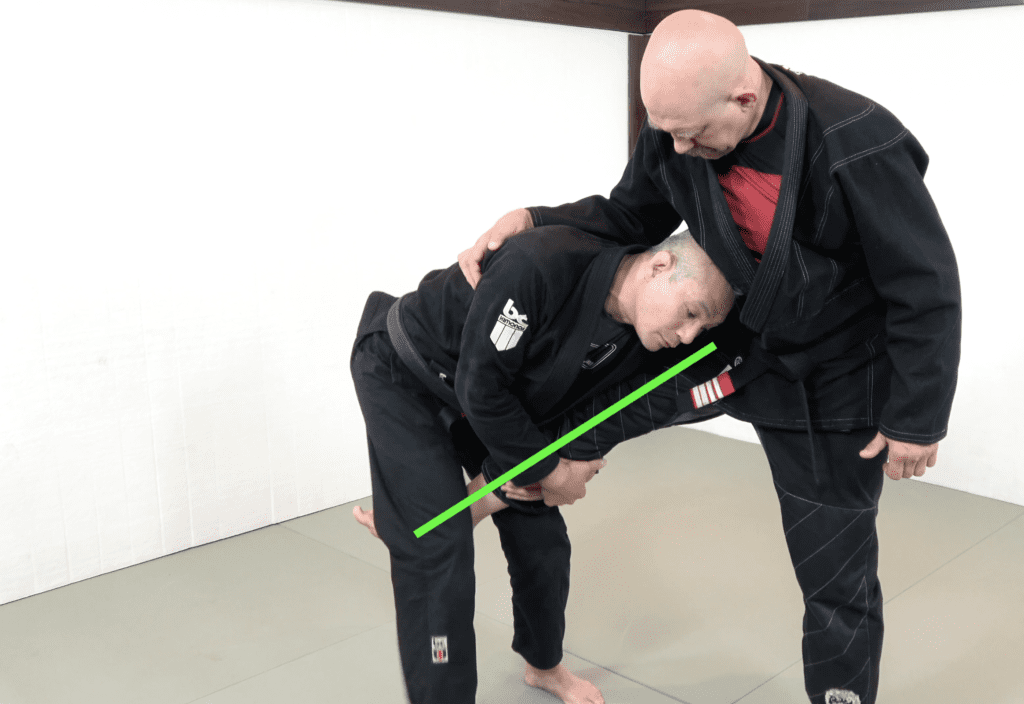
Ensure that you have as long of a lever as possible by pointing the crown of your head into their chest.
Single Leg – Heel To The Heart
By winning your partner’s leg in a takedown situation, you’re turning their leg into a lever which controls their entire body.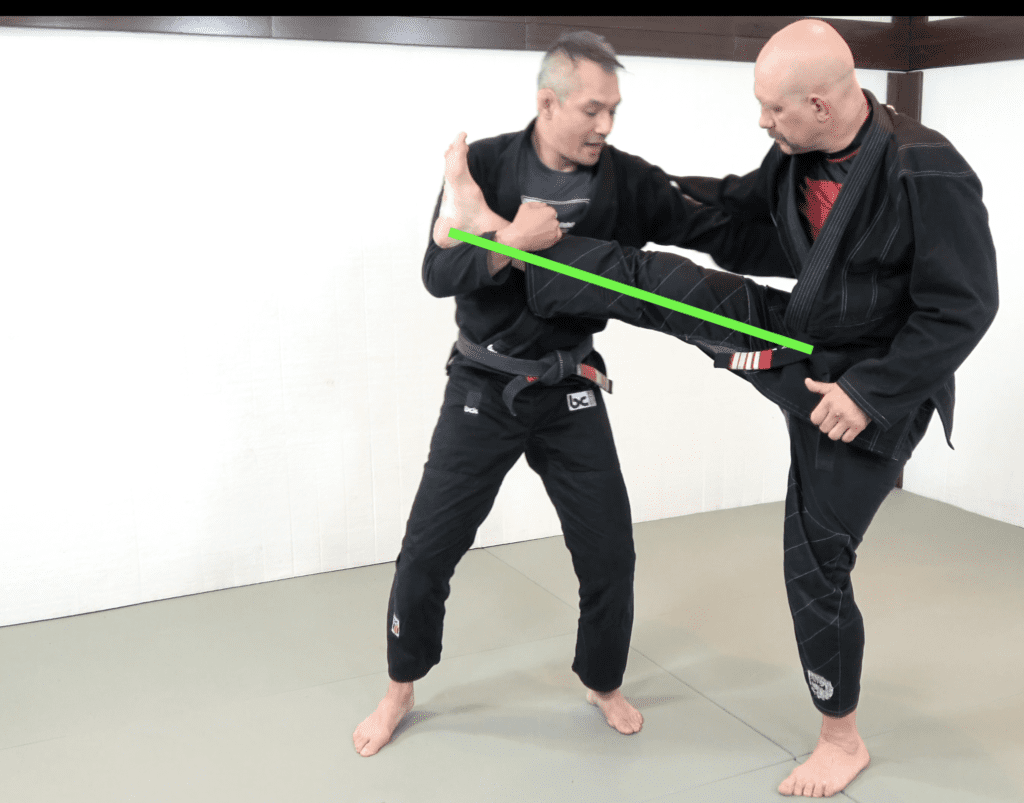
Heist your partner’s leg up as high as you can and get it so that their hopping on their toes. Most people will fall immediately; but, if necessary you might need to sweep out their foot.
Double Leg
Drive in underneath your partner’s shoulder to control your partner directly underneath their hips.
Frames stop force and motion; and thus, if you drive into your partner, they’ll defend your pressure by pressuring in using their legs. The Double Leg Takedown works when you turn their legs into levers.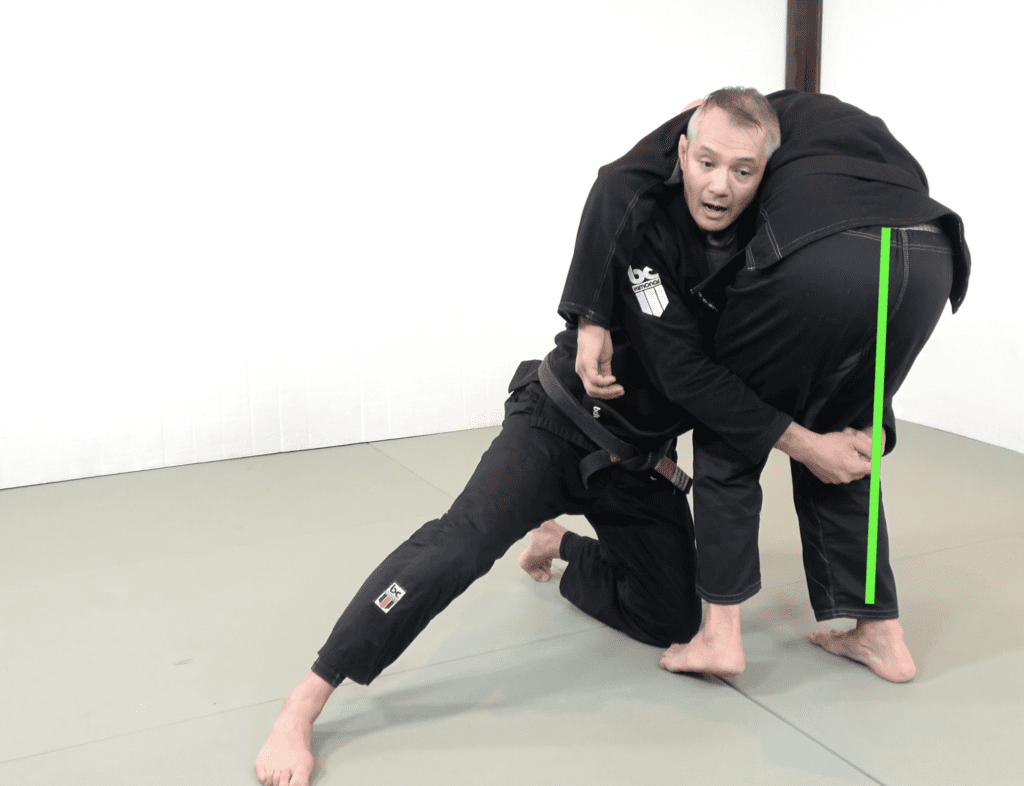
Connect your hands just under your partner’s hips. This will disallow their legs from driving into you as a frame.
Arm Bars
The Armbar is one of the most clear and obvious examples of how levers and frames work in Jiu Jitsu.
Closed Guard Armbar
Your partner’s spine is a stick that acts like a frame as you try and pull them down. For the Armbar to work you need to first pull their head down so that their spine is now a lever that works against them.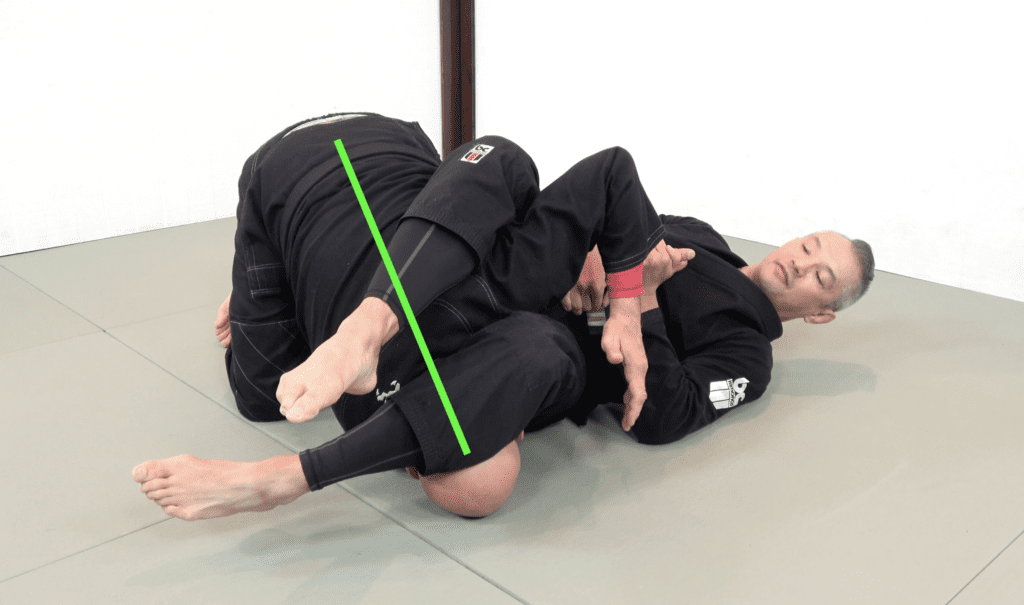
Only now can you bring your leg over their head to finish the Armbar. If you execute the Armbar while your partner is still framing with their spine, your partner will be able to easily defend the Armbar.
Closed Guard Back Take Armbar (Belly Down)
While attempting to transition to the back, you can also transition to an Armbar.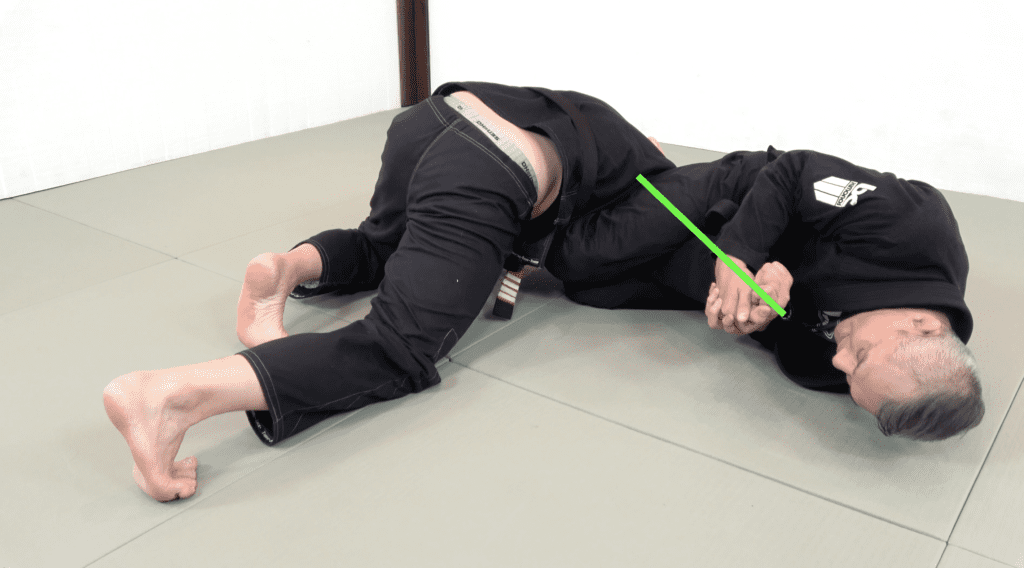
By controlling your partner’s arm, you are controlling their entire body by weaponizing their skeleton and turning their arm into a lever which controls their entire body.
Mount Armbar
When attacking my partner with an Armbar from Mount, I’m using my arm as a lever and I’m prying my partner’s legs over to the side so that he can’t come up.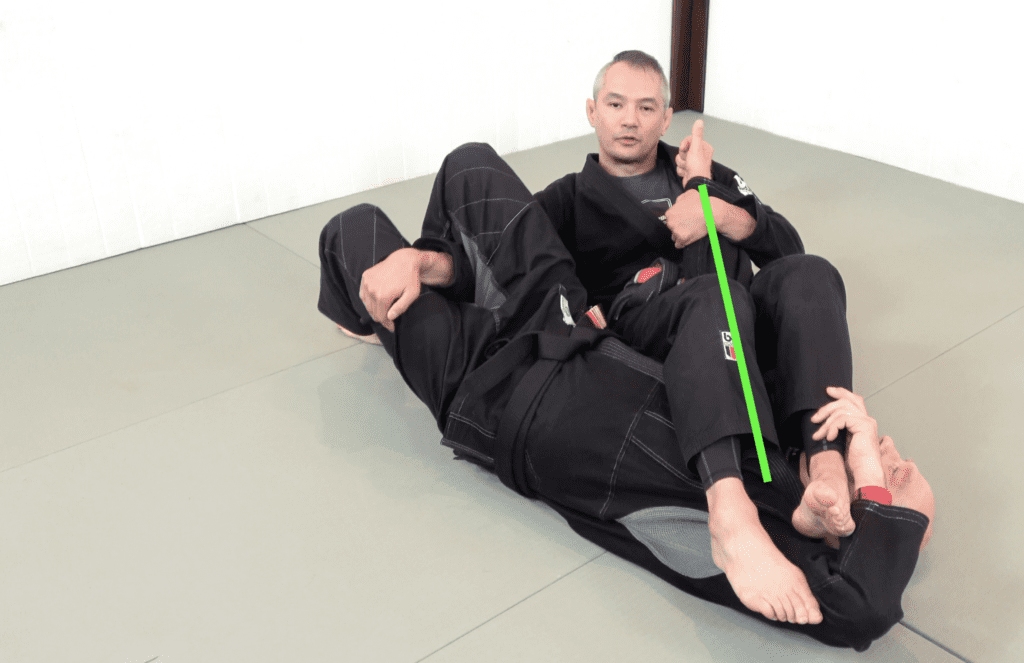
In addition, I’m always looking for the longest lever possible; thus, I’m controlling my partner’s fist with my hands to finish the Armbar.
180 Armbar
From Knee On Belly, I want to see my partner’s arm as a lever to pick up my partner’s shoulder off the ground so that I can slide my shin behind their spine.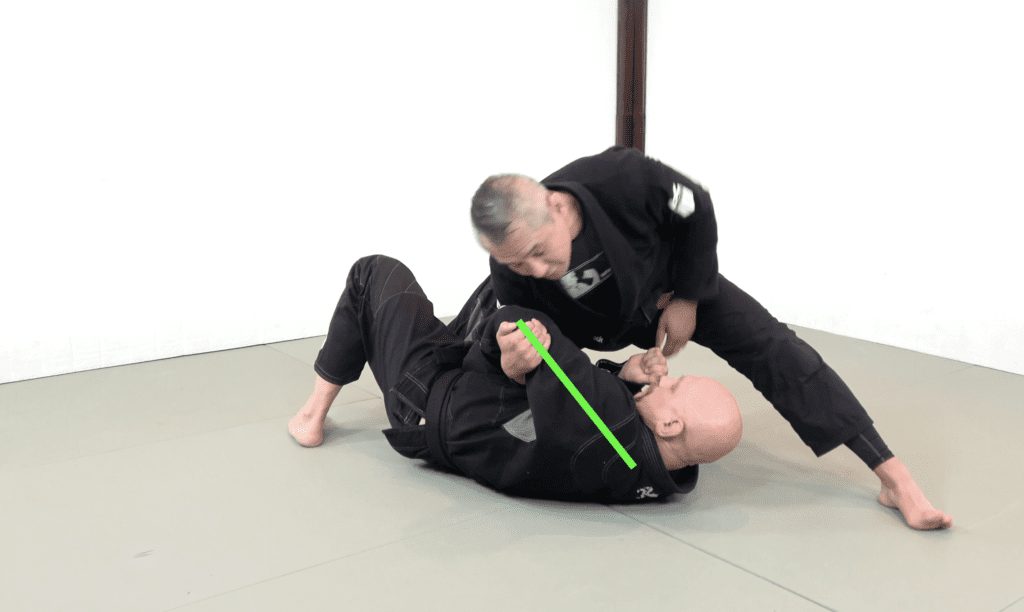
Once controlling their arm, I can know throw my left leg over their torso for greater control. Think left, left, left when you’re finishing the Armbar.
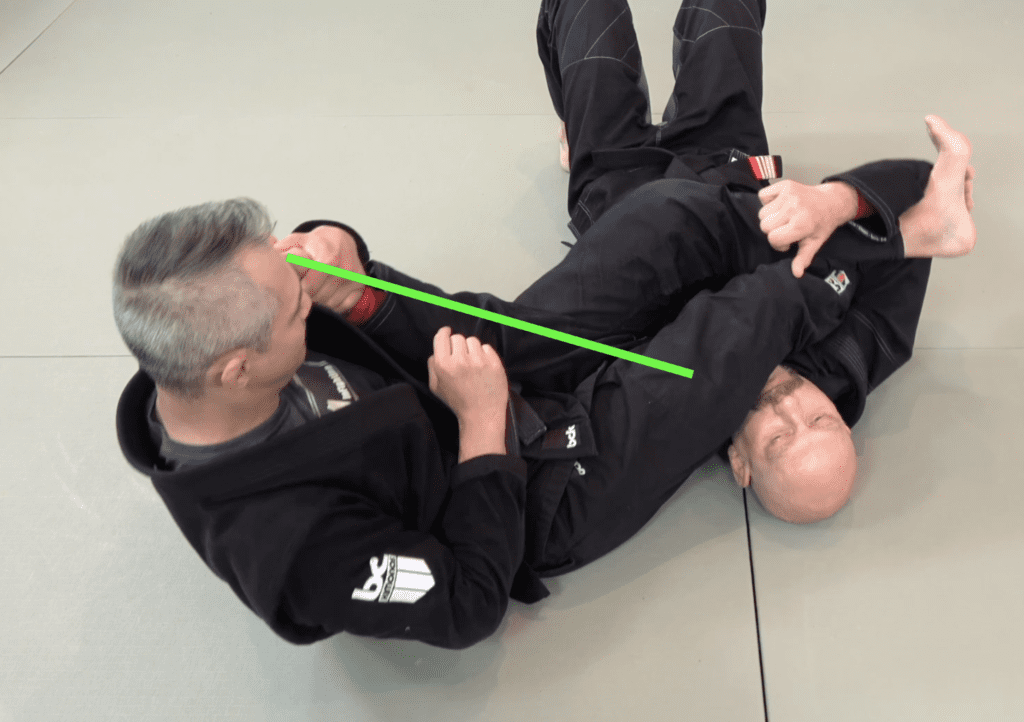 Their left arm, over your left hip, while using your left hand.
Their left arm, over your left hip, while using your left hand.
Pressing Armbar Butterfly Guard
Attempt a sweep from Butterly Guard. The sweep is not simply an attack to get on top of your partner, it can also be used to set up additional attacks. As your partner posts their hand on the ground to defend the sweep, their arm is a frame is used to stop the force of the sweep.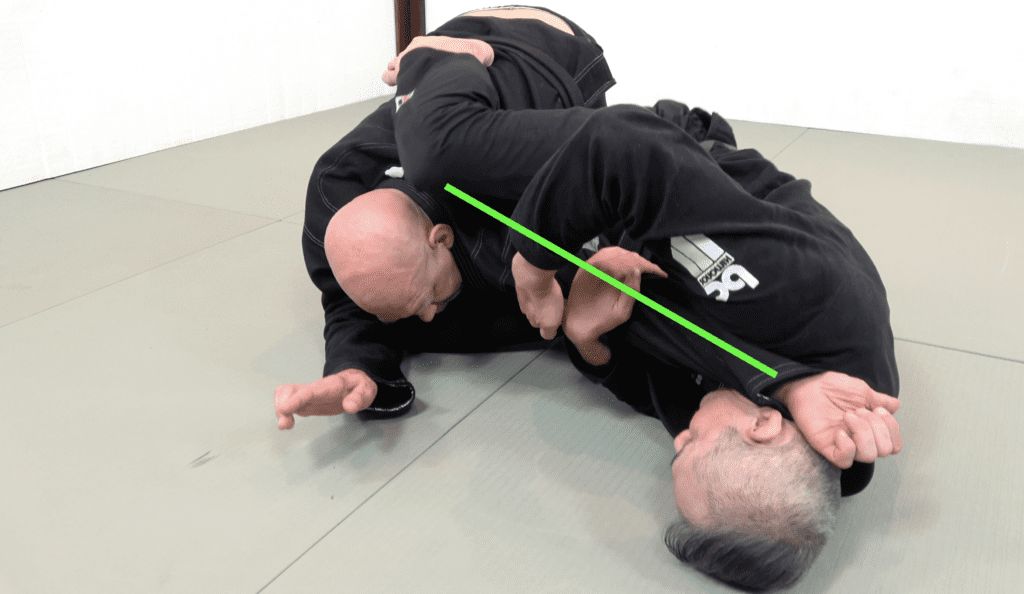
You’re always looking to turn your partner’s frames into levers; thus, capture their arm with their wrist against your neck; and then, press along their upper arm while ensuring their thumb faces the ground.
Kimura
The Kimura is a shoulder lock where the forearm is essentially a wrench that’s attached to a bolt, the upper arm. And you’re trying to break the bolt. Bolts and wrenches work at 90 degree angles against each other so it’s critical that you’re creating these angles when you’re executing your Kimura
Closed Guard Kimura
From your Closed Guard, you’re always looking to pull your partner’s posture down. When you can’t pull your partner’s posture down; then, you have come up. Control your partner’s neck with a collar tie, put both of your feet on the ground, and push your training partner to the side by posting your right hand on the ground.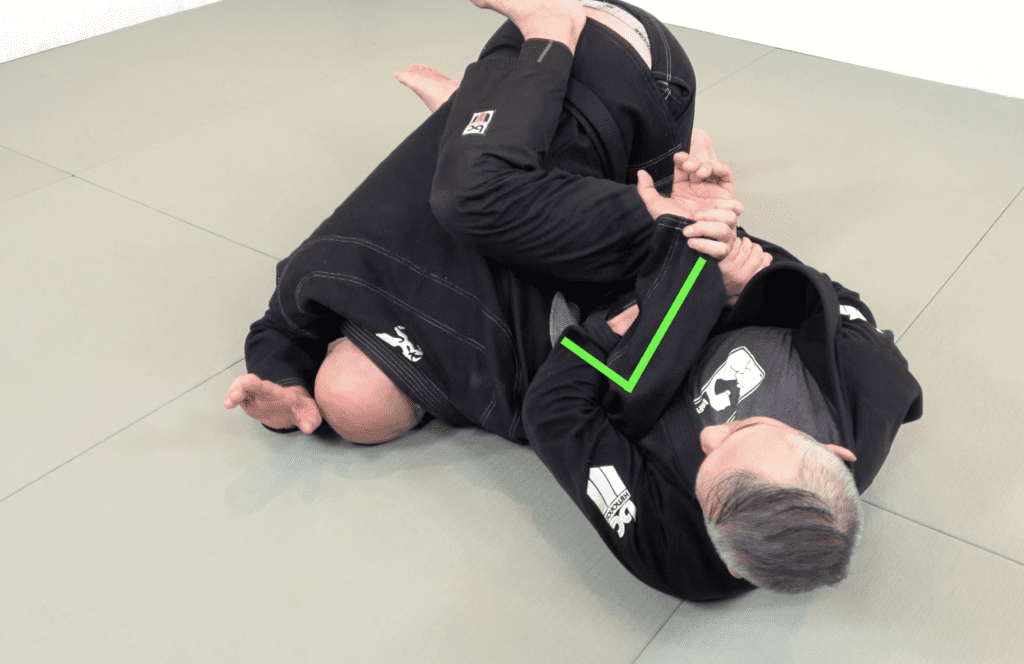
Your partner will post their left hand on the ground as a frame. Now, turn their frame into a lever by sliding down to control their arm and go for a Kimura.
Half Guard Kimura
There’s 2 ways to do the Kimura from Half Guard.
Half Guard – Crossface Arm
When your partner is trying to control your neck with their left arm, use your left leg to kick your partner so they plant their left hand on the mat as a frame.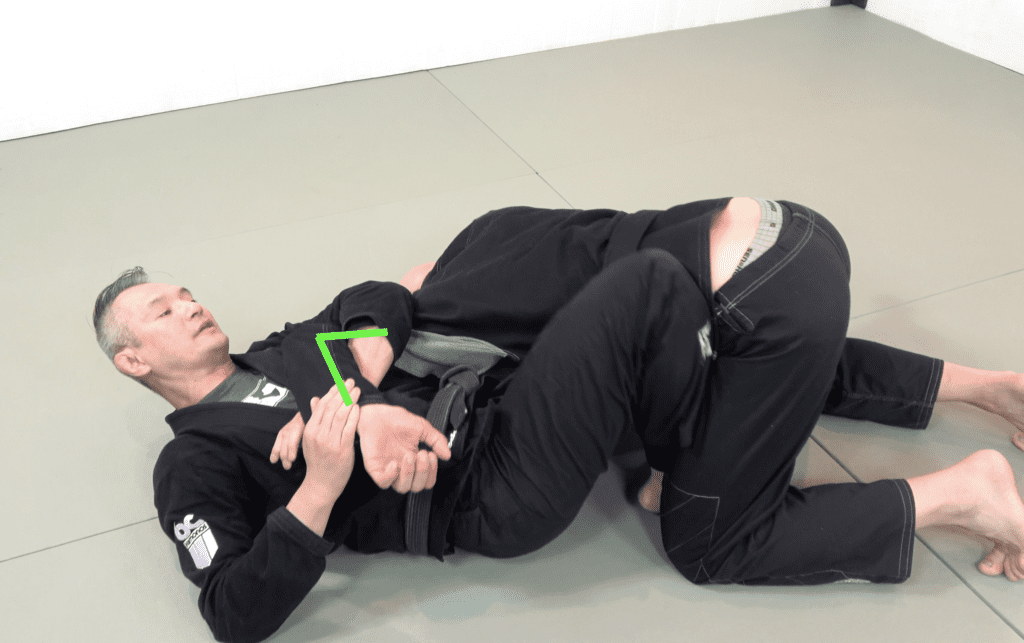
Turn your partner’s frame into a lever by sitting up and tying up a Kimura on their left arm.
Half Guard – Underhook Arm
Your partner’s right shoulder is a frame to prevent you from simply moving to there back; their right arm bolsters that frame.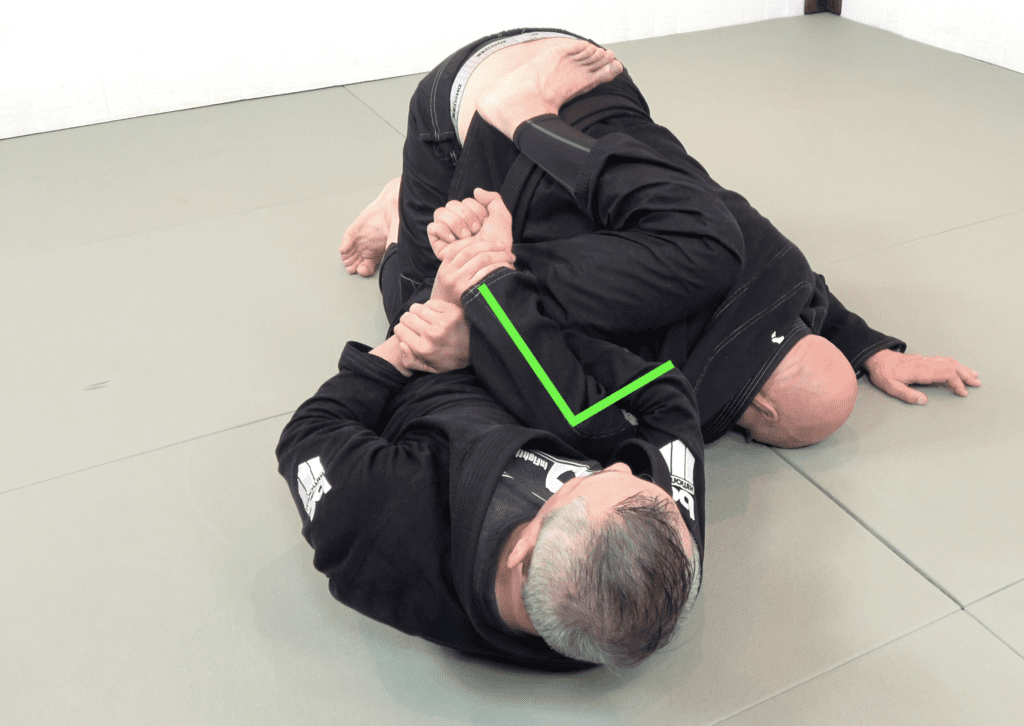
To turn your partner’s frame into a lever, throw your left knee over their right shoulder blade. As well, control the corner of their elbow (insert close up image) and then, tie up your Kimura.
Top Half Guard Kimura
When fighting your partner from Top Half Guard, you can attack a Kimura when they have a left Underhook on you.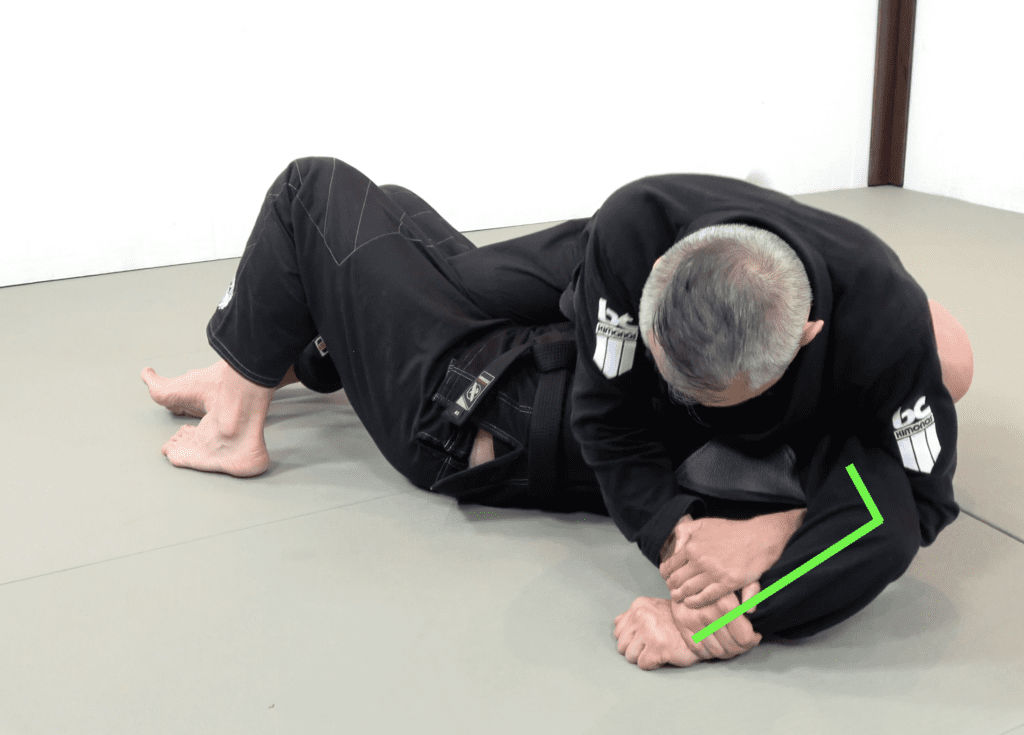
Turn so that your left side is on your partner and while facing their legs, wrap up your Kimura grip on their left arm; thus, turning their left frame into a lever for your control. Make sure you have 90 degree angles to tap out your partner.
Top Cross Side Kimura
Controlling your partner in Cross Side, you can go for a Kimura when your partner has a left Underhook. Put your head to the mat to turn your partner’s frame into a lever. Turn your body to tie up the Kimura grip.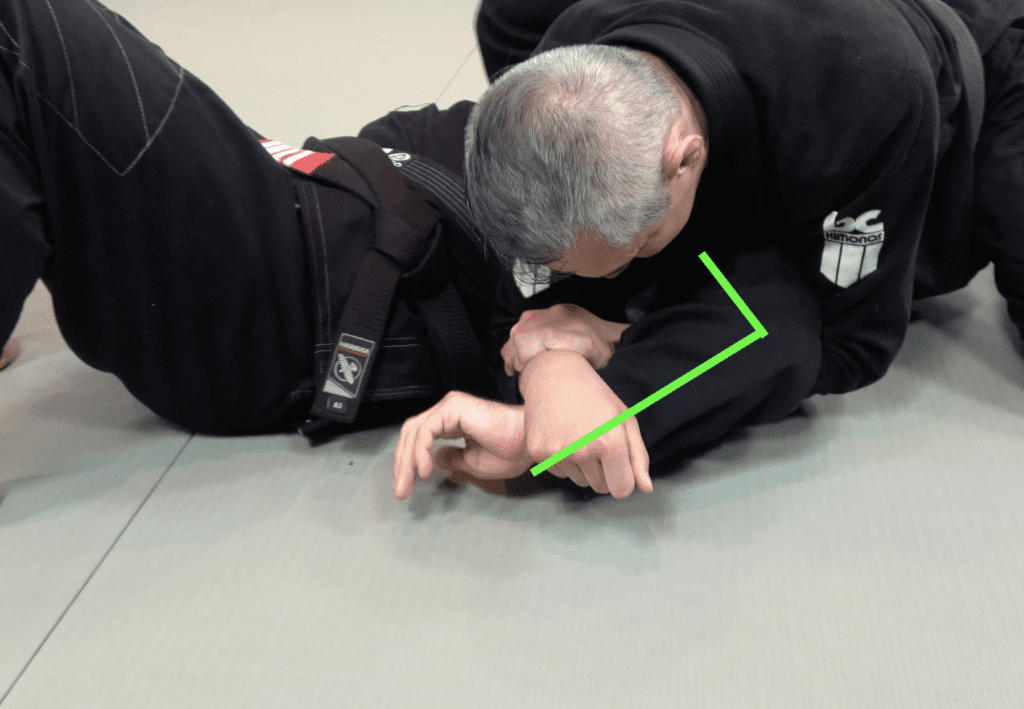
And then, go into a North/South position so you have the best chance of winning a 90 degree position with your partner’s arm.
Omoplata
The Omoplata is a powerful shoulder lock executed by your legs and is one of the most versatile BJJ techniques in existence. And like all shoulder locks, they are essentially a wrench and bolt system. Remember bolts and wrenches only work when they’re 90 degrees to each other.
Closed Guard Omoplata
From the Closed Guard, we’re looking to win a collar and sleeve grip combination on our partner by grip striping and controlling their left arm. Your partner was framing with their left arm and we’re turning that frame into a lever. And with both of your feet on your partner’s hips, you’re elevating your hips and then turning out to the side.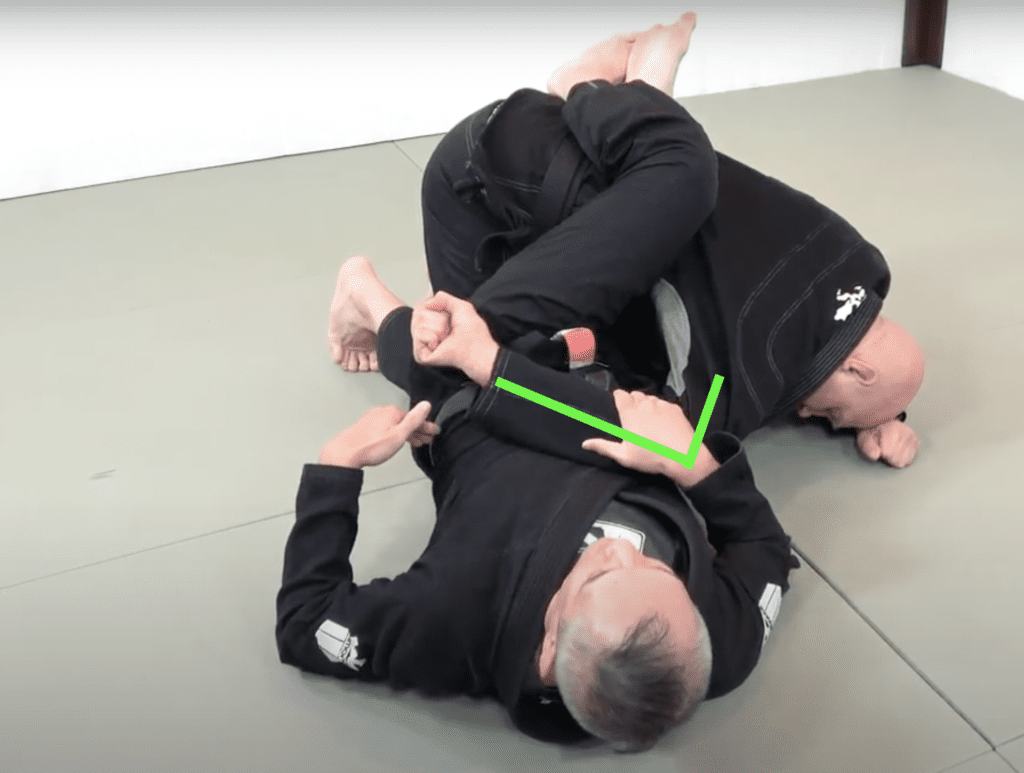
You need to be looking to create a 90 degree angle in your partner’s left arm.
Spider Guard Omoplata
As your partner stands up in your Open Guard, the key thing you want to do is destroy their posture. Your partner’s head up with their spine acting as a frame is your enemy. Your objective is to turn their spine into a lever.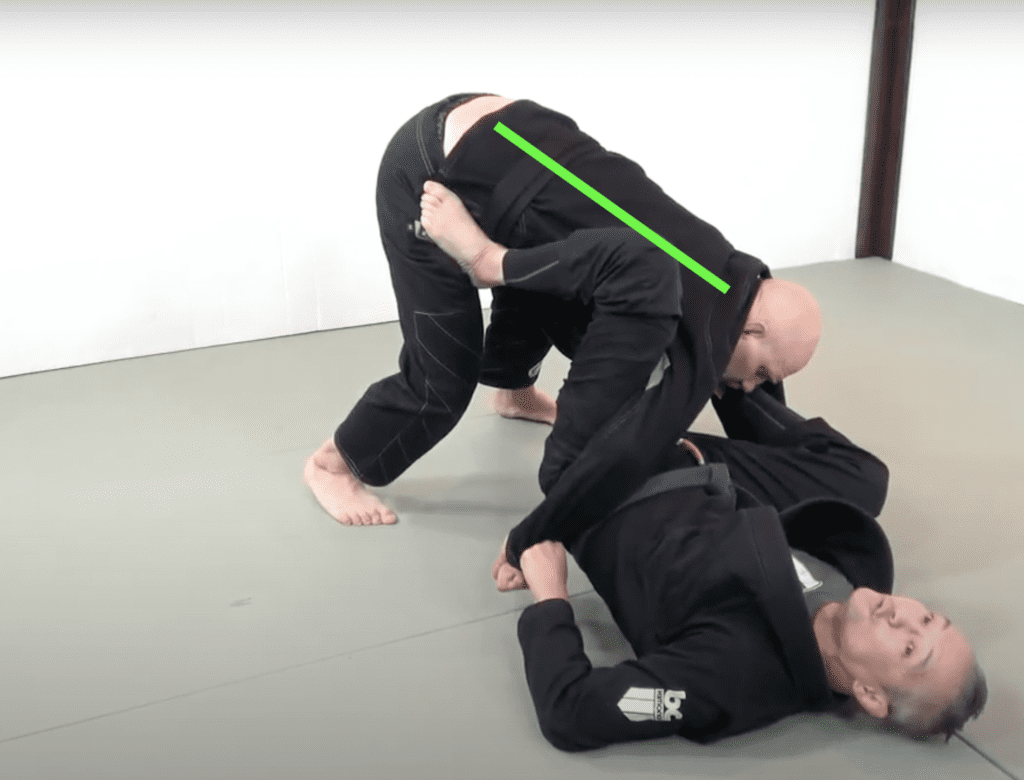
With their head below their hips, now it’s time to elevate your hips to enter into your Omoplata.
Triangle Choke
The Triangle Choke is probably the most powerful choke in BJJ. Done with the legs, it the triangle position with your foot behind your knee turns your legs into an arm and neck crushing tool.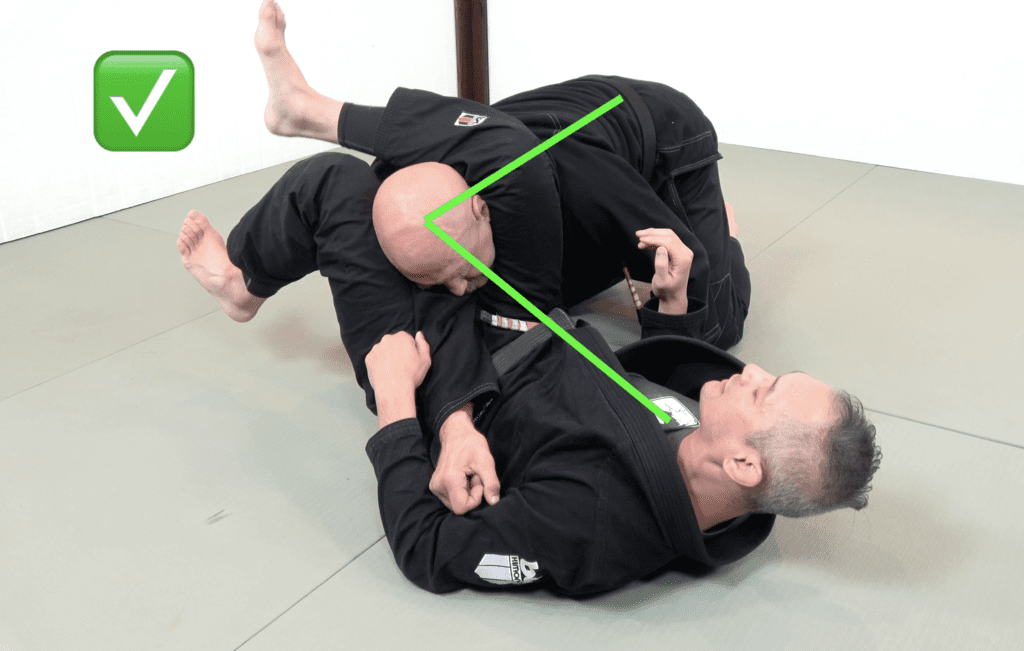
For the Triangle Choke, imagine your legs being a paper cutter and your partner’s neck being the sheet of paper. You want your top leg shearing down on your partner’s neck and your bottom leg acts as the base of the paper cutter. Notice that for this to work, you’re spine needs to be 90 degrees to your partner’s spine.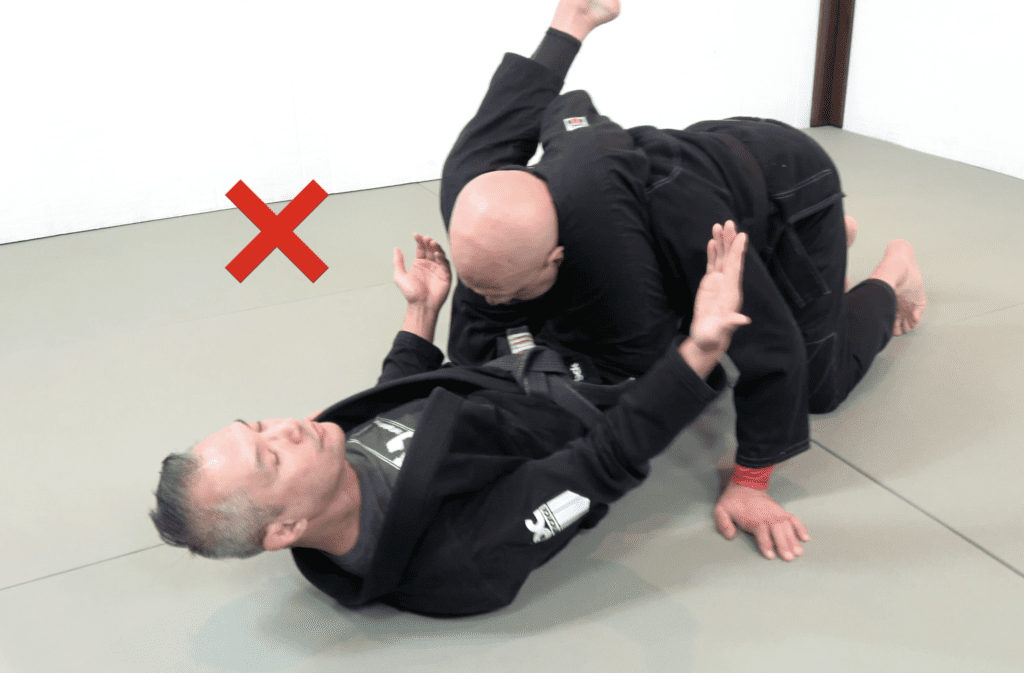
Conversely, your Triangle Choke will not work if your spine is parallel to your partner’s spine. Your top leg acting like a lever similar to the shearing forces of a paper cutter will have no effect.
Closed Guard Triangle Choke
The most important part of the Triangle Choke is to first turn your partner’s spine into a lever by collapsing their posture instead of having their spine straight up and acting like a frame.
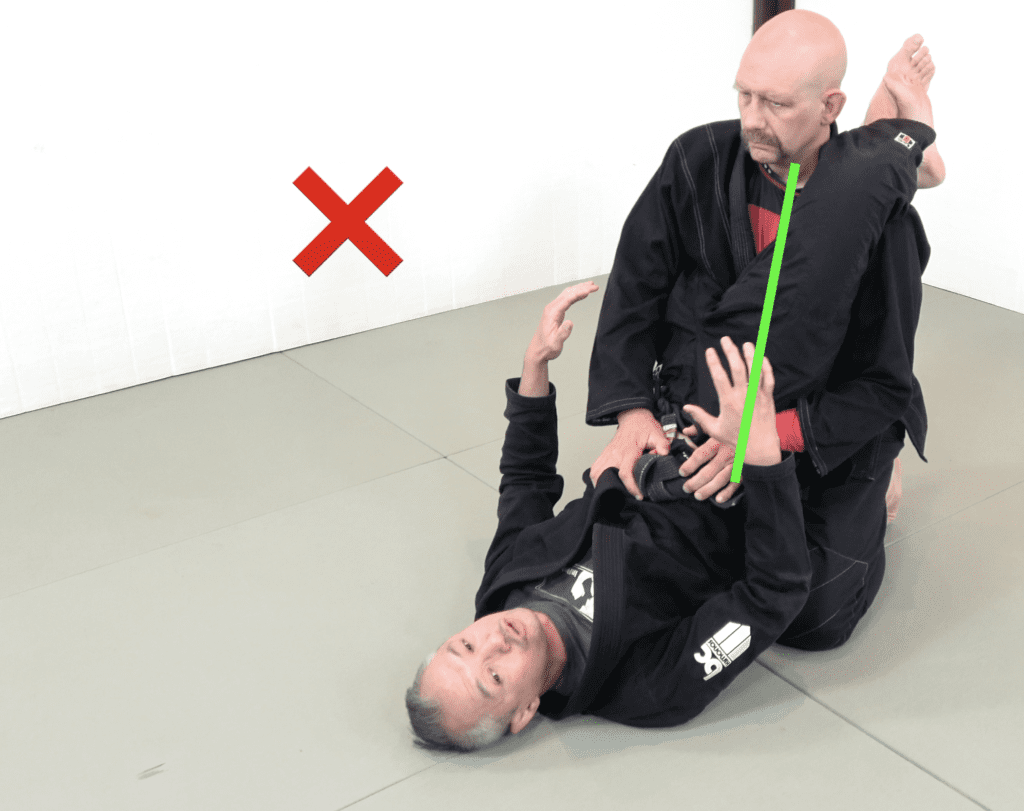 Once your partner’s posture is broken, pummel your leg over their shoulder to get into the Triangle position; and then, transition eventually into the Triangle Choke.
Once your partner’s posture is broken, pummel your leg over their shoulder to get into the Triangle position; and then, transition eventually into the Triangle Choke.
Spider Guard Triangle Choke
Once you have your partner’s posture broken from your Spider Guard, you can now enter into your Triangle Choke.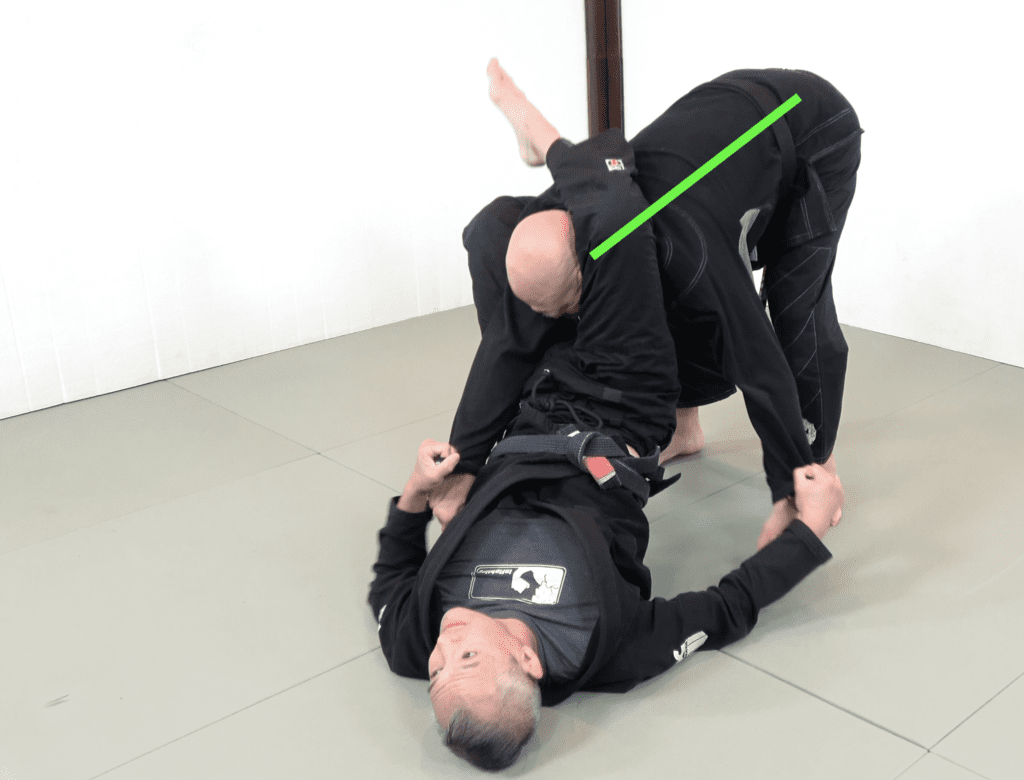
Remember, entering into the Triangle Choke when your partner’s spine is a strong frame is fool hardy and most likely you’ll lose the position. Always look to turn your partner’s spine into a lever first.
Ankle Lock
Single Leg X Guard Ankle Lock
You always want to access the longest lever possible when attacking your partner and this is no different when going for an Ankle Lock.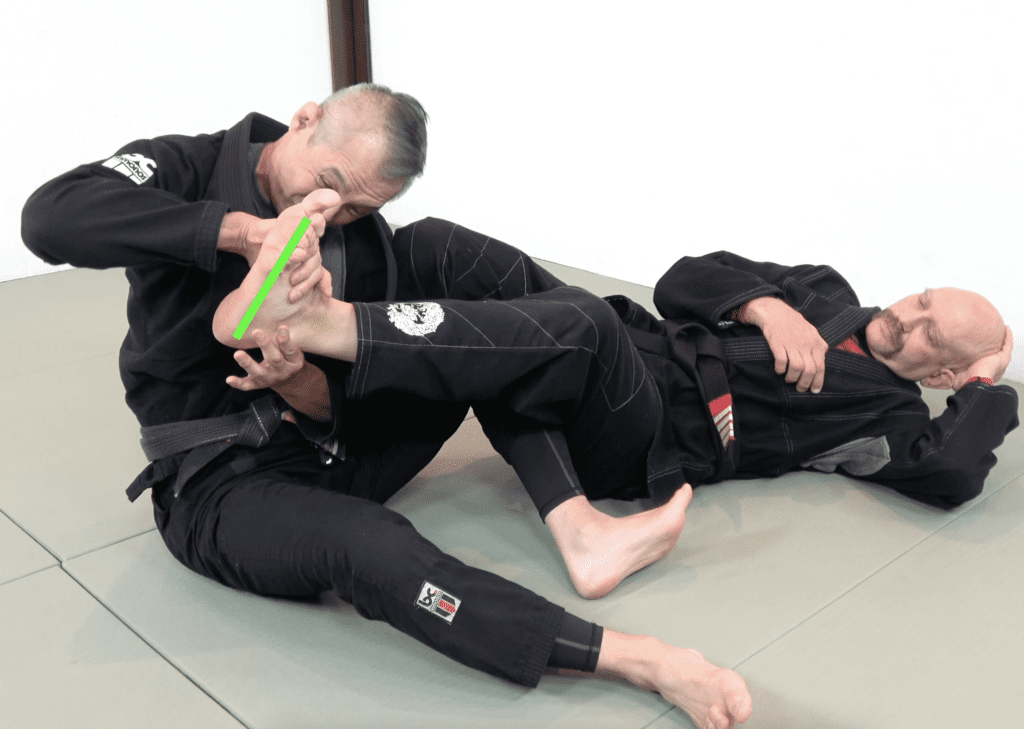
Look to control your partner’s toes with your armpit; thus, disallowing them from pulling their toes towards them to defend.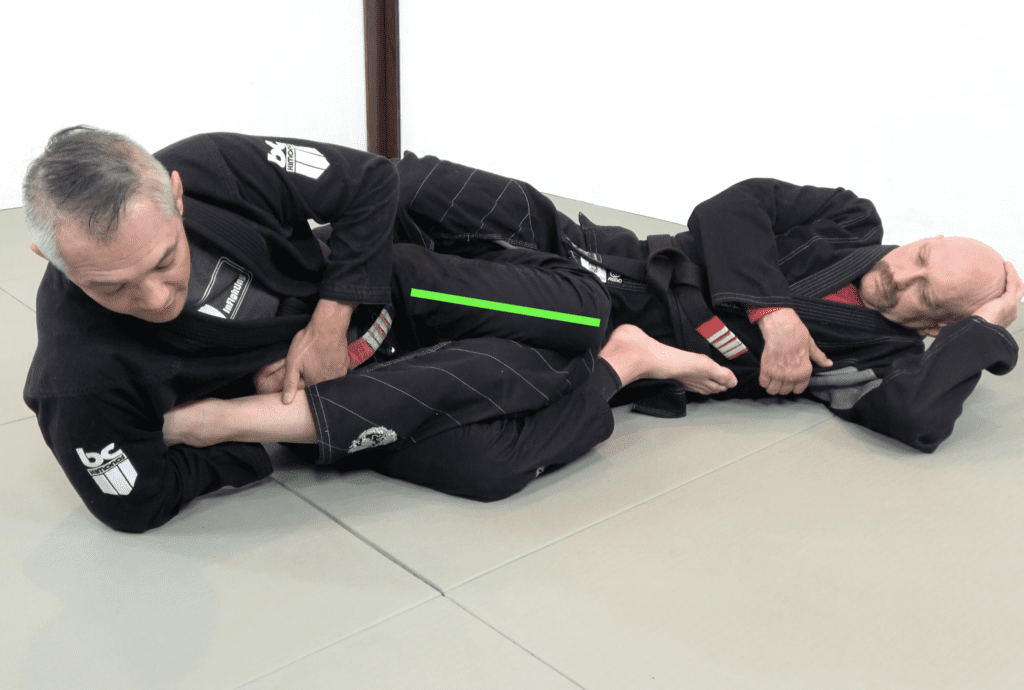
Further, use your knee and your foot from the Single Leg X Guard position as a frame to maintain the proper distance with your partner so that they can’t control your hands.
Guard Sweeps
All Guard Sweeps work when you’re able to get at least one of your partner’s legs off the ground. As with all BJJ techniques, if your partner’s right leg is on the ground it’s a frame; but, if you bring it off the ground, it’s a lever.
Flower Sweep
From your Closed Guard, attempt a Back Take by circumventing your partner’s right elbow and by controlling partner’s left lat. Kick so that your partner’s left leg begins to lift off the ground.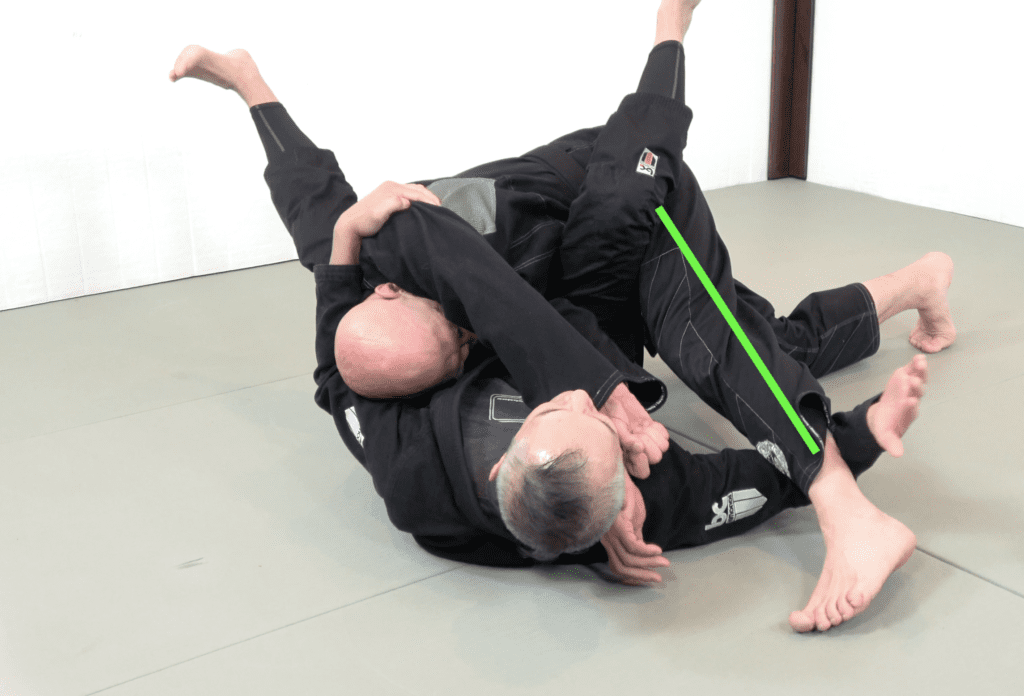
Now you can use your right arm to take advantage of your partner’s left leg and use it as a lever to complete the sweep.
Scissor Sweep
Control your partner’s left collar and left sleeve from your Closed Guard. Now, tilt on to your right hip so your left shin covers their belt. Rock forward and back to lift your partner off the ground.
Once you’re supporting your partner’s weight on your left shin and their legs are off the ground, your partner’s left leg is now a lever for you to kick across and use as a sweeping tool.
The Basic Half Guard Sweep
In Jiu Jitsu, one of the key battles is to turn your partner’s limbs into levers; while, at the same time, preventing them from turning your limbs into levers. From Half Guard, underhook your partner’s hip and with both of your legs look to keep your partner’s right leg off the ground.
As with all BJJ techniques, if your partner’s right leg is on the ground it’s a frame; but, if you bring it off the ground, it’s a lever. With your training partner’s leg off the ground, you want to see your partner’s leg as a giant lever to control the rest of their body!
Reverse Half Guard Sweep
If your partner wins the battle to keep their right leg on the ground, now fall to your right side and look to lift their left leg off the ground.
By forcing your partner’s left leg off the ground, you can now use their left leg as a sweeping lever.
Butterfly Guard Sweep
From Butterfly Guard, you’re looking to get both or one of your partner’s legs off the ground. If you’re partner is driving into you; then, simply rock back, use both your feet to lift up your partner’s legs and sweep them over your head.
If your partner is more static; then, focus on lifting up their one leg.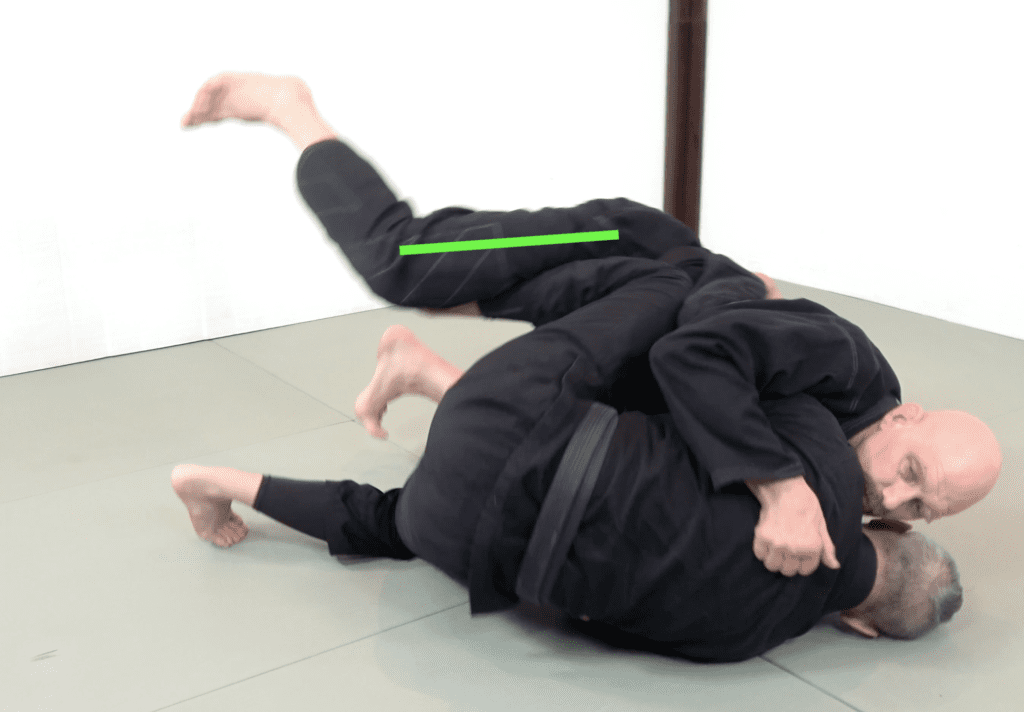
For the sweep to work, you need to lift up your partner’s right knee so that it is higher than their hip; thus, turning your partner’s leg into a lever that facilitates the sweep!
Tripod Sweep
As your partner stands up in your Open Guard, you need to immediately stop them from just running around your Guard. Grab their left ankle with your right hand and hook their right knee with your left foot while keeping your right foot on their left hip. When your partners feet are on the ground, their legs act as frames supporting their weight.
The objective with all BJJ techniques is to turn their frames into levers. For you to turn your partner’s left leg into a lever, lift their left foot off the ground by pressing onto their left hip with your right foot. Once their foot is off the ground, pull their foot towards you for the speed.
Foot On Bicep Sweep
With the Foot On Bicep Spider Guard Sweep, you’re turning your partner’s entire body into a lever.
Position yourself directly under your partner much like you would for X Guard. Then, draw your foot out; thus, pull your partner away from their feet causing their entire body to turn into a lever. If you try and stomp down with your foot on their bicep, you’ll only reinforce the frame your partner has through their spine and their legs.
Single Leg X Guard Sweep
With your partner standing with their feet on the ground, their legs act like frames to support the weight of their body. The key principle in Jiu Jitsu is to turn their frames into levers. To do this you need to lift their foot off the floor so their leg turns into a lever. Turning frames into levers is the key principle ruling all BJJ techniques. From Single Leg X Guard, you want to act like a bottle jack and lift your partner’s foot off the ground. Once their foot is off the ground, now use your tricep to cut your partner’s foot out from underneath them to complete the sweep.
If your training partner’s foot is flat on the ground, it’s incredibly hard to make the Single Leg X Guard Sweep work. The sweep was only made possible since you lifted your partner’s foot off the ground; thus, turning their leg into a lever.
X Guard Technical Standup Sweep
Jiu Jitsu is basically stick fighting. And legs are just sticks. Sticks can either be frames or sticks can be levers. If legs are supporting weight; then, they’re frames. If your partner’s leg is off the ground; then, it’s a lever.
From X Guard, kick your partner away so that their left leg is off the ground; thus, turning it into a lever for you to control. Post up on your hand and stand up to complete the Technical Standup Sweep on your partner.
X Guard Sweep
If your partner is able to keep both their legs on the ground; then, their legs are strong frames to resist your sweep attempts. The key principle in all BJJ techniques is to see that Jiu Jitsu is just stick fighting and that legs are just sticks to either absorb force or amplify force.
From X Guard, lift your partner’s one leg off the ground to create a lever and sweep them to the ground using a classic X Guard Sweep.
Back Takes
Frames absorb force and stop motion. Jiu Jitsu is just stick fighting and all BJJ techniques are based on turning your partner’s frames into levers.
Your partner uses frames to stop you from moving. Push your partner’s frame to the side to turn it into a lever.
Closed Guard Back Take
As your partner posts their elbow on hip, their arm acts as a frame to stop you from coming up and around.
Turn their arm into a lever and force their arm to the side. Now you can come up and take your partner’s back.
Half Guard Back Take
Your shoulder is a frame from Half Guard. See your shoulders as a stick that’s creating an equal and opposite push into your opponent’s weight.
Bump your partner forward so you can circumvent their weight and win their back.
Butterfly Guard Back Take
Your partner’s arms are sticks that stop you from moving forward; thus, your partner’s arms are frames.
Displace your partner’s frames by using your Butterfly Guard to sweep your partner forward so their hands are on the ground. Now, there’s no frames in place to stop you from climbing up to win their back.
Top Turtle
Near leg lever to first hook
Your partner may be using their near leg as a frame to hinder your motion.
Your object is to turn this frame into a lever. Wedge your right knee inbetween your partner’s near elbow and knee.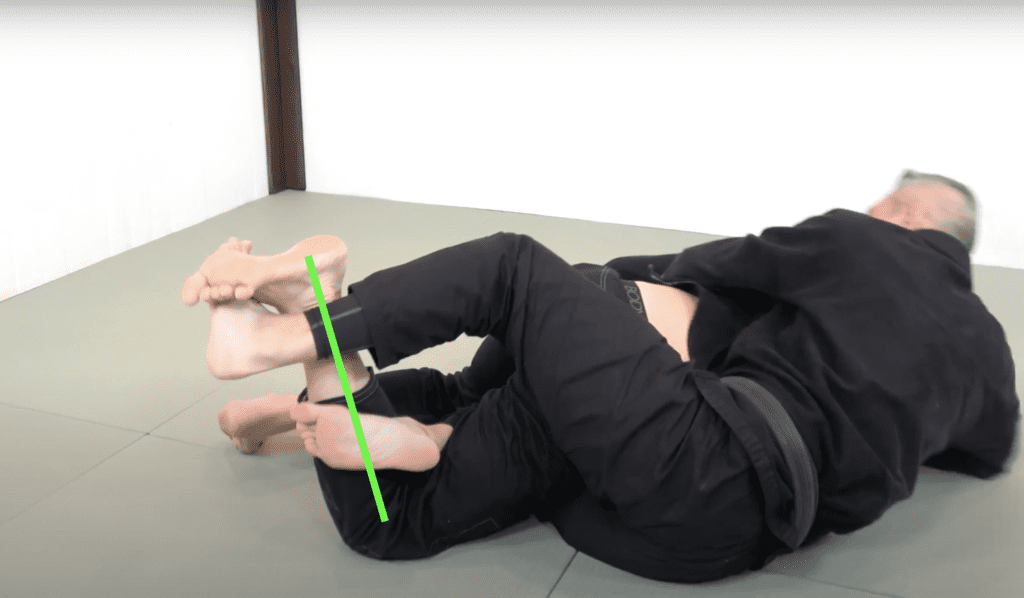
With your left heel, pull your partner’s right ankle towards you making it into lever that will eventually lead to your first hook.
Turtle Sweep counter to first hook
When your partner attempts the Turtle Sweep, use that as a countering opportunity to get your first hook in.
Use their right leg as a lever to turn them so they expose their left side so you can drop in your second hook.
Mount To Back
When defending Mount, you need a frame on your partner’s hip so they don’t transition to S Mount or transition to the back. If you try to take the back with a frame against your hip, you’ll wind up on bottom.
If your partner doesn’t have a frame established on your hip, lapel drag your partner into the back position.
Arm Drag From Bfly Guard
Your partner will typically have their arms framing you from getting close to their upper body when you’re fighting from your Butterfly Guard. Frames are just sticks for you to turn into levers.
Control your partner’s one arm with both of your hands, pull the arm across as a lever to expose their back.
Guard Passing
Back Pocket Guard Pass
Standing up in the Closed Guard is one of the best ways to pass the Closed Guard. Place your right hand underneath your partner’s ankles – as if you were reaching for your back pocket.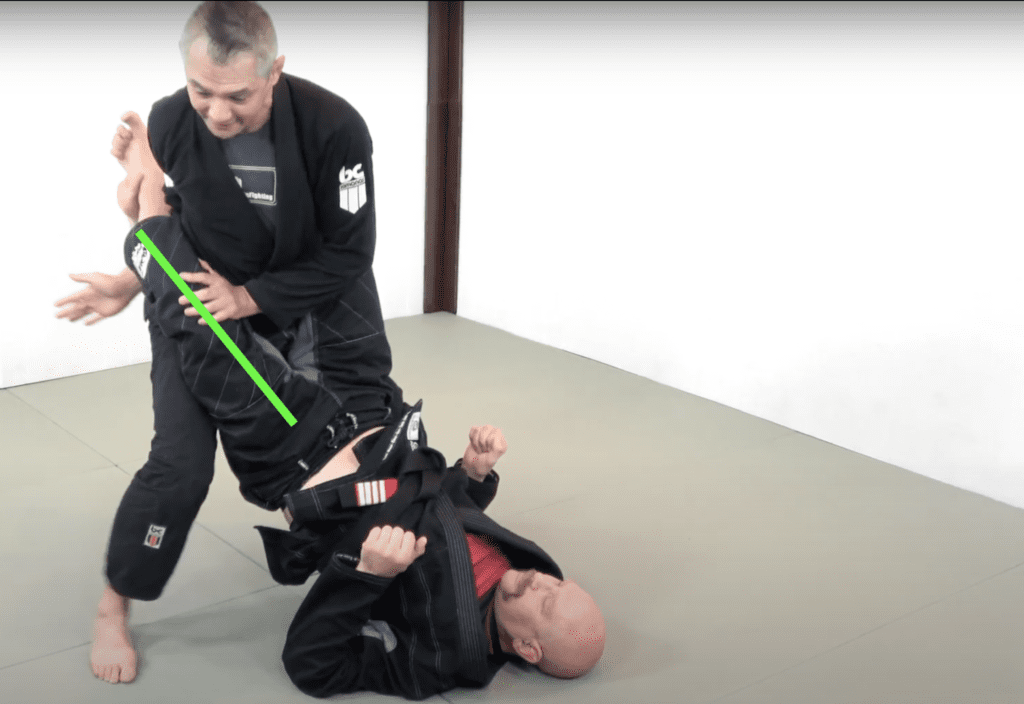
Use this control to turn your partner’s left leg into a lever to get around your partner’s Guard.
Knee Cut Guard Pass
The Knee Cut Guard Pass is a wedge that drives through the clamping ability of your partner’s Guard.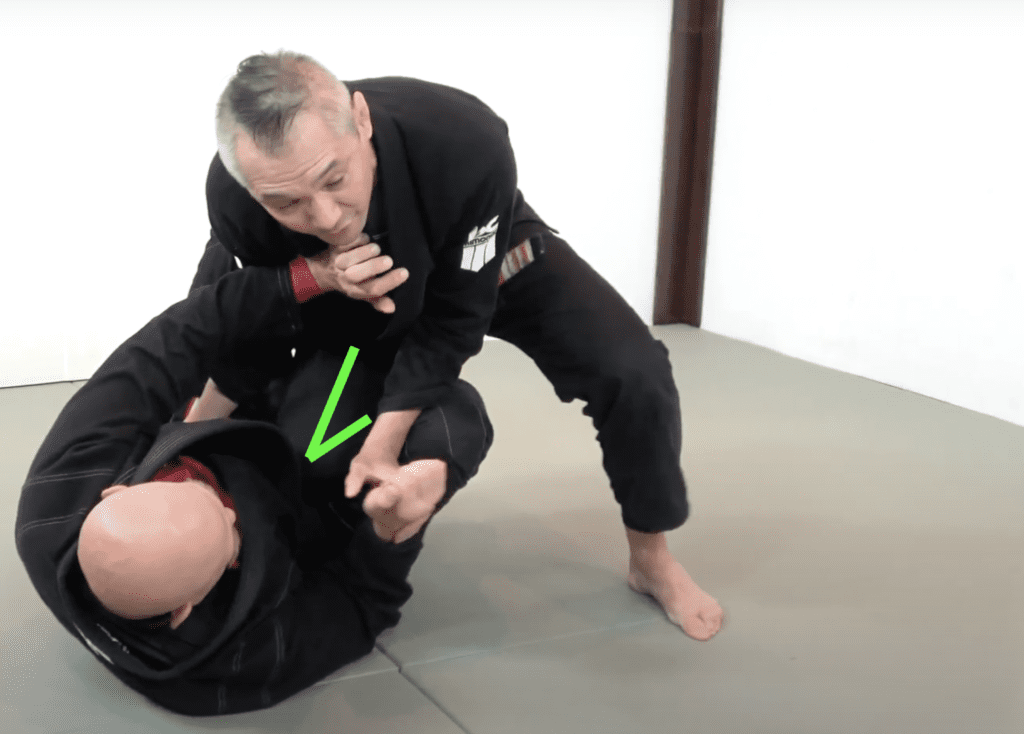
In addition, the narrow leading edge of your knee creates a small surface area for your partner to frame against.
Straight Knee Cut
Your Straight Knee Cut Guard Pass is another example of a wedge.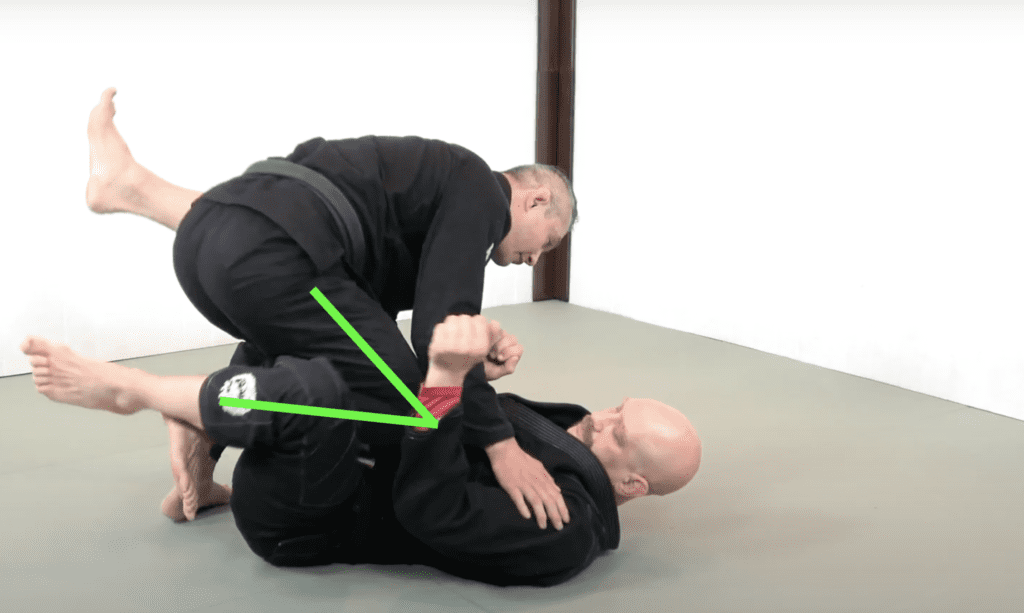
Driving through your partner’s Guard so that is circumvents any clamping or framing from your partner.
Double Under Pass
You can use your partner’s leg and their spine as levers to control their entire body.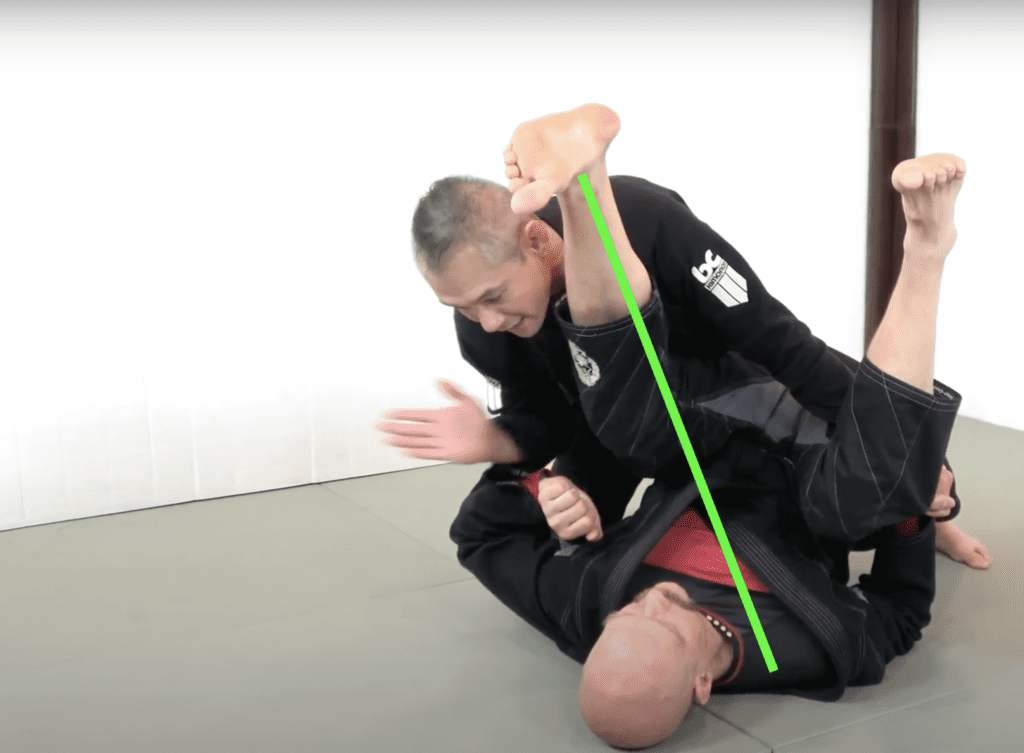
Keep you partner’s hip high off the ground so you have as long of a lever as possible.
Folding Pass
Typically, our partner’s legs act like frames when they’re right from their Guard. Our objective is to turn their frames into levers. To turn a frame into a lever, look to apply force to the side of the stick. 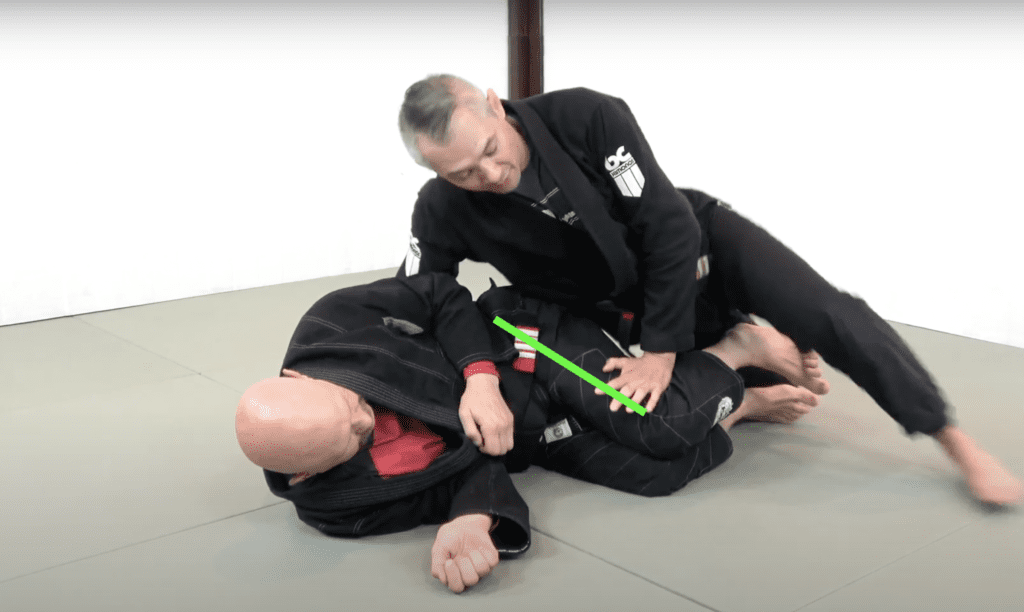
In the case of passing your partner’s Butterfly Guard, turn your hips so that force goes to the side of your partner’s legs. Keep your partner’s legs folded to complete this BJJ technique.
Matador Pass
Your partner’s Guard is a set of sticks and sticks can be either frames or levers. As your partner is looking to use their legs as frames. You’re looking to use their legs as levers to control the rest of their body.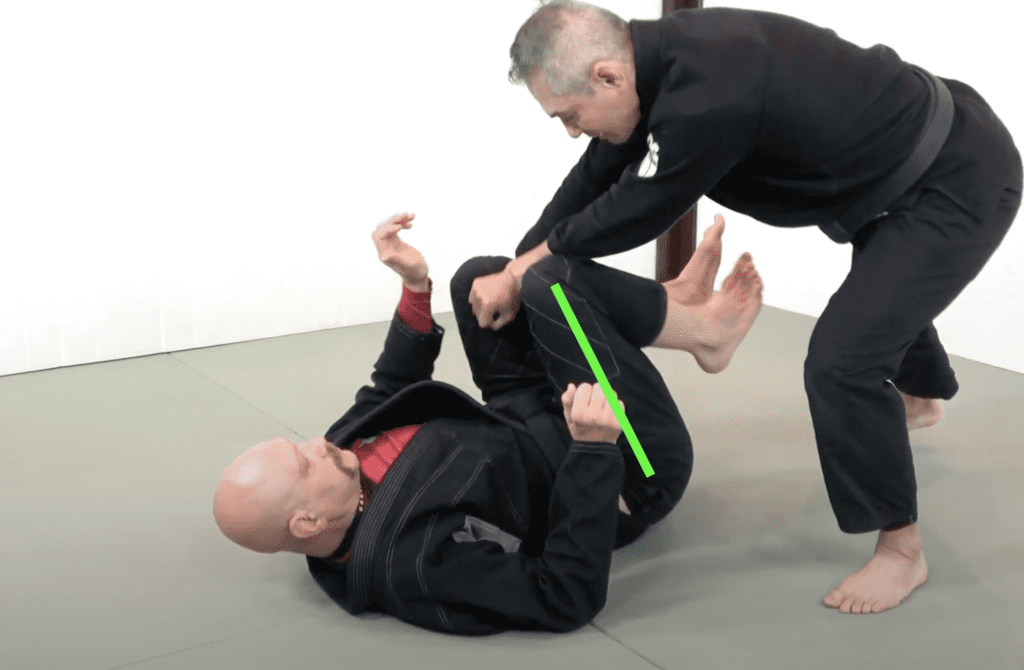
By grabbing onto their pant legs, push their legs across to get past their Guard.
Defenses
If your partner is controlling you by having turned your spine, arm, or leg into a lever, the first step in defending your partner’s attack is to extract the lever and to turn the lever back into a frame.
Omoplata Defense
When attacking with an Omoplata, there’s two levers at play. The first lever is your spine and the second lever is your forearm. Firstly, you need to get your head up; thus, turning your spine back into a frame.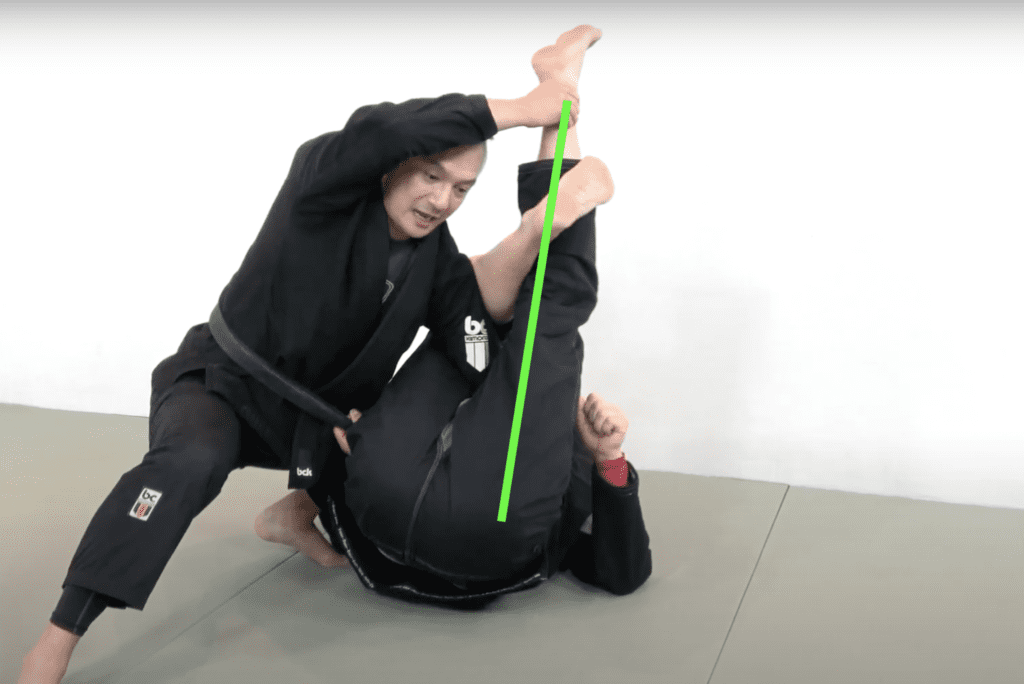
Next, control your partner’s foot to turn their leg into a lever, and turn your thumb so you can pull your arm free.
Guillotine Choke Defense
Imagine the Guillotine Choke like a paper cutter. Your neck is the sheet of paper. Your partner’s shoulder is the base of the paper cutter.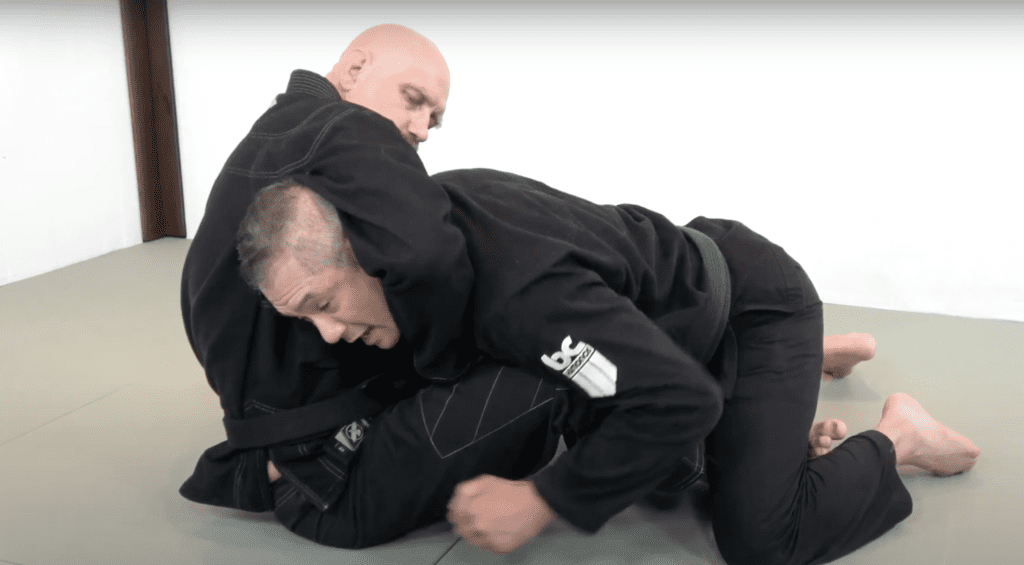
And your partner’s forearm is the blade of the paper cutter. Turn your head so your left ear is against your partner’s sternum so now there’s no paper for the paper cutter to cut.
Triangle Choke Defense
For the Triangle Choke to work, the main lever to attack is the spine; thus, defending the Triangle Choke, the first step ought to be getting your posture back.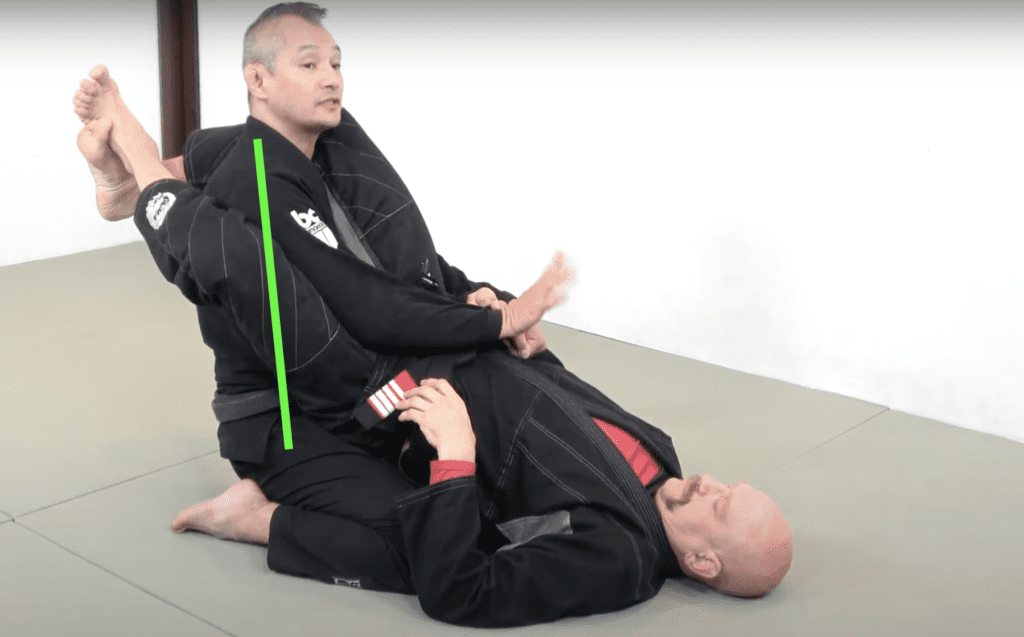
Once the posture is established, look to get your second hand back inside.
Armbar From Guard Defense
There’s two levers at work when you’re attacking an Armbar From the Guard. You need to attack the lever of the spine and bring your partner’s head as close to the mat as possible. Also, you’re turning their arm into a lever; and thus, into a stick that you’re trying to break.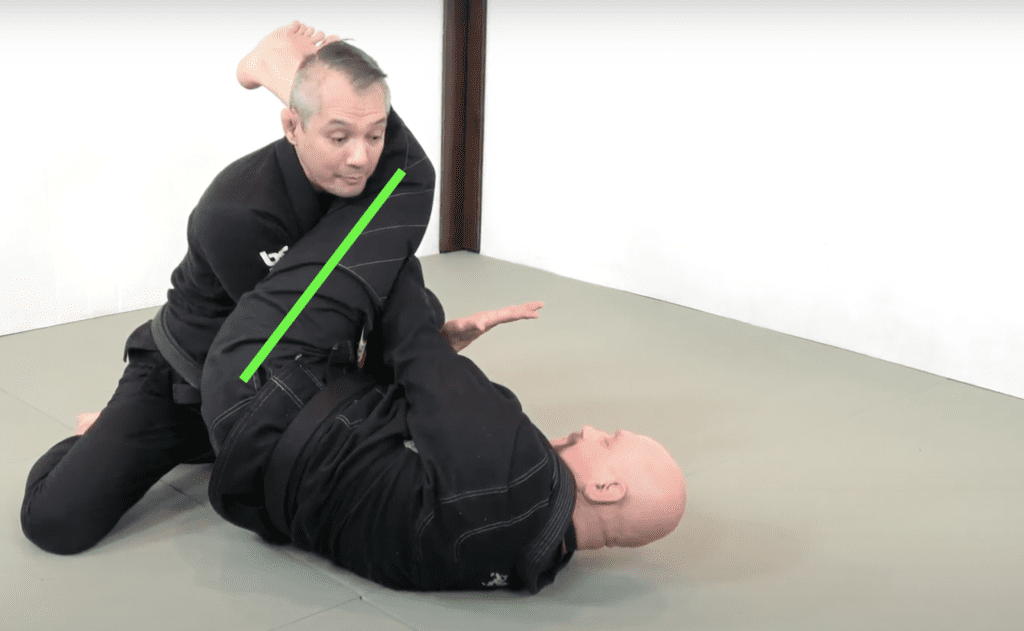
To defend the Armbar, firstly, bend your elbow to shorten the lever. Next, build up your posture so that you’re spine is a frame and your nose is directly over your partner’s nose. Control your partner’s leg as a lever and pull your arm free.
Armbar From Mount
If your partner is attacking you with an Armbar from Mount, the key thing is to look to get the lever of your arm back. Begin by bending your elbow, grabbing on to your own lapel to shorten the lever as much as possible. Turning levers back into frames is the key behind all defensive BJJ techniques.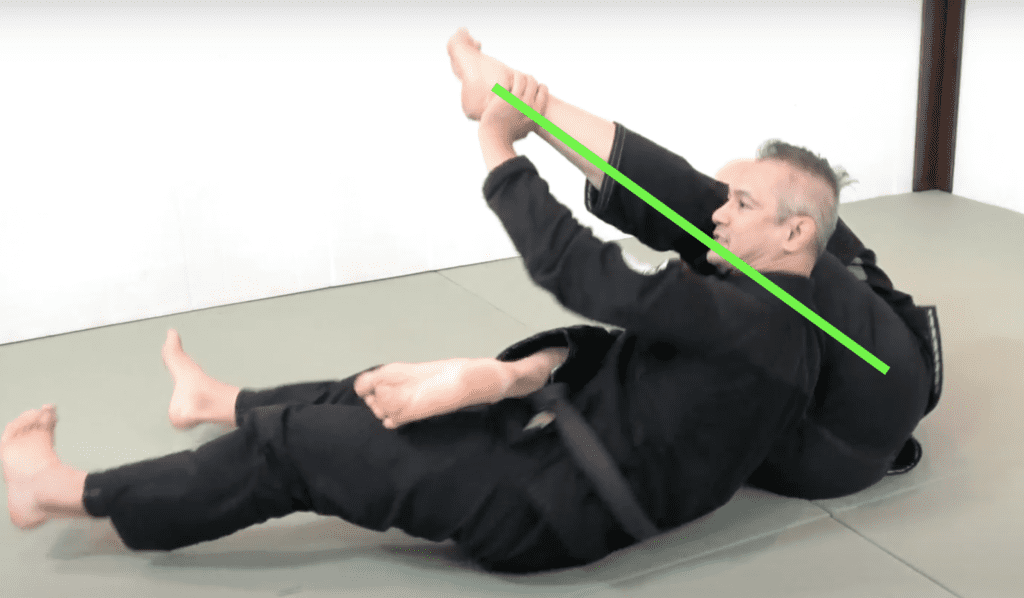
As well, bench press your partner’s heel up to turn their leg into a lever. And now, fight to get your elbow back to your hip.
Kimura Defense
Jiu Jitsu is just stick fighting and the battle between frame and levers is the key principle behind all BJJ Techniques.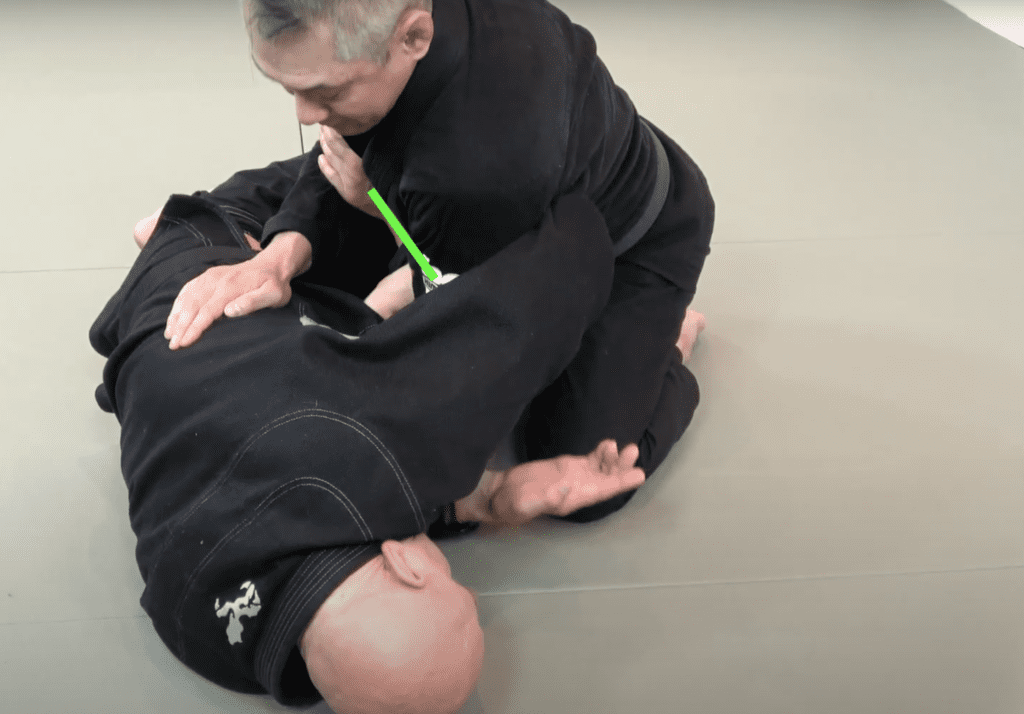
When your partner is attacking you with a Kimura, grab the base of your hand, bring your left hand into your left armpit to extract the lever.
Cross Lapel Choke From Mount Defense
A Cross Choke from Mount is done by turning your forearms into a scissor; and thus, you need to disassemble the scissor to defend the choke. The best way to do BJJ technique is to not let the second hand come in to control your lapel. A scissor needs two blades to work. Constantly bridge so that your partner’s second hand is posting on the floor. At the right moment, bridge and roll to escape Bottom Mount.
Cross Lapel Choke From Guard Defense
A Cross Choke from the Guard is basically you turning your forearms into a pair of scissors. And thus, the defense is to not let your partner get their second hand on to your collar. Scissors can’t function with only one blade. If both hands are on your collar, walk your head north of your partner.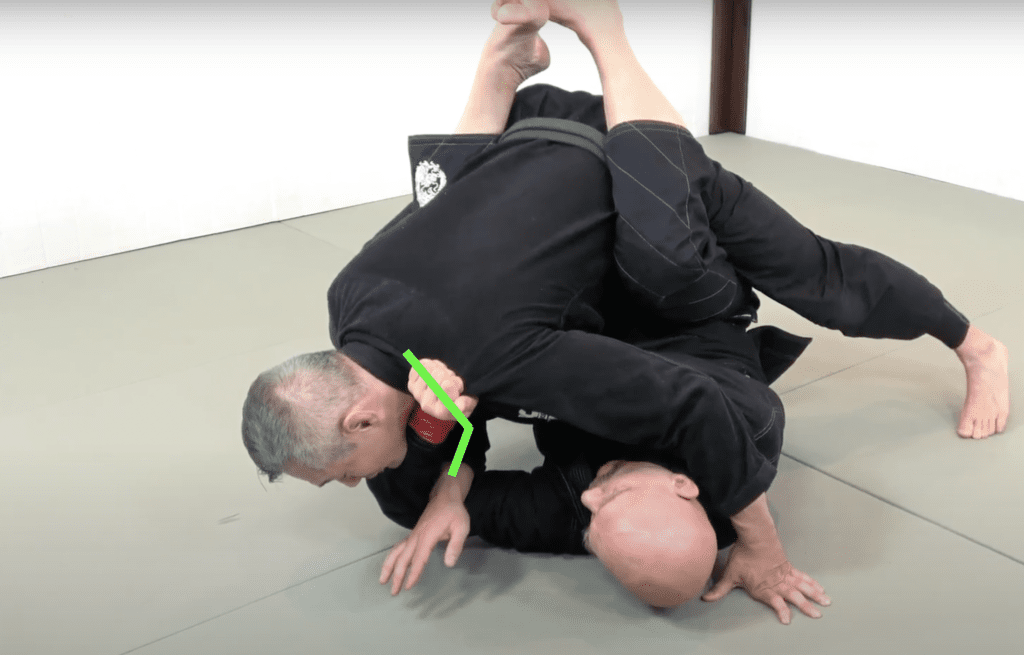
Keep one hand on the ground and push your partner’s elbow up so that the scissors are out of alignment.
Bow & Arrow Choke
The Bow & Arrow Choke is essentially a paper cutter. Your neck is the sheet of paper and your partner’s hand on your collar is the blade of the paper cutter. Position your head so that your head is on your partner’s sternum and your spine is parallel to your partner’s spine. Now there’s no paper for the paper cutter to cut.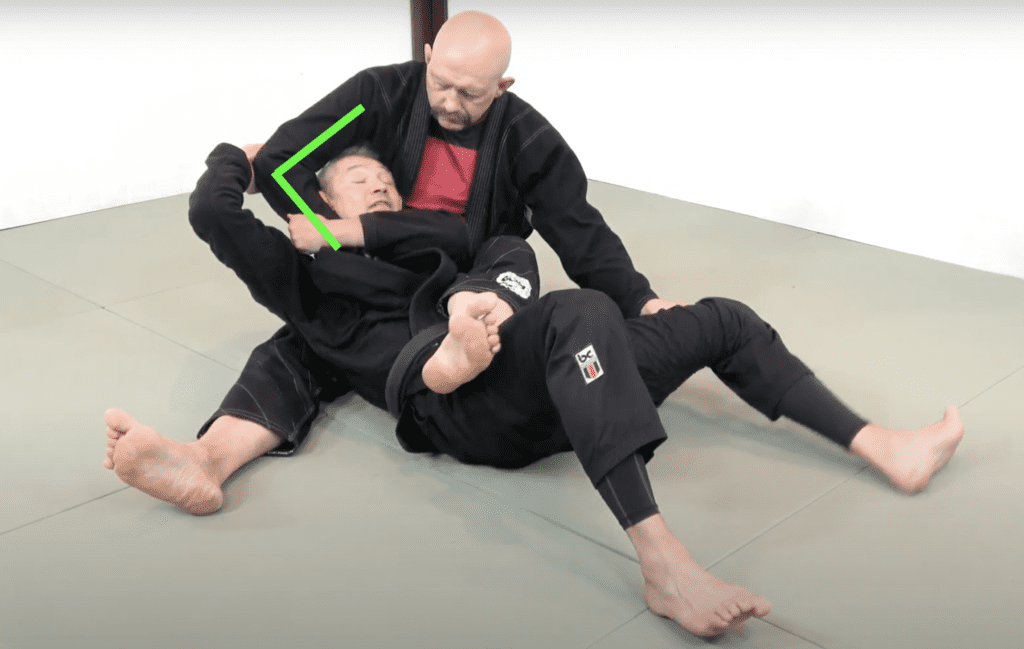
Bring the crown of your under your partner’s armpit to slip out of the choke and to get past the blade of the paper cutter.
Conclusion
Beginner’s learn principles through techniques.
Advanced practitioners invent their own techniques through their understanding of principles

